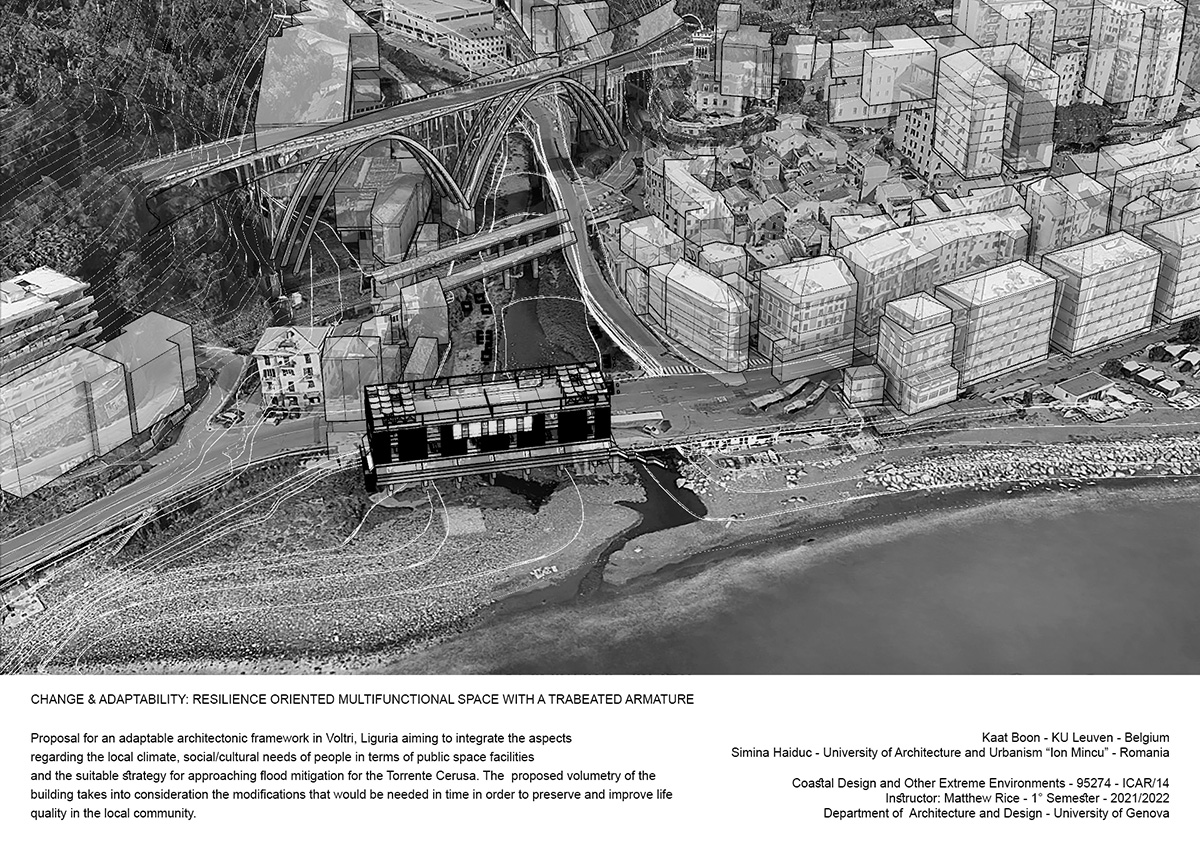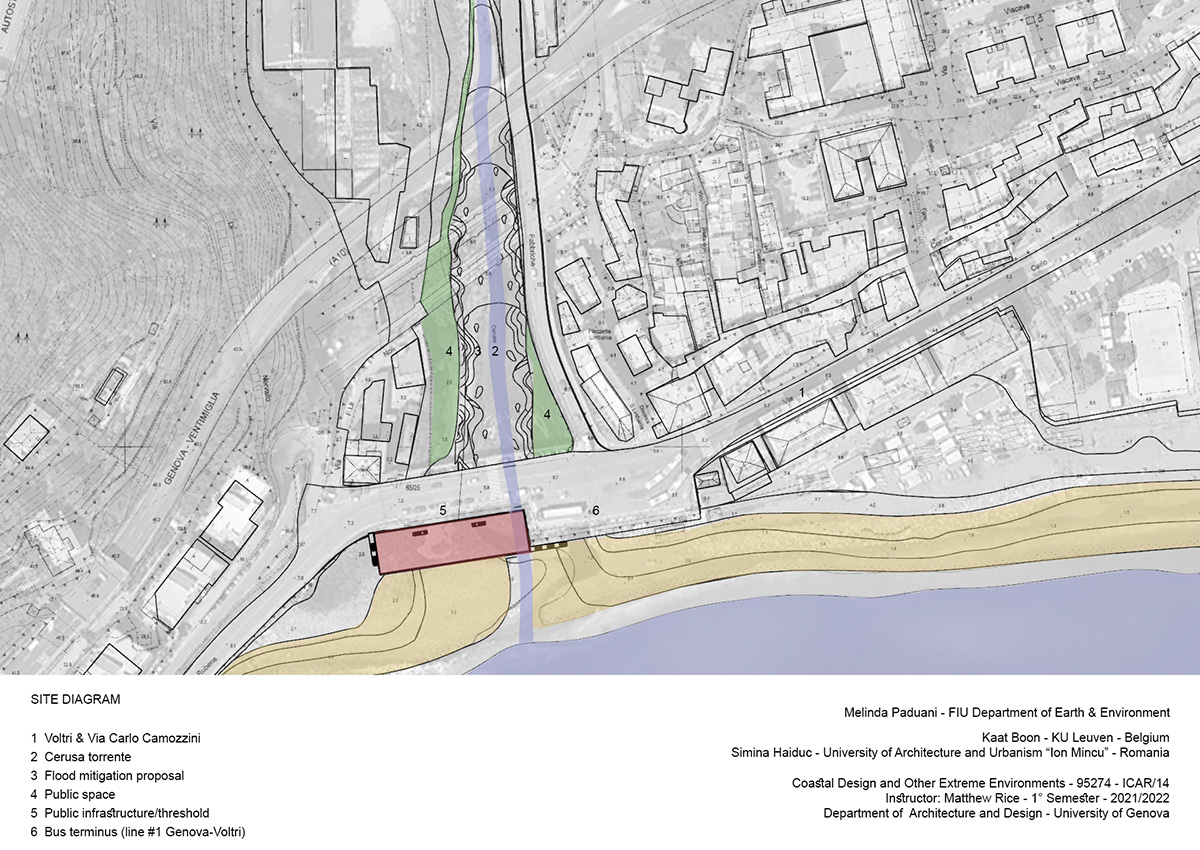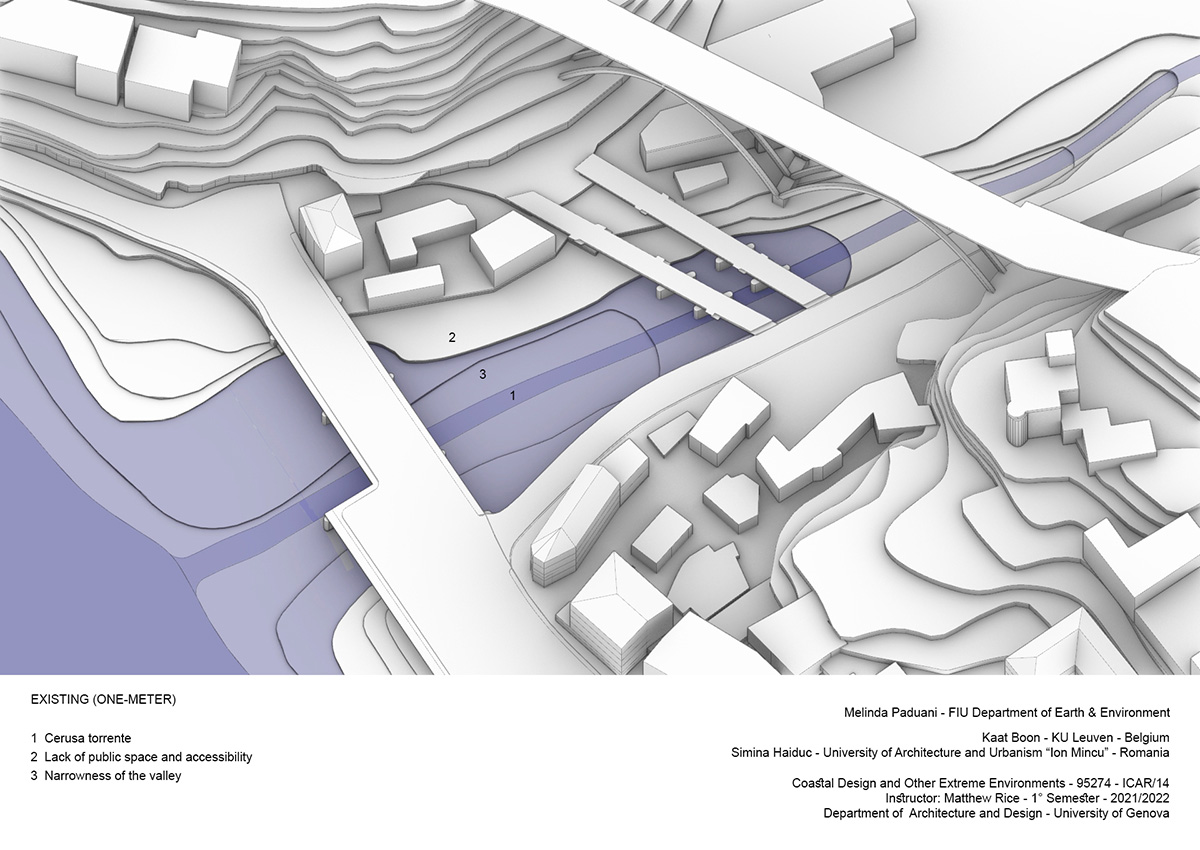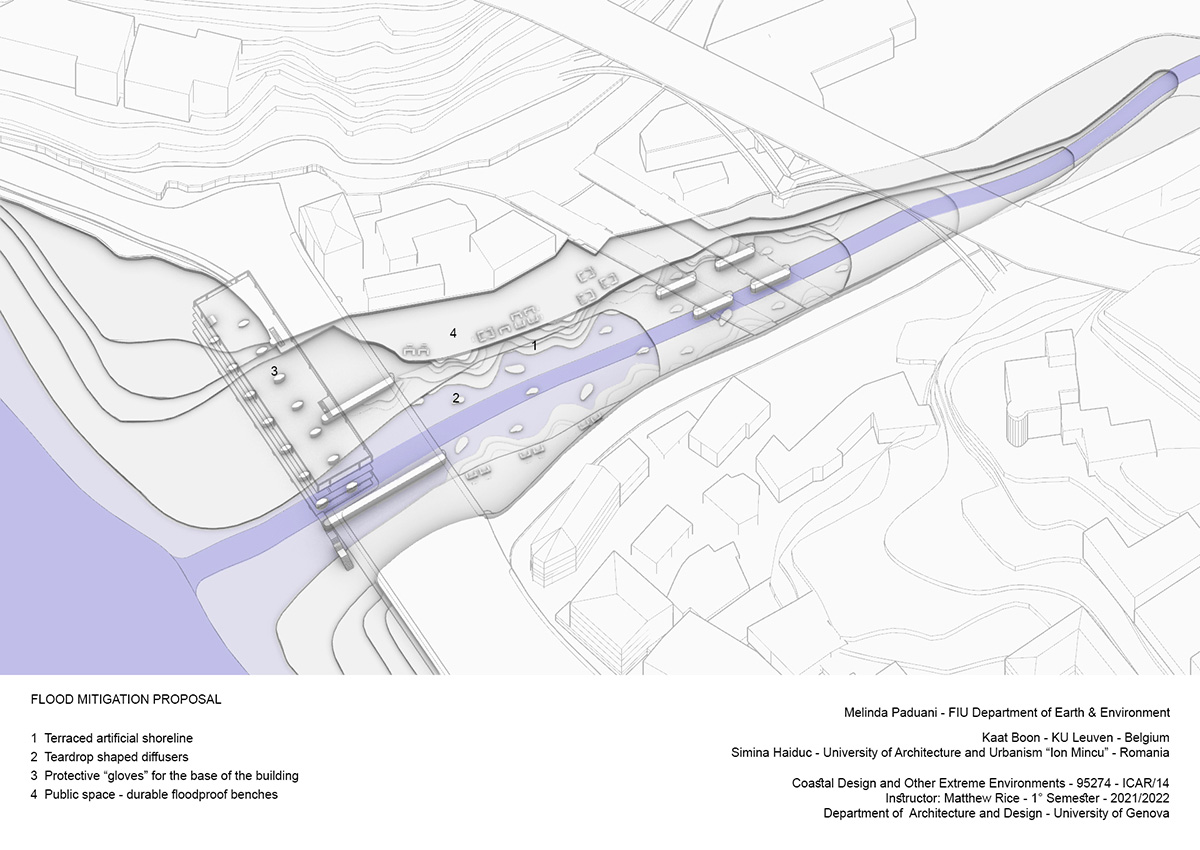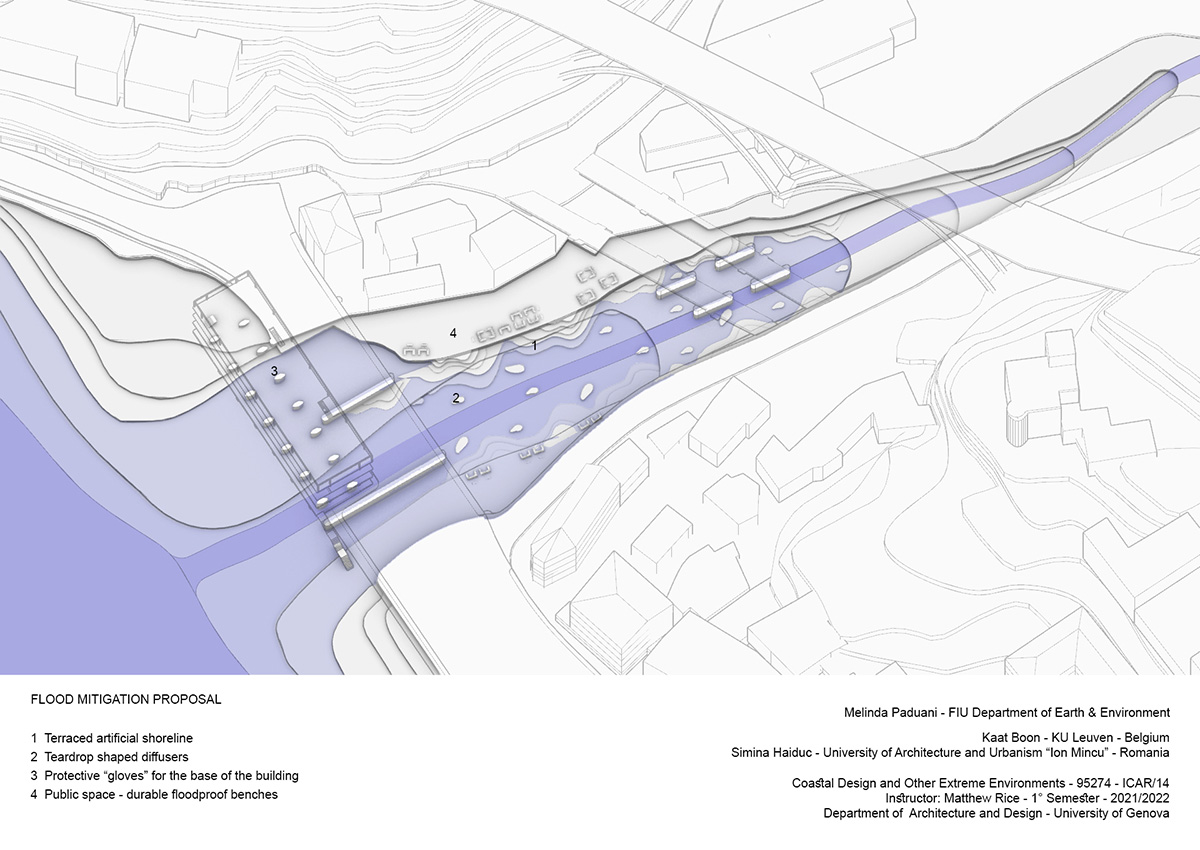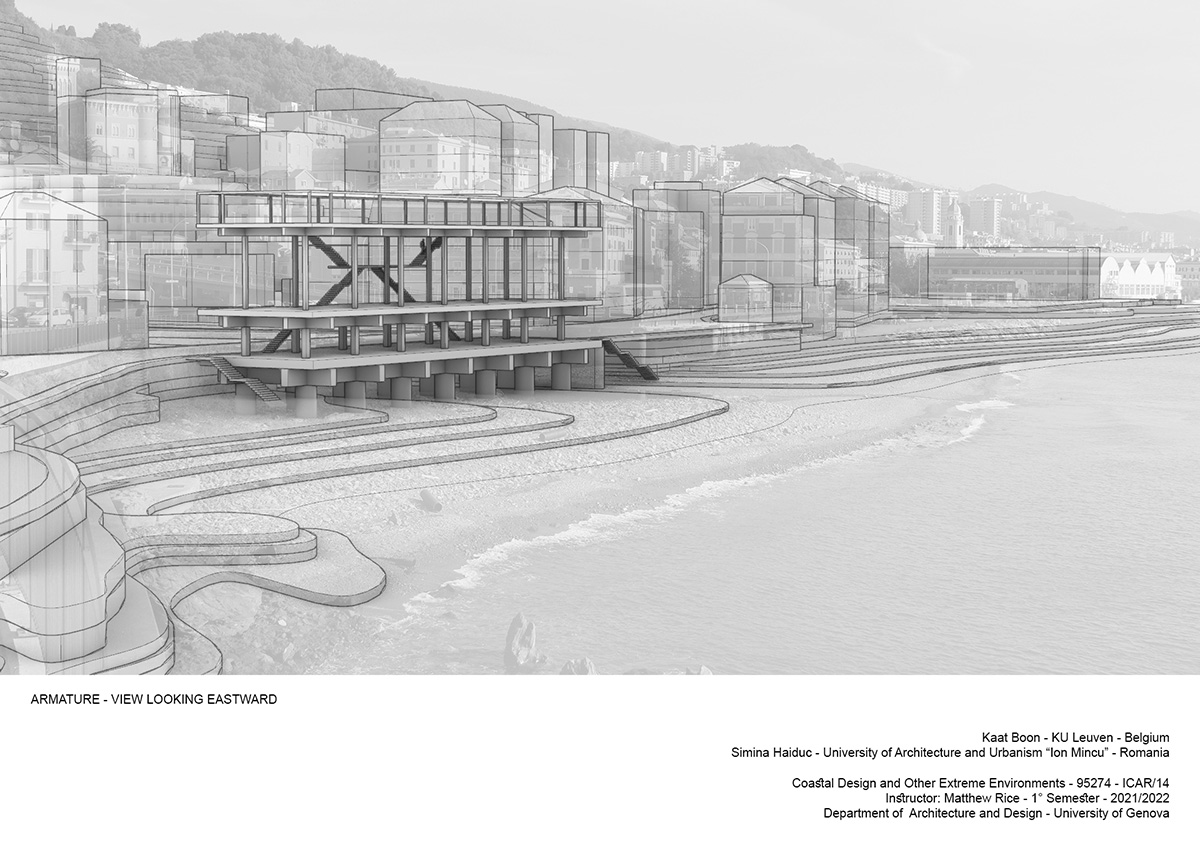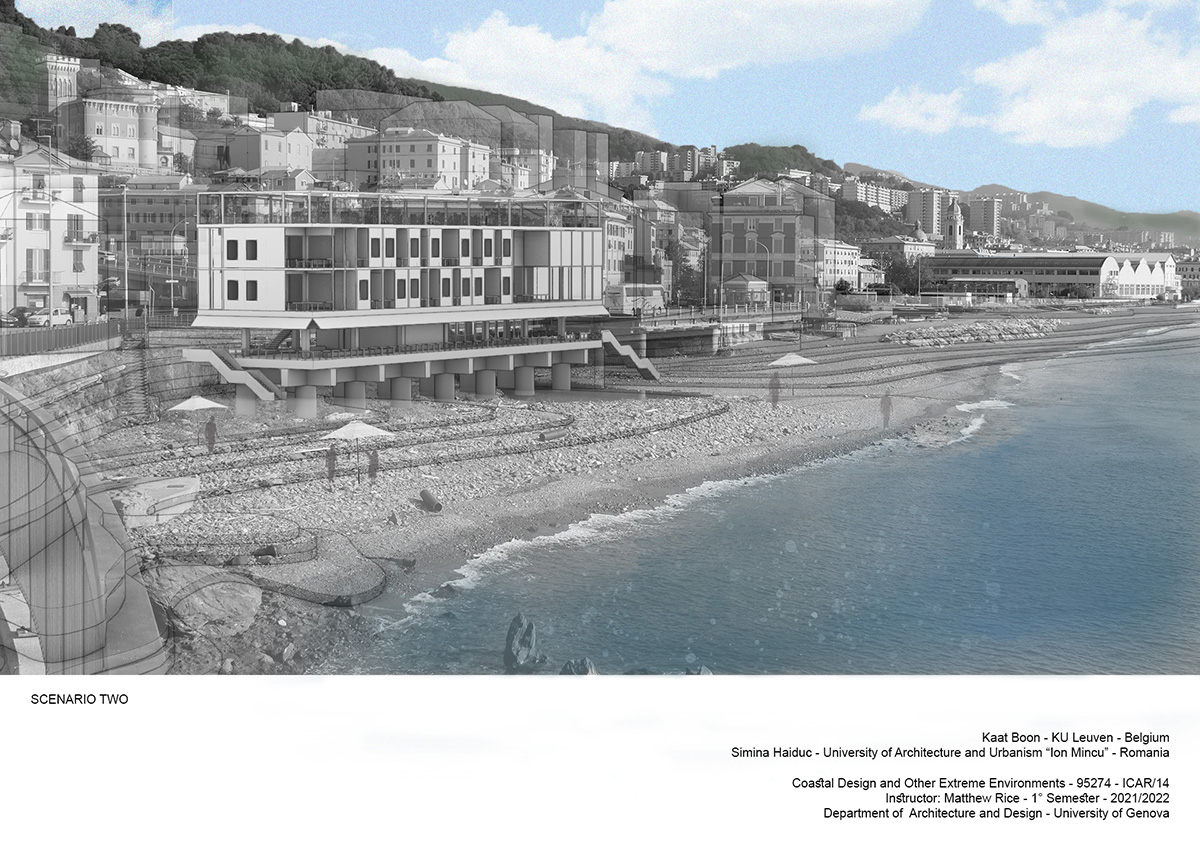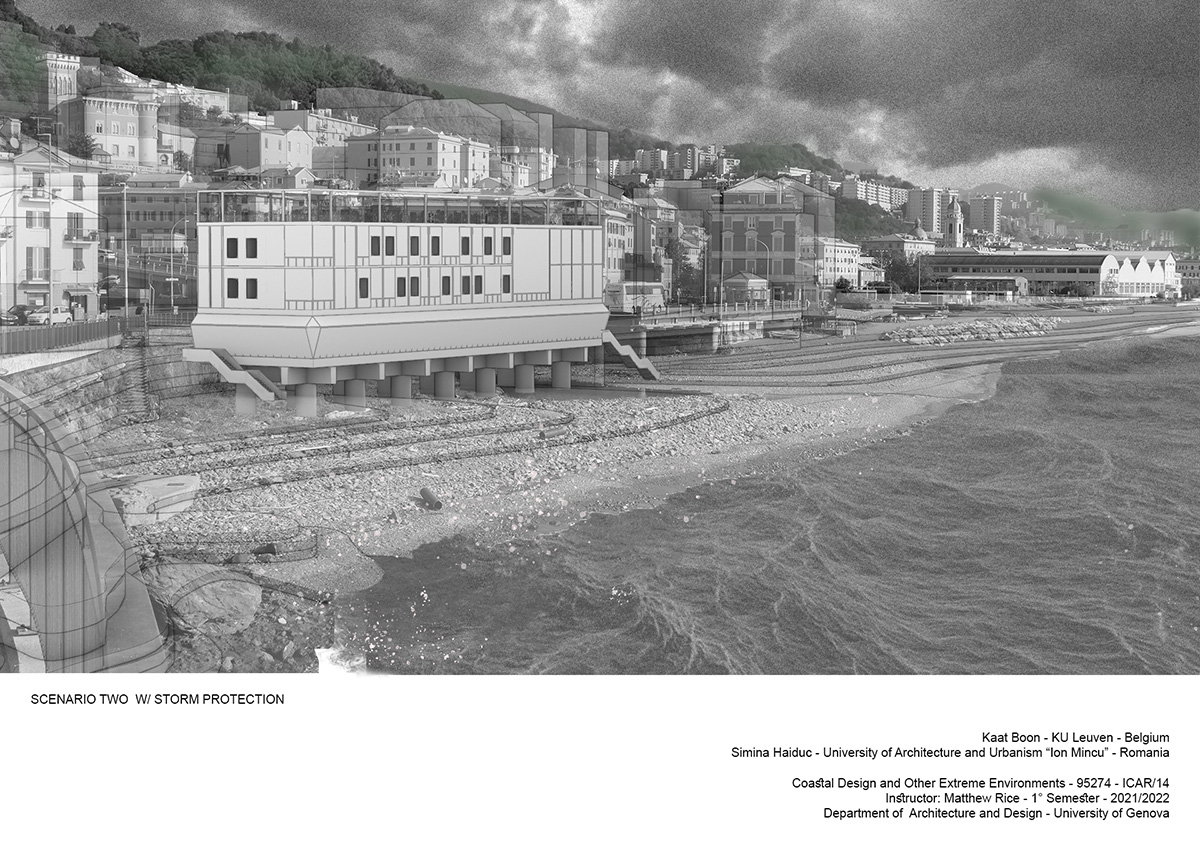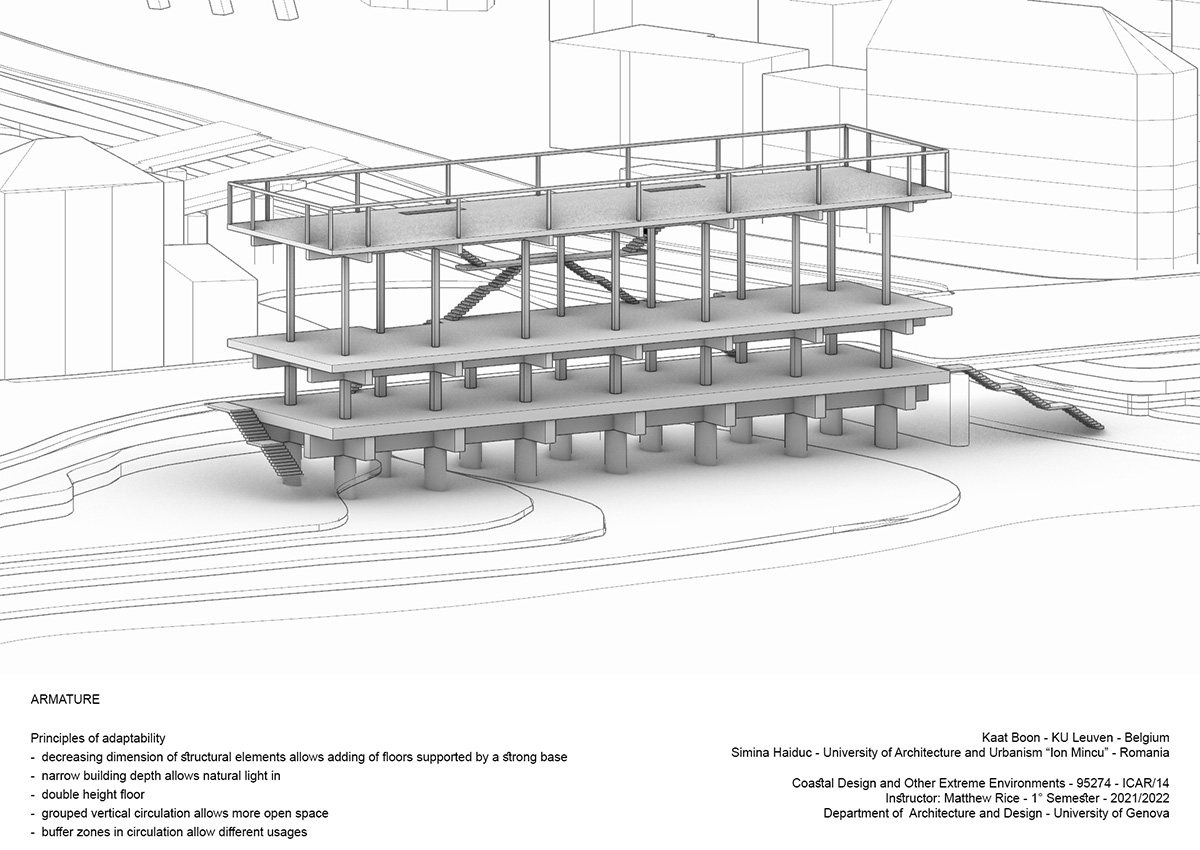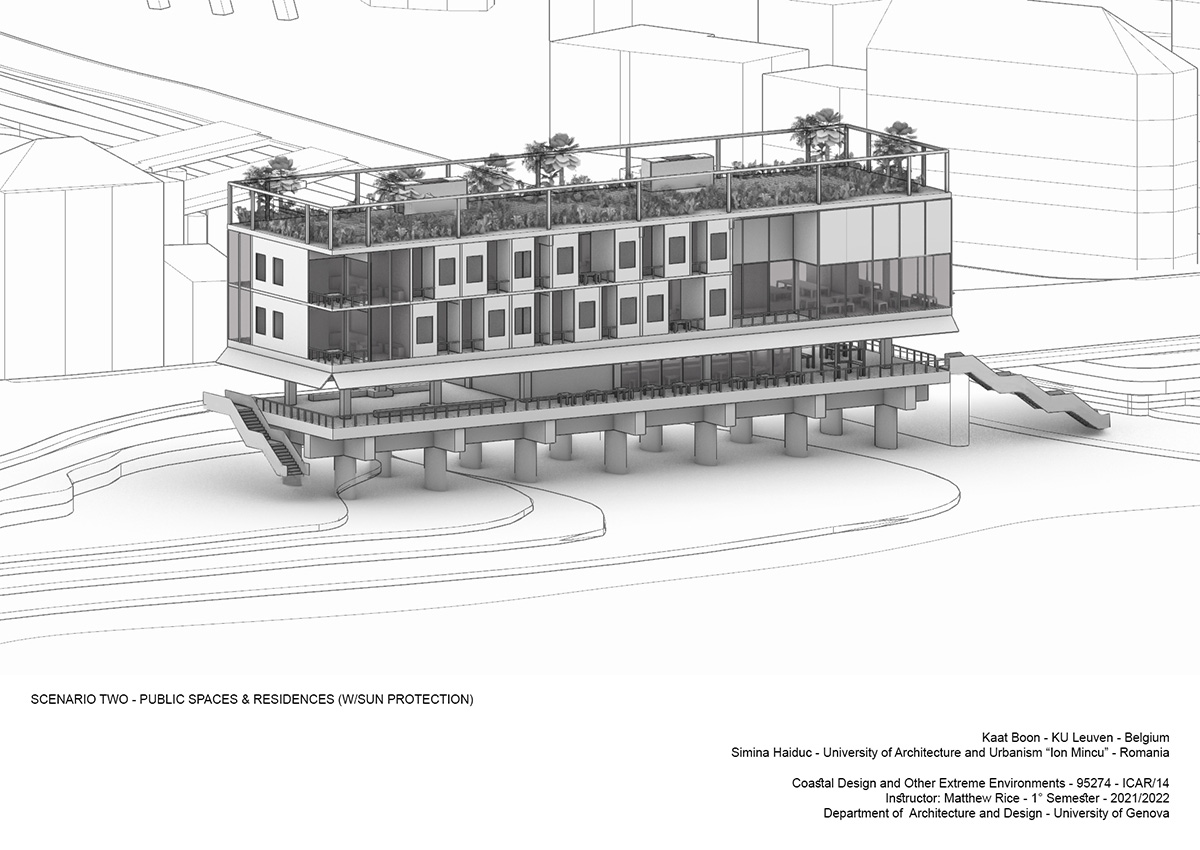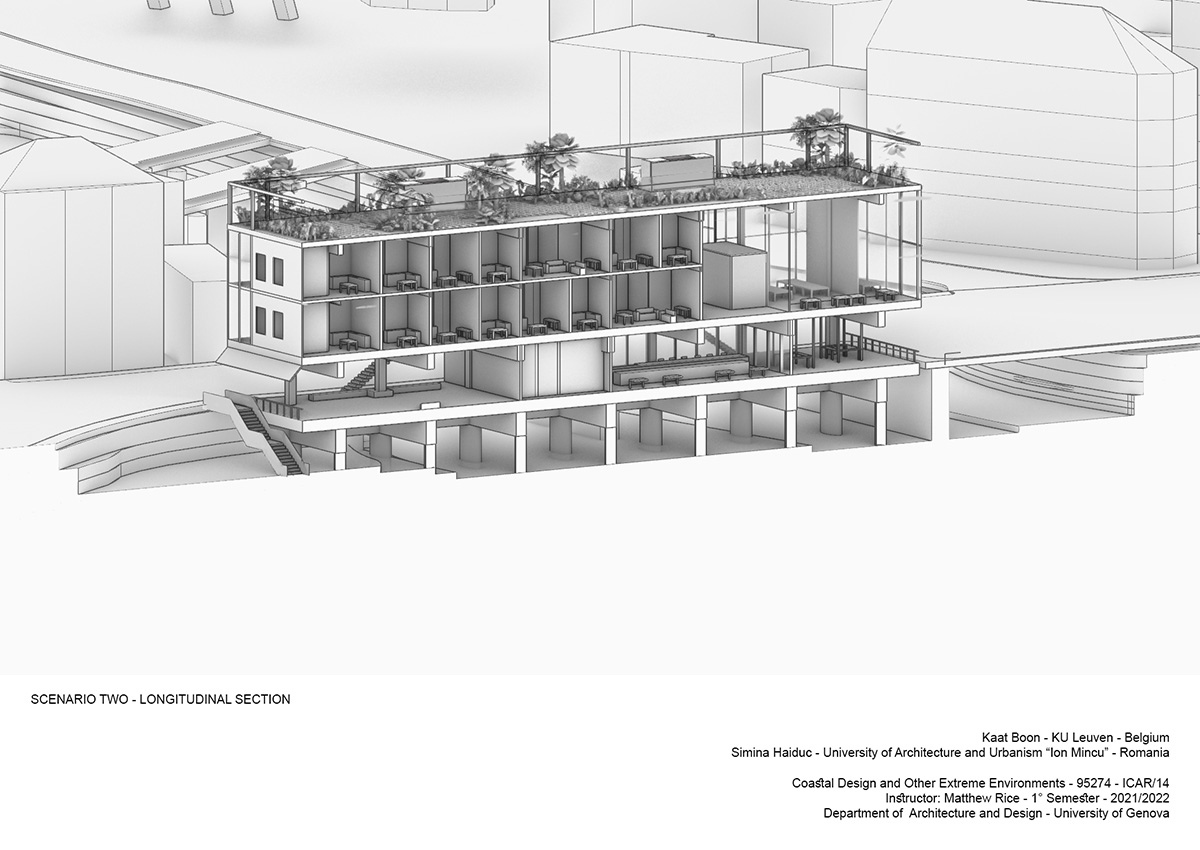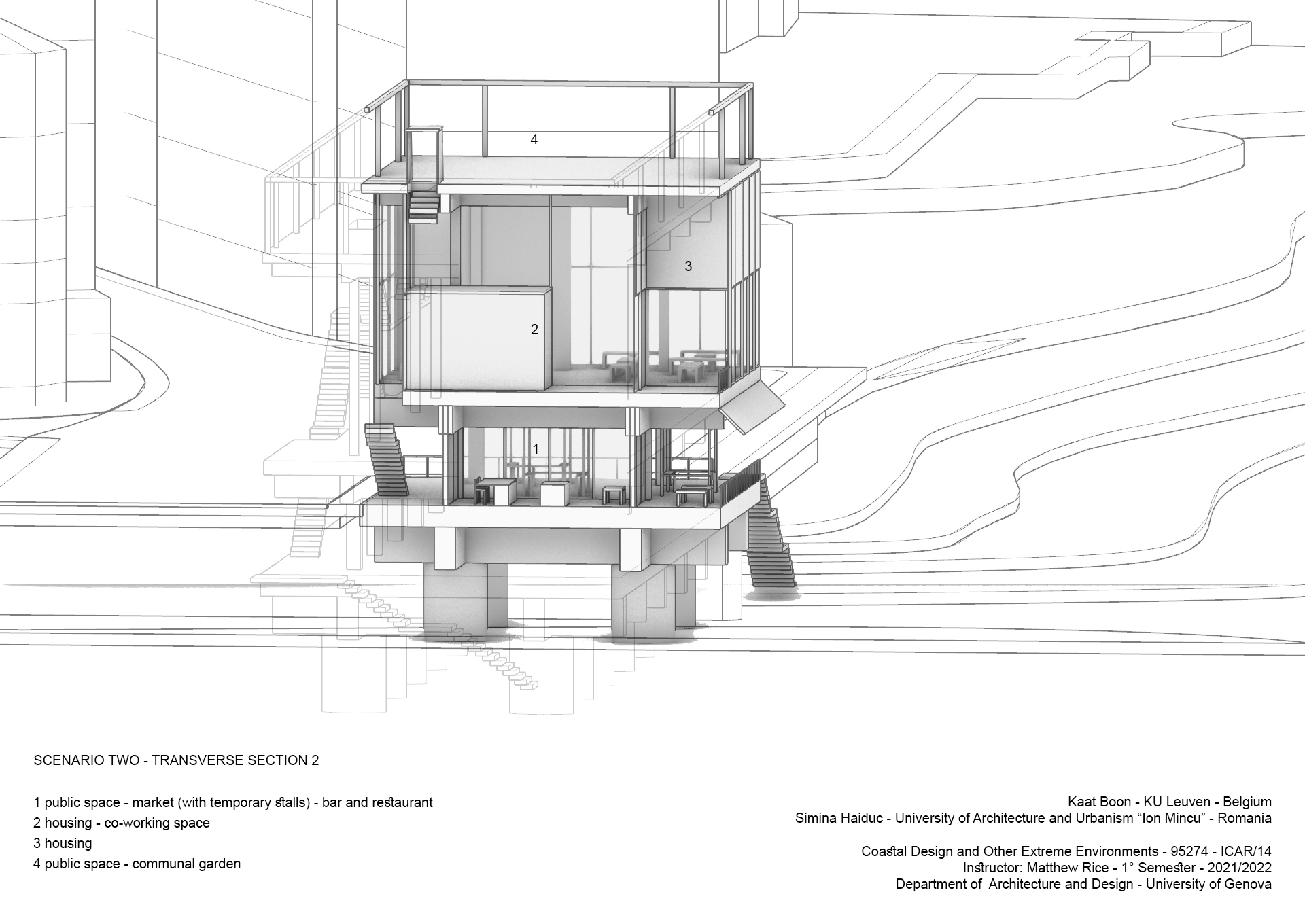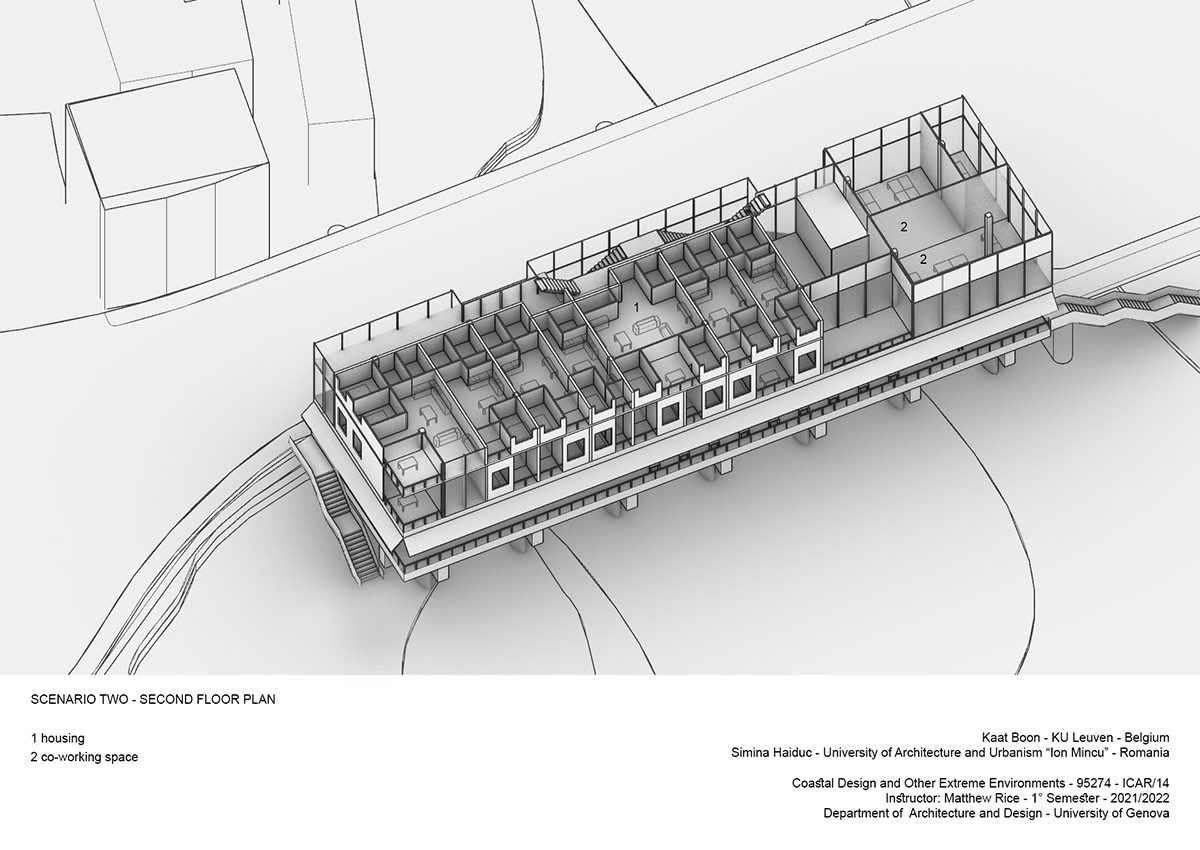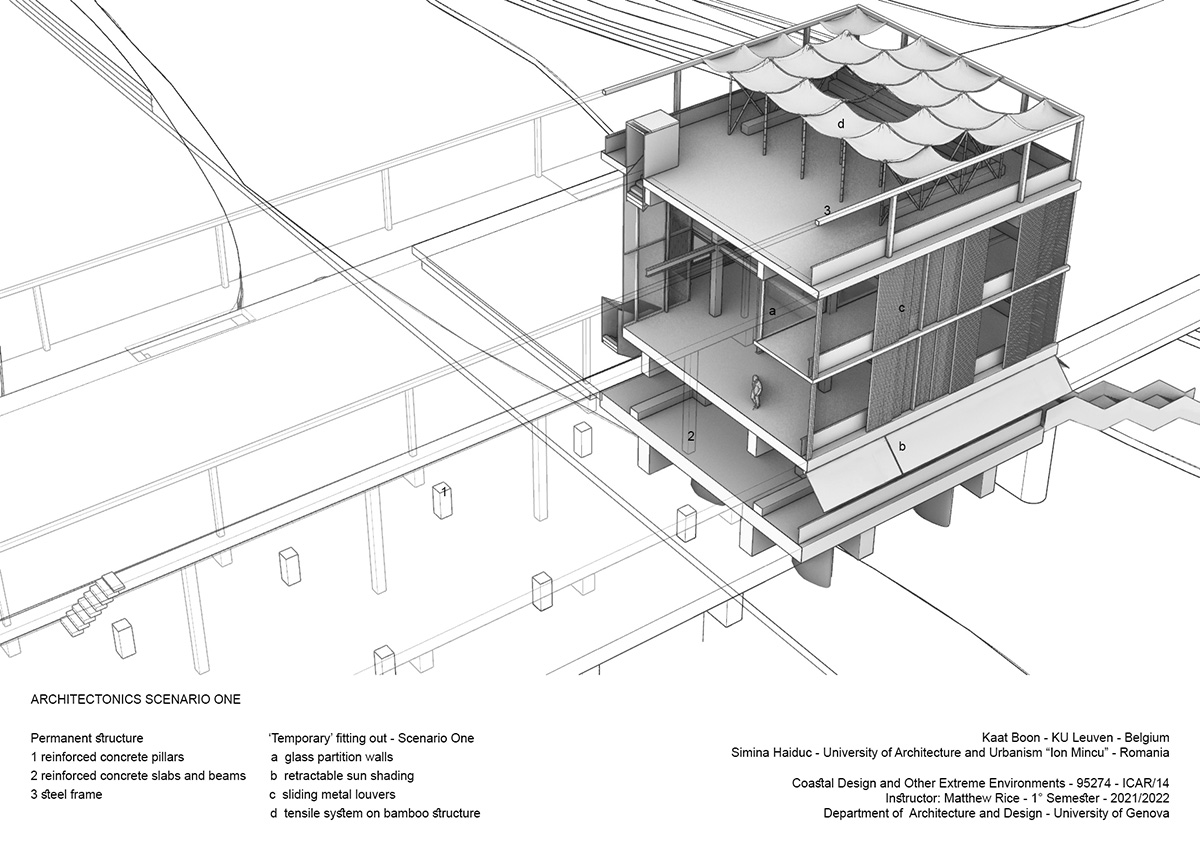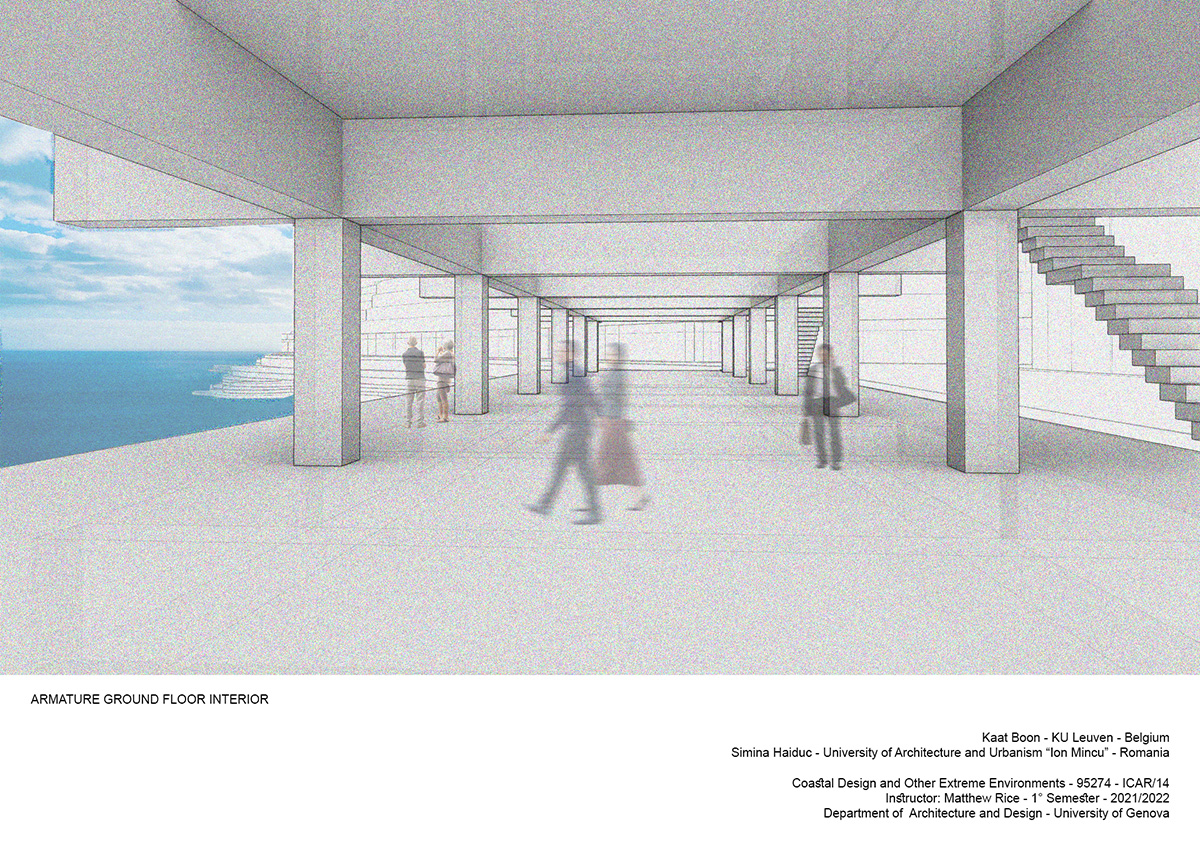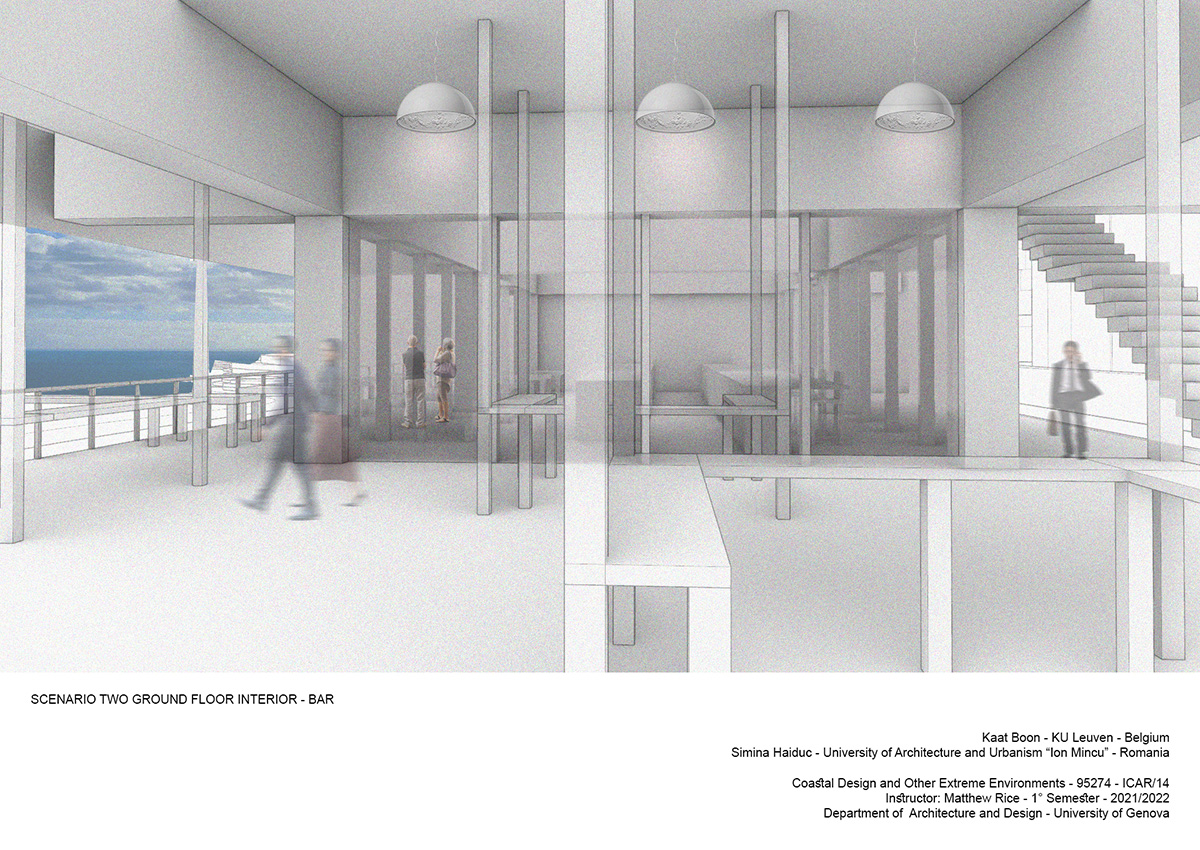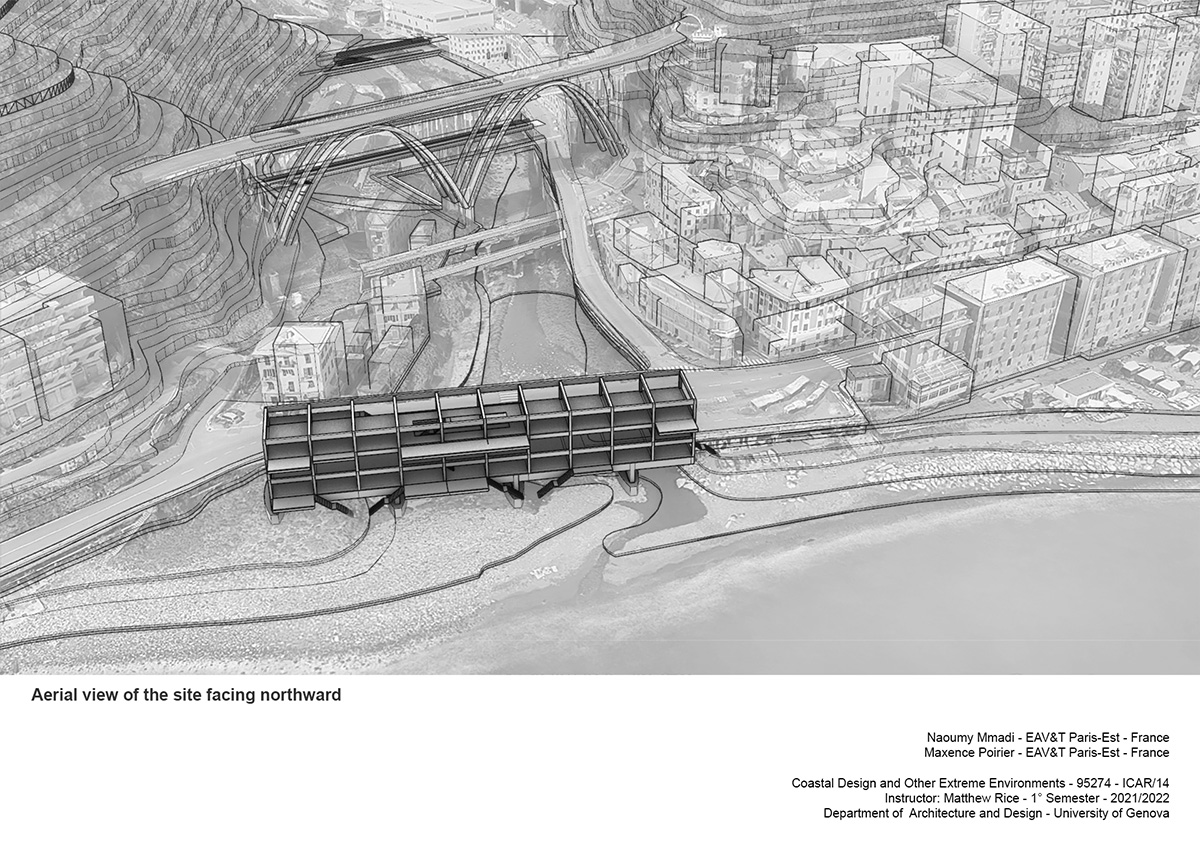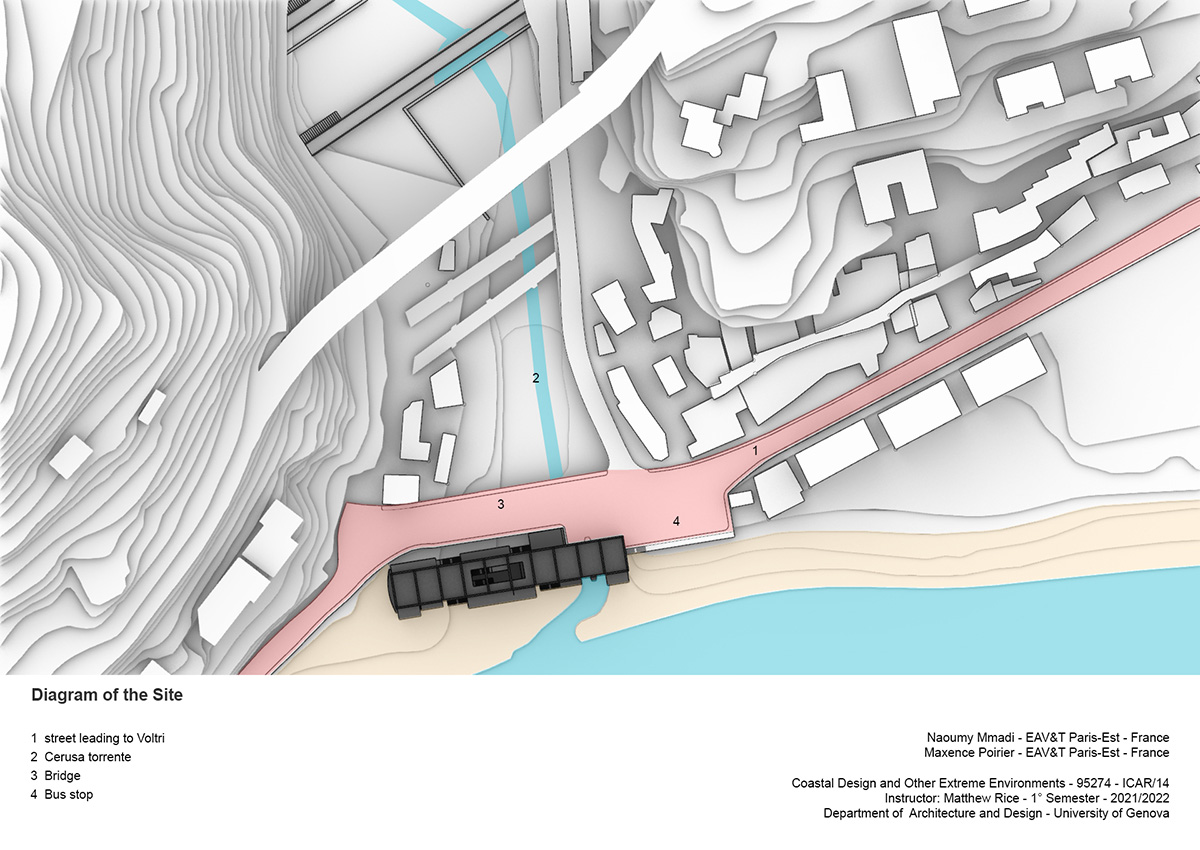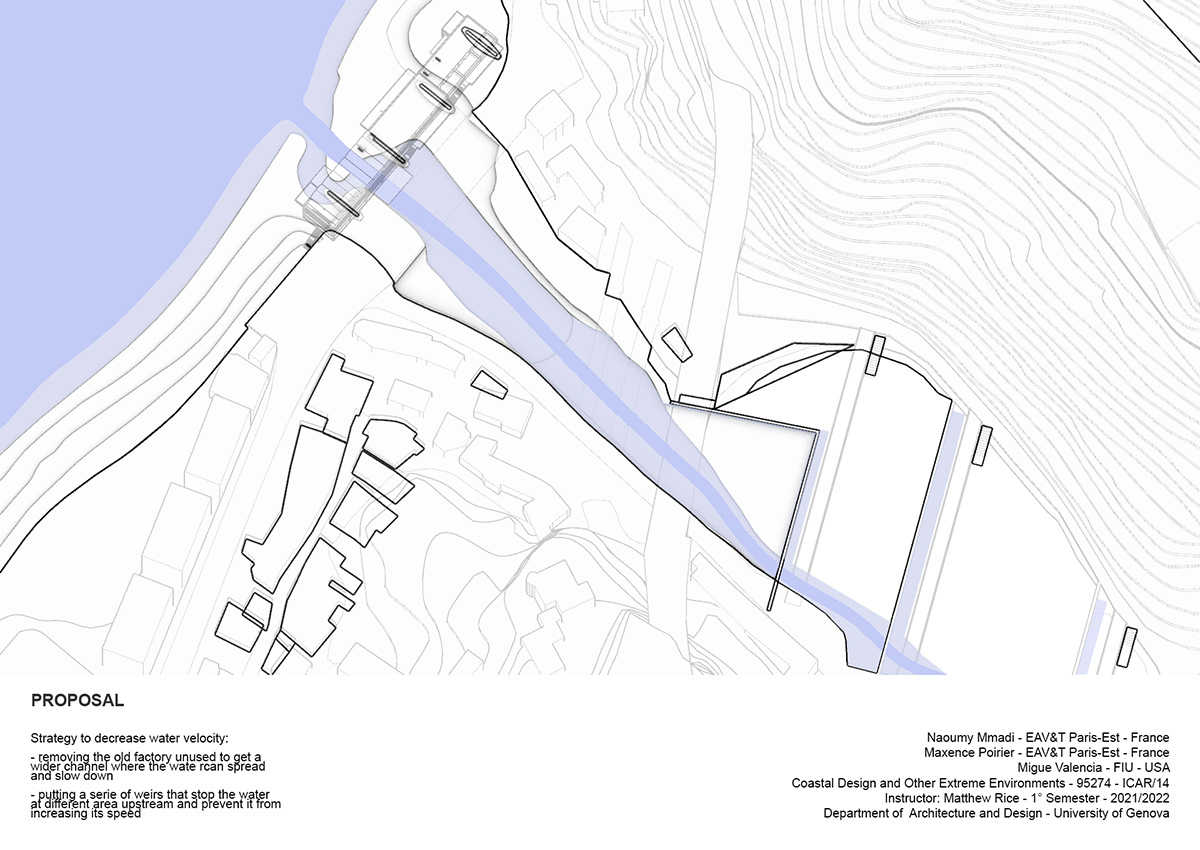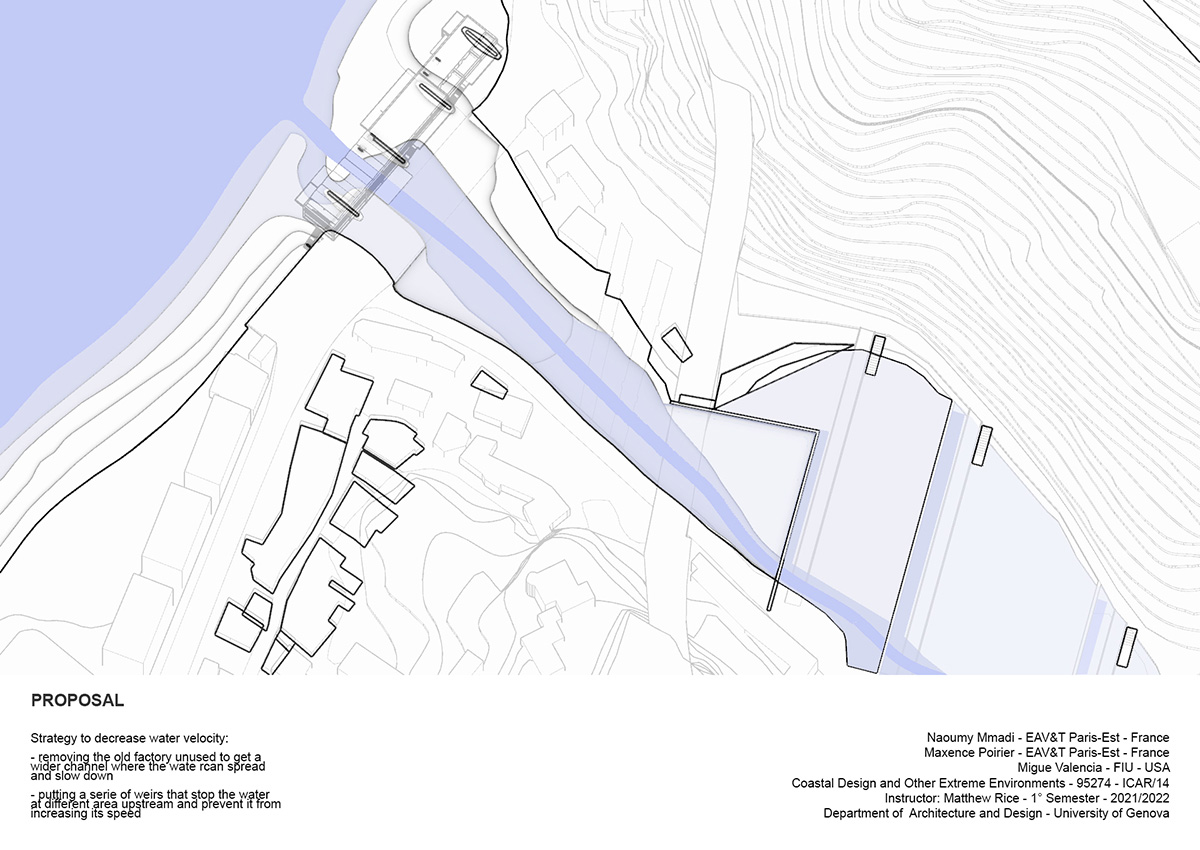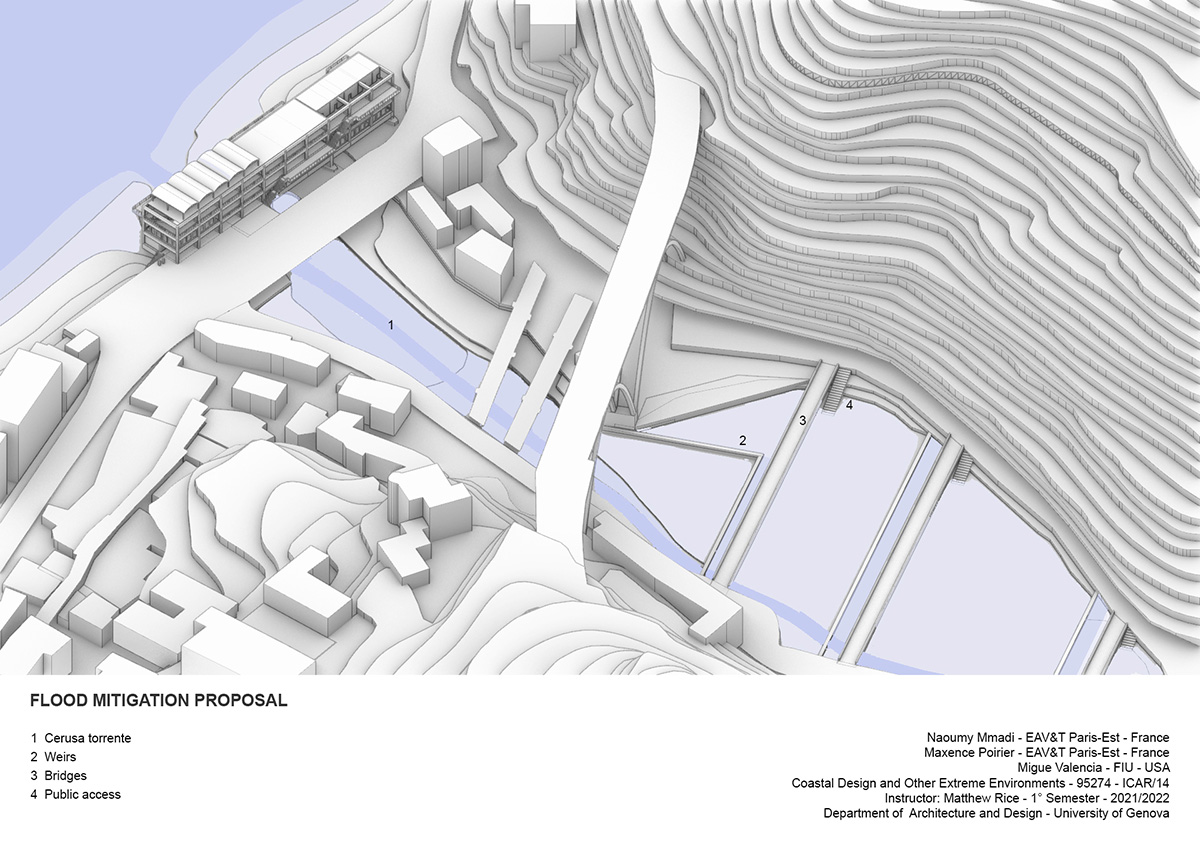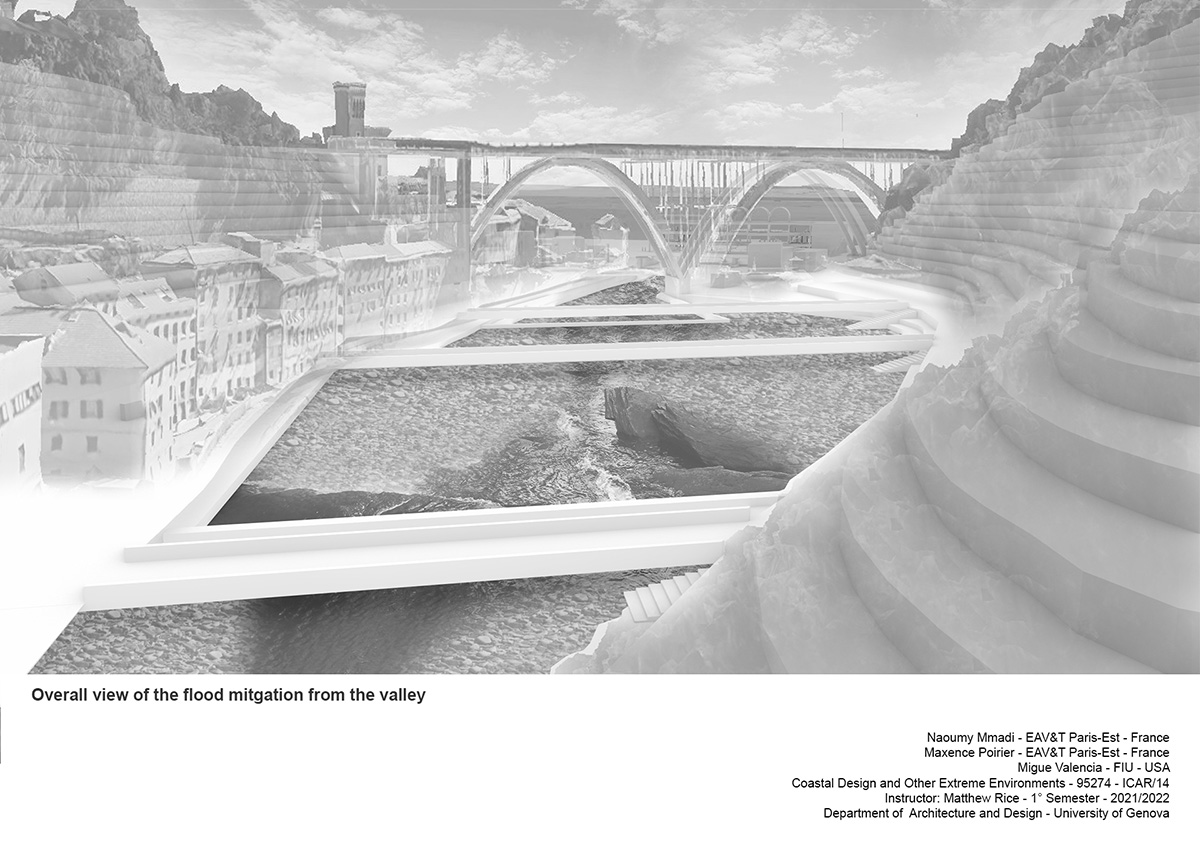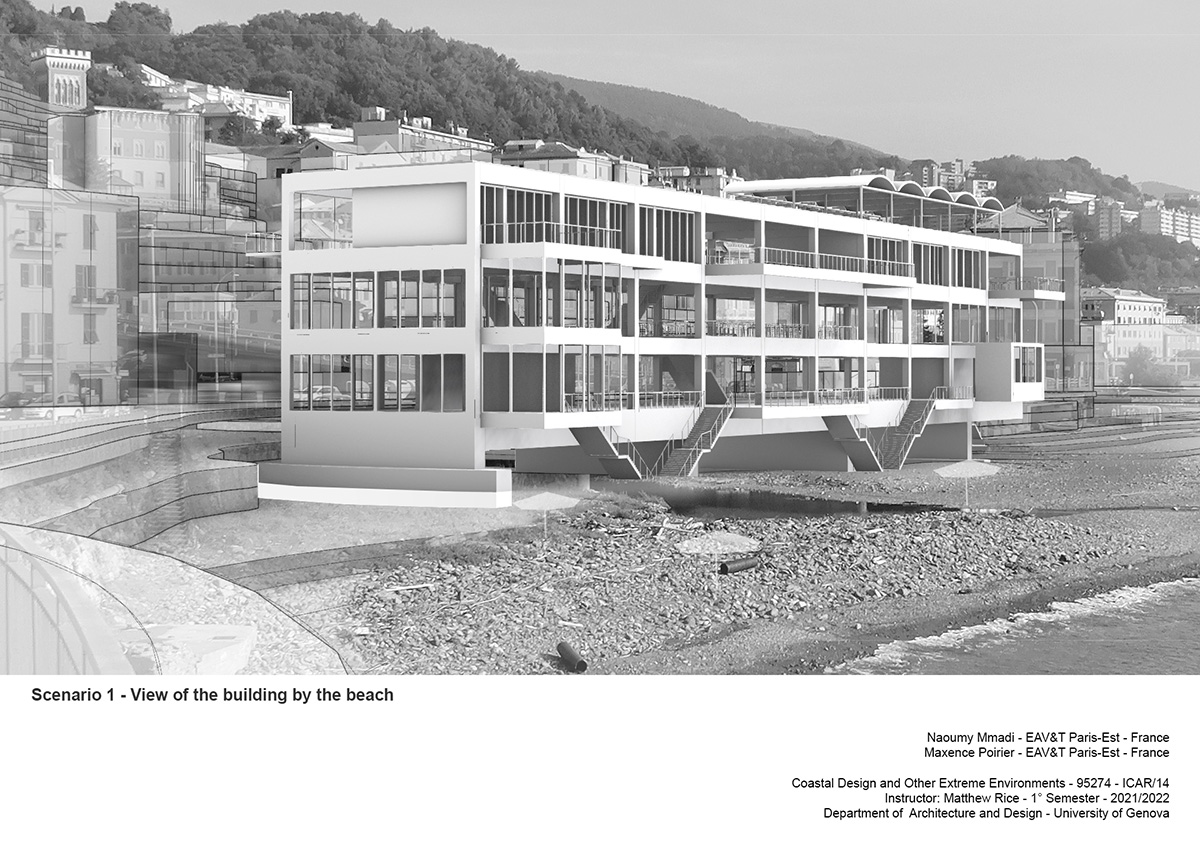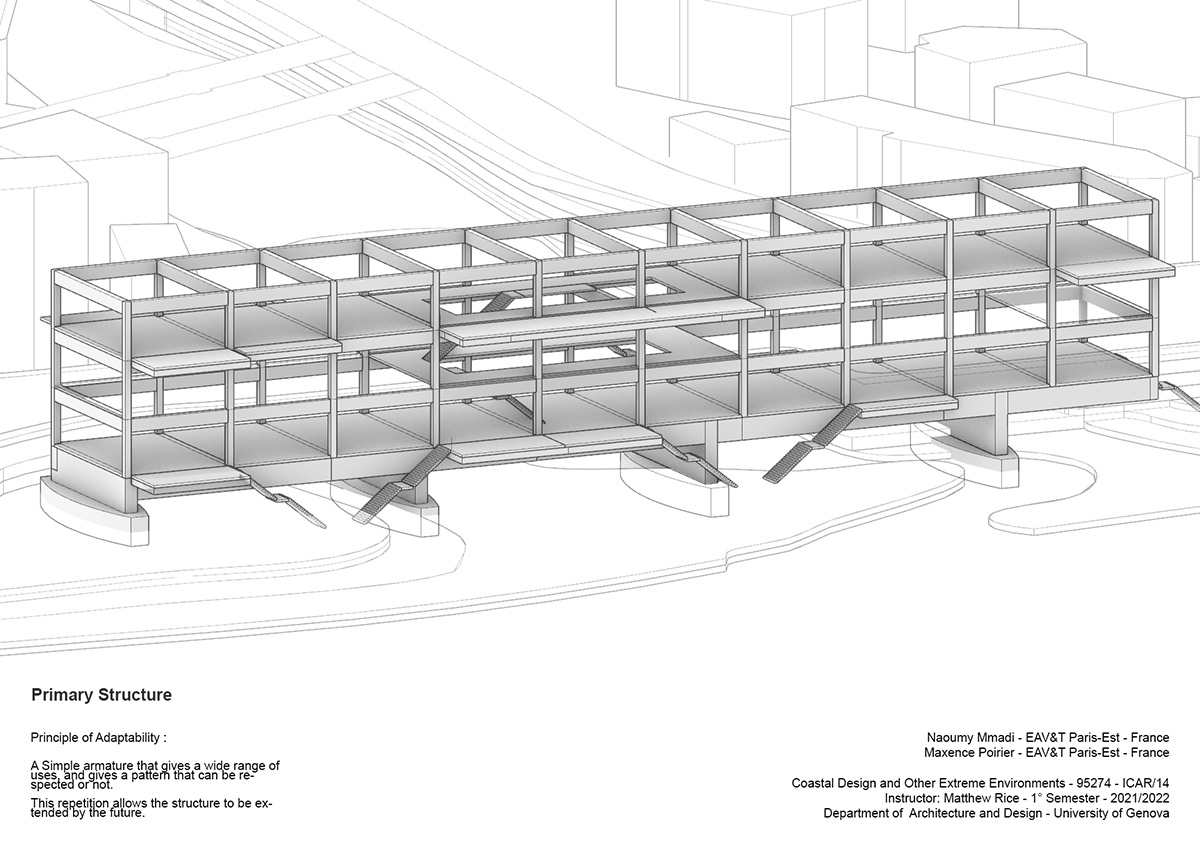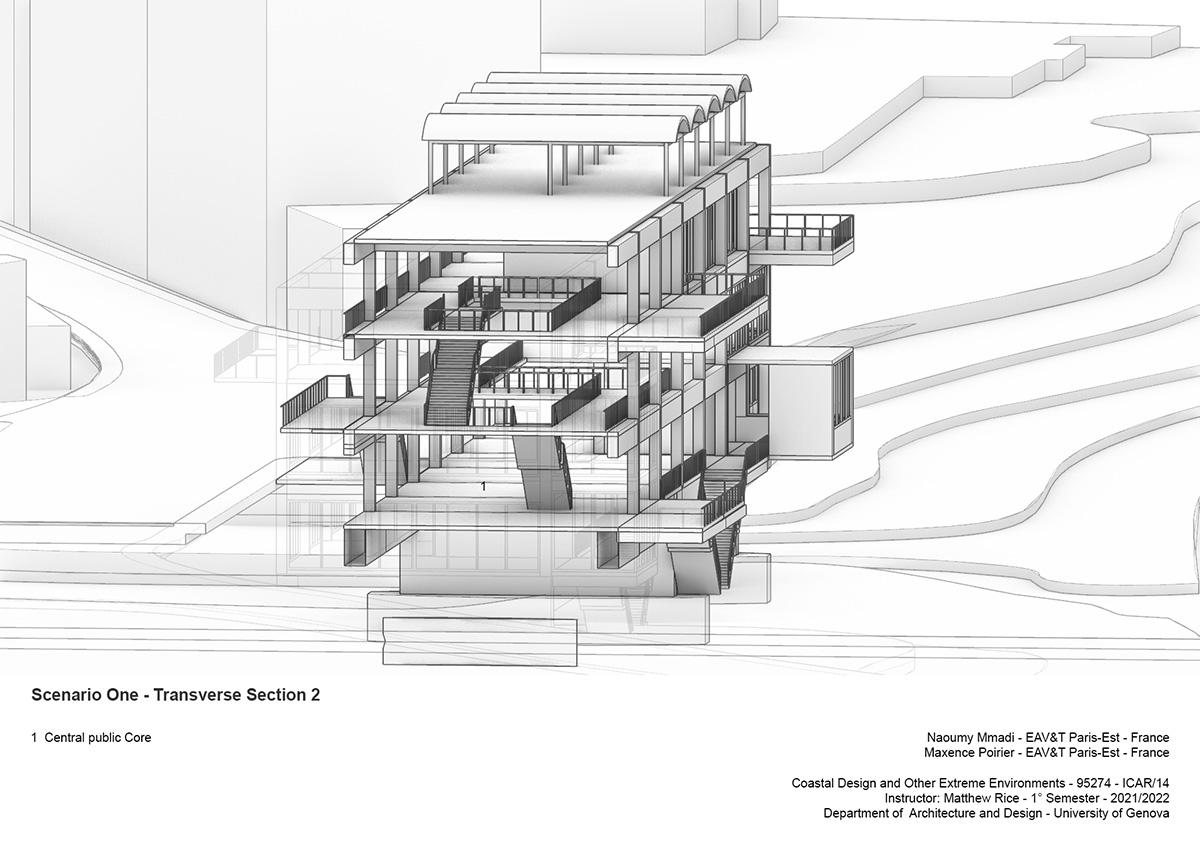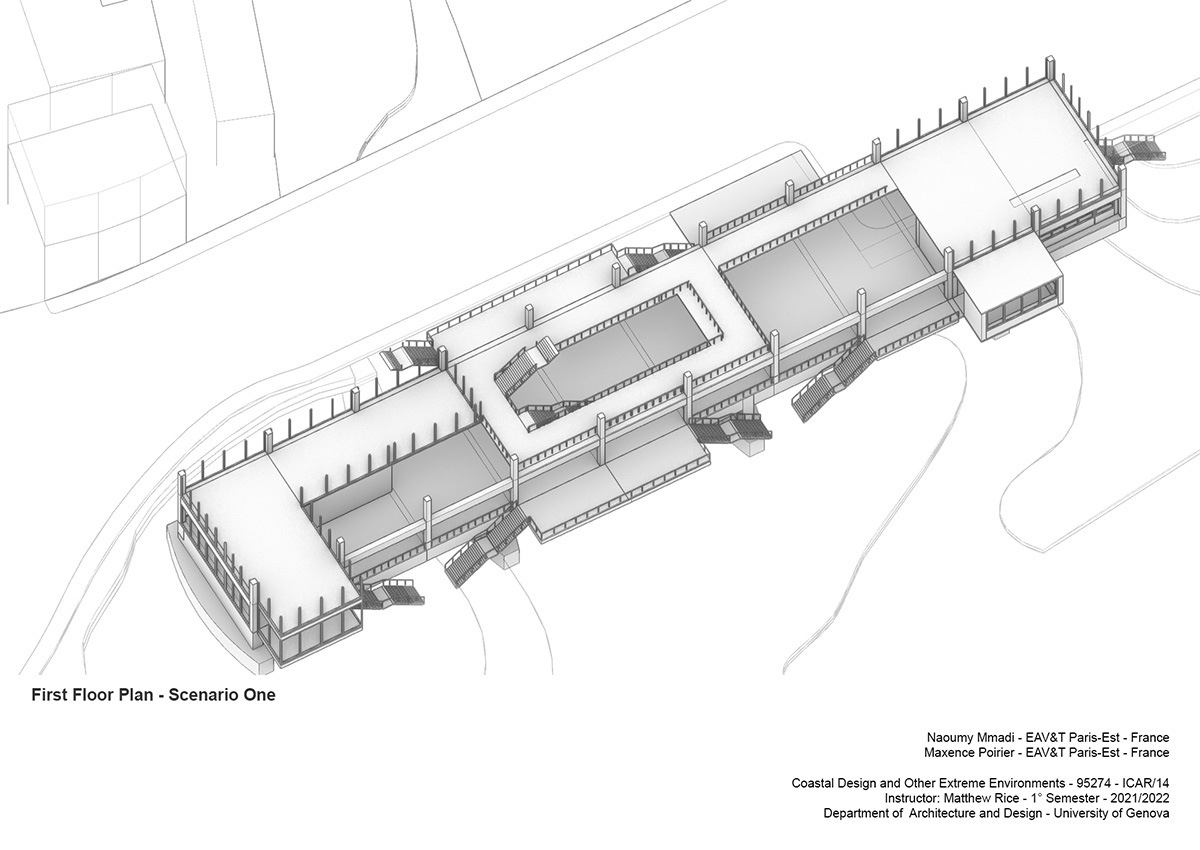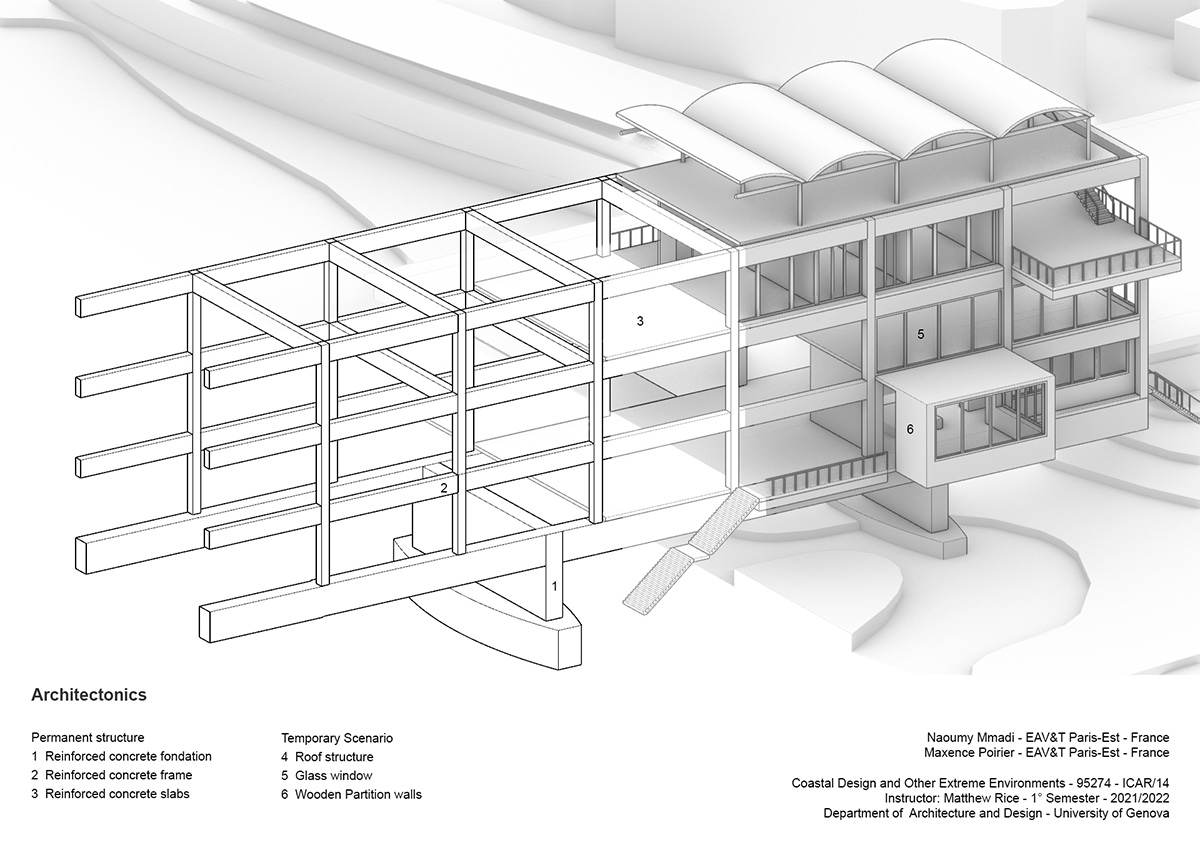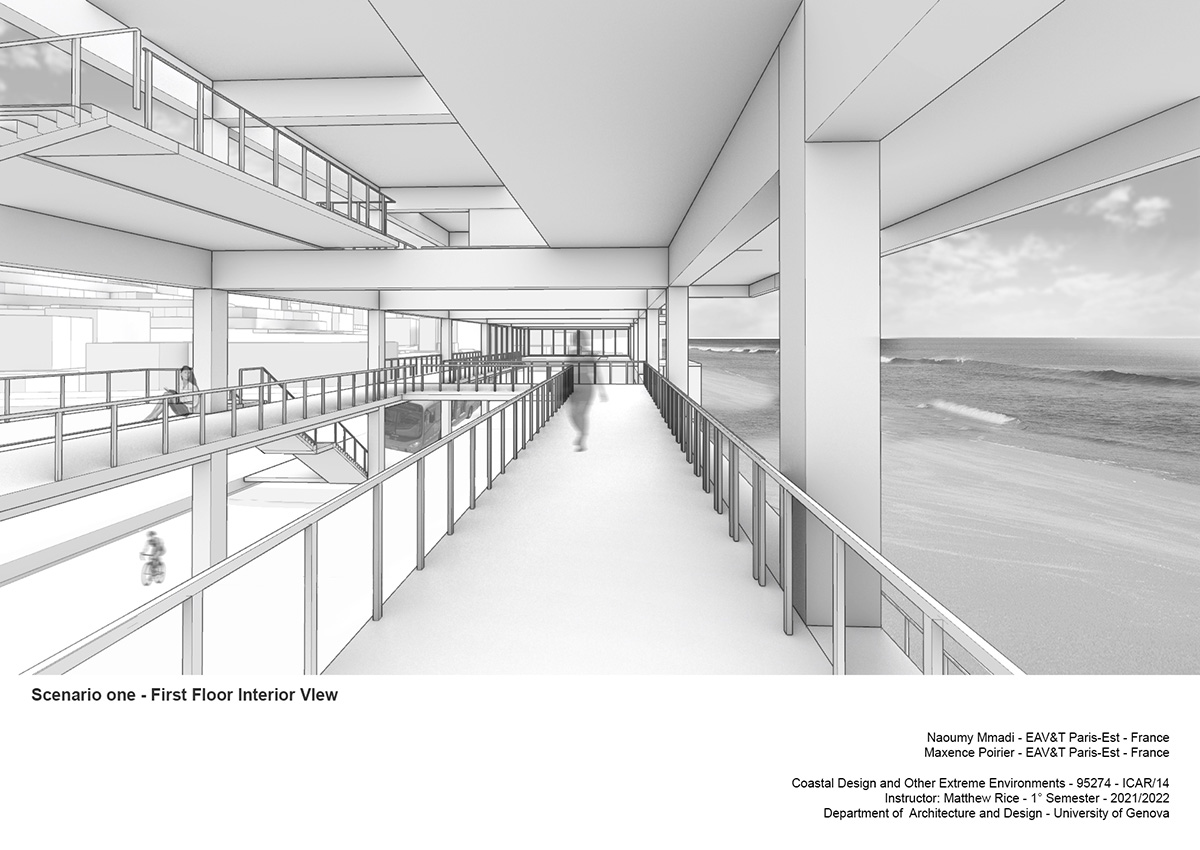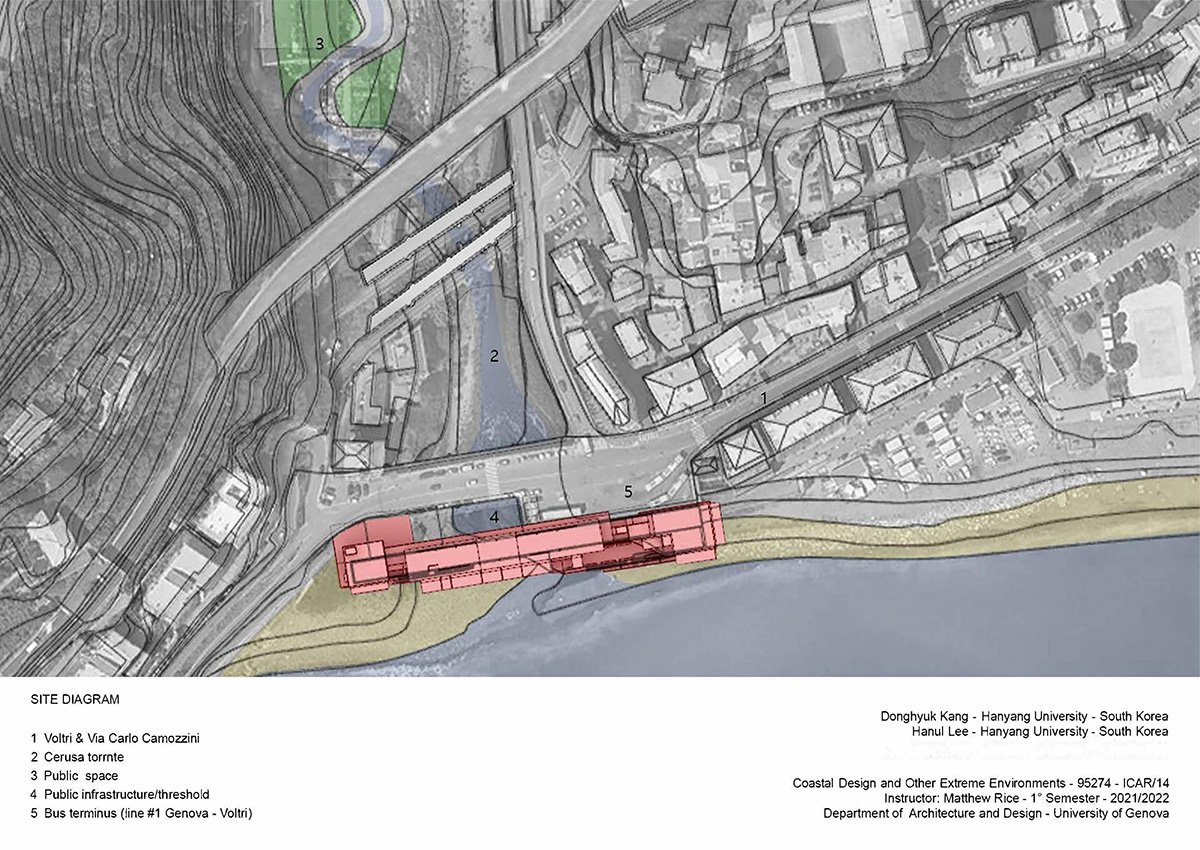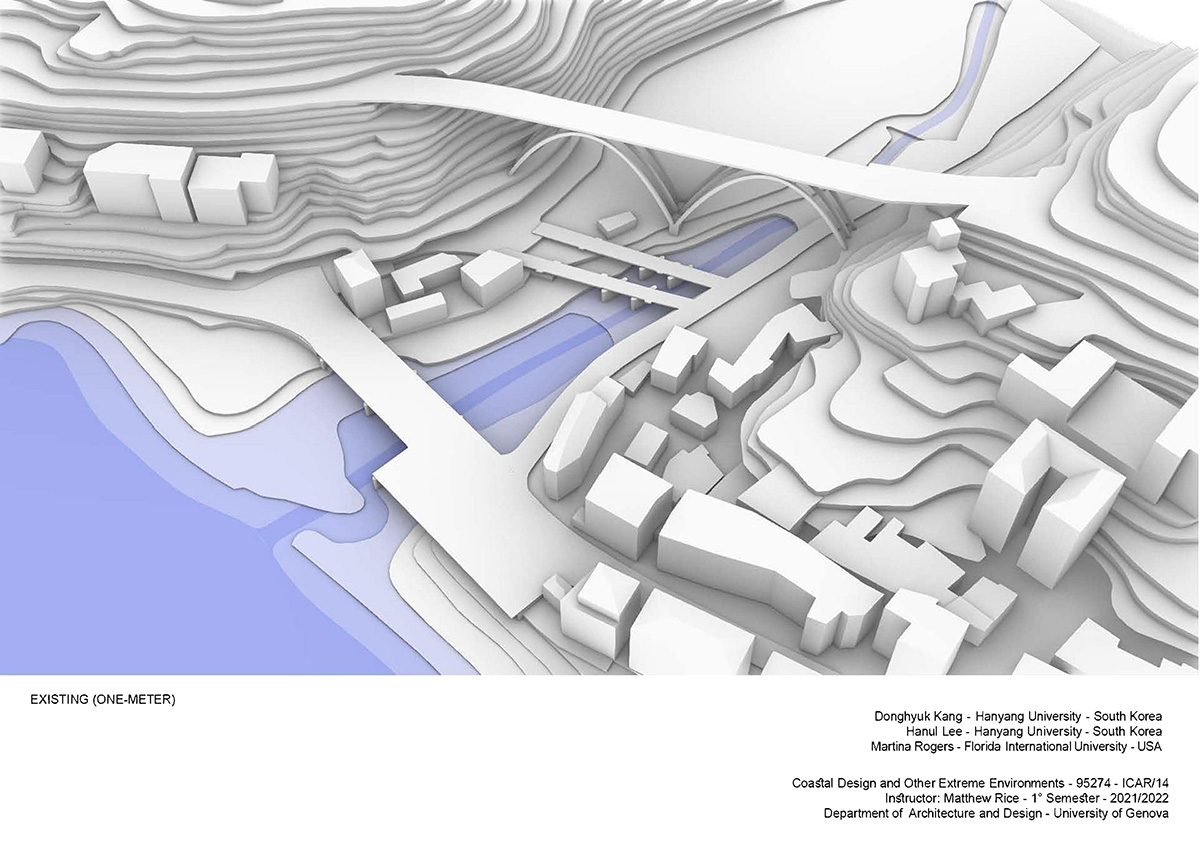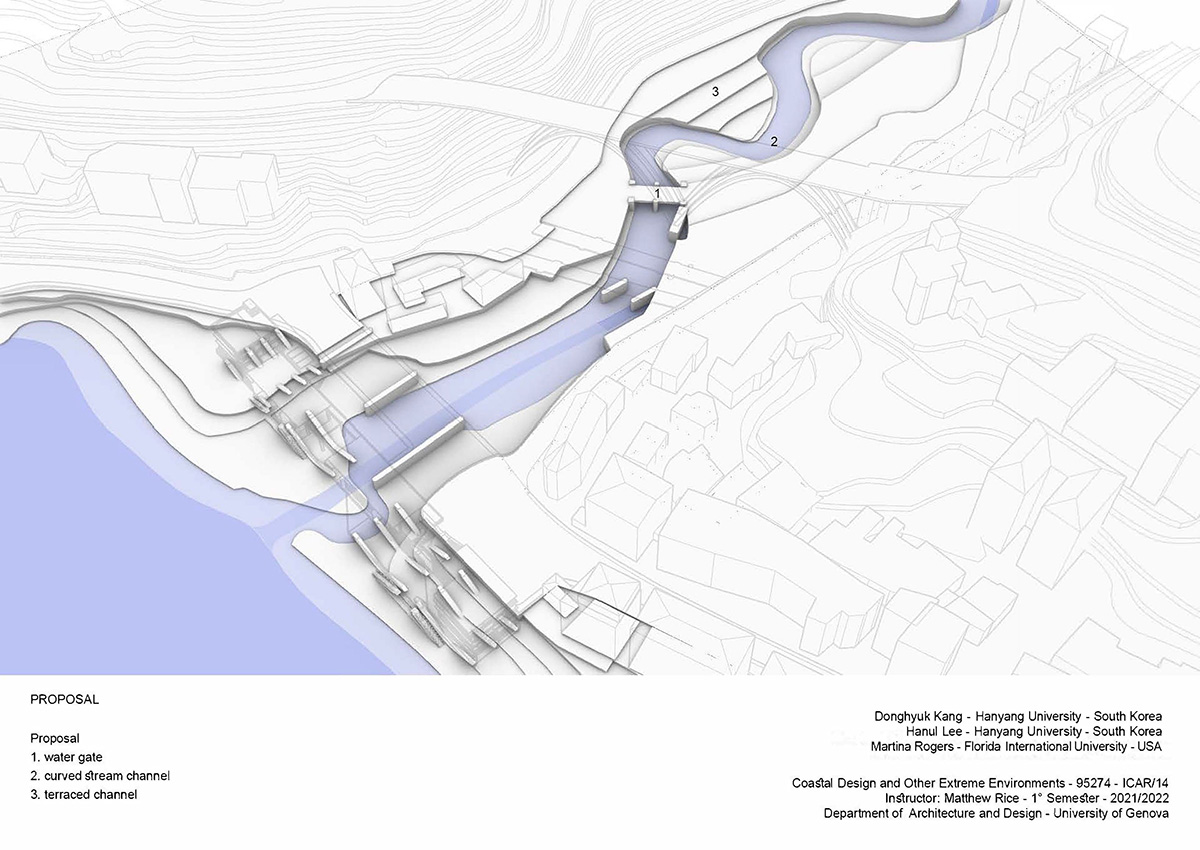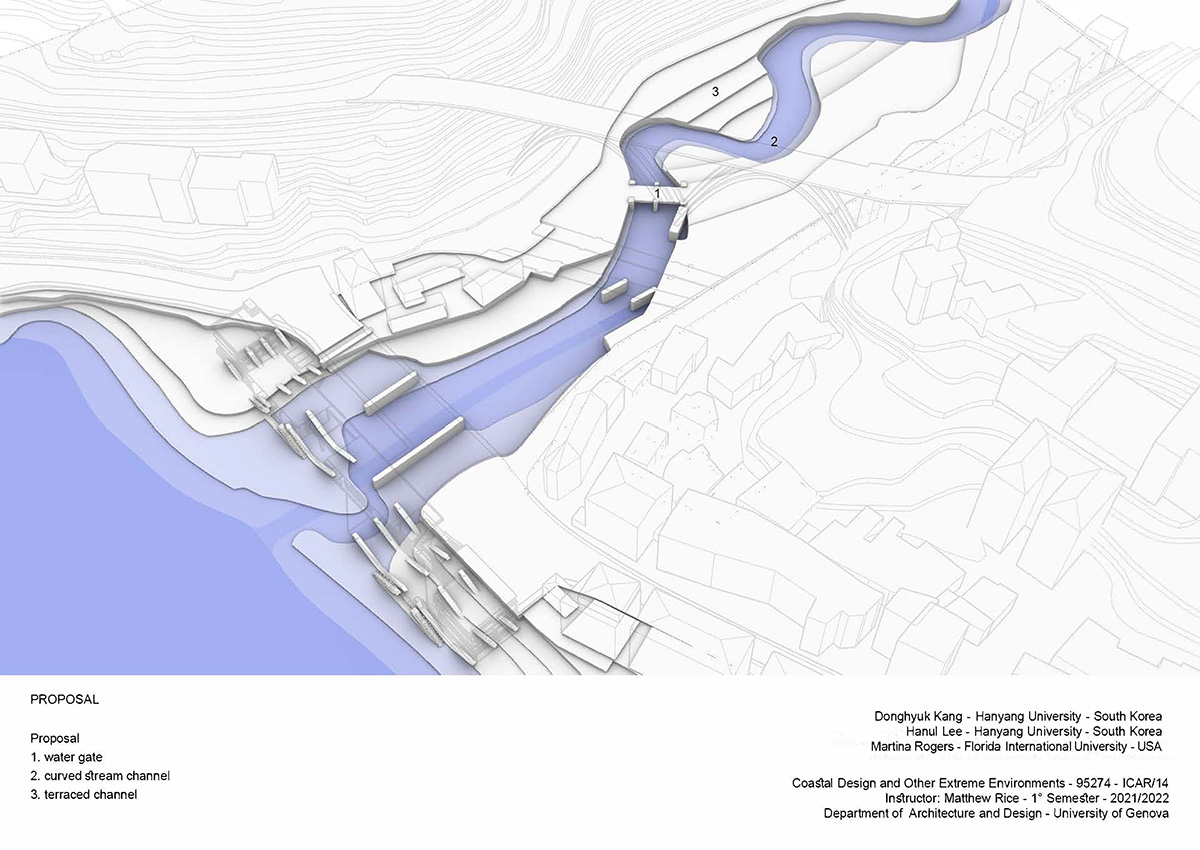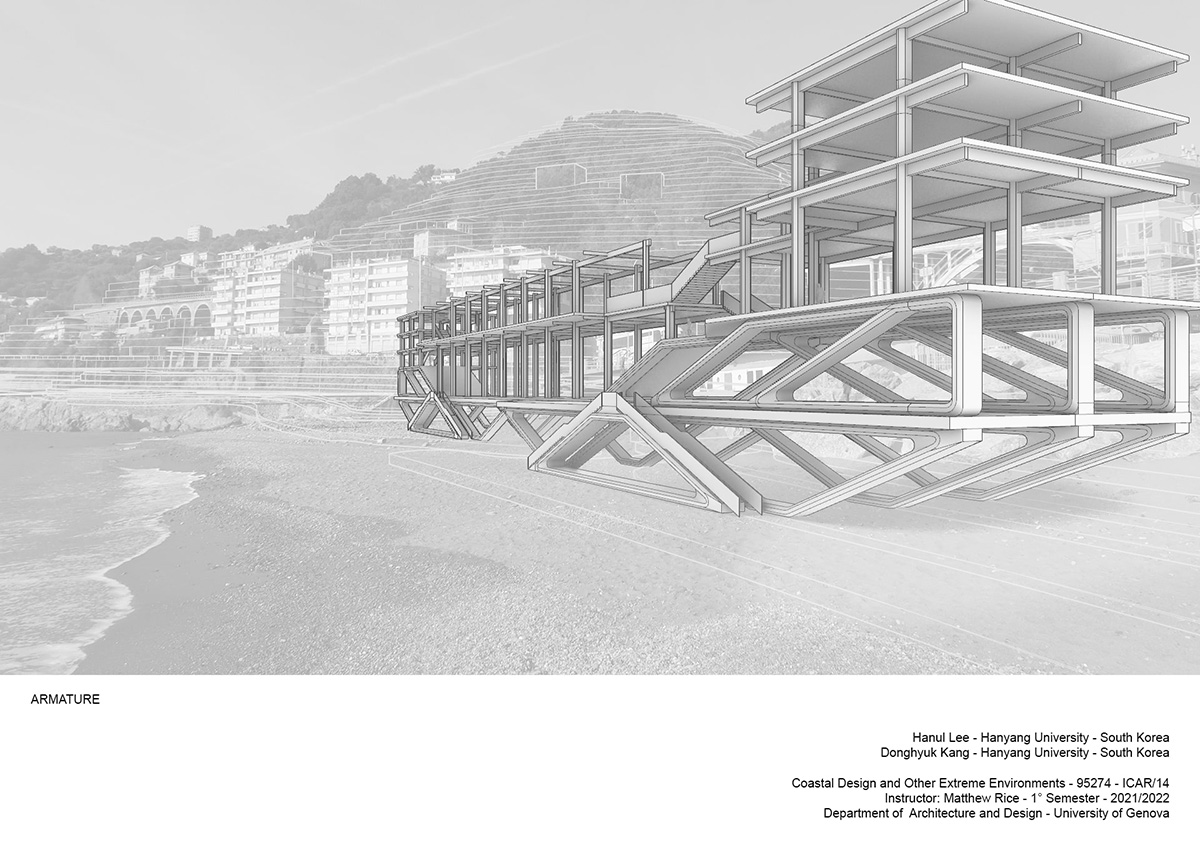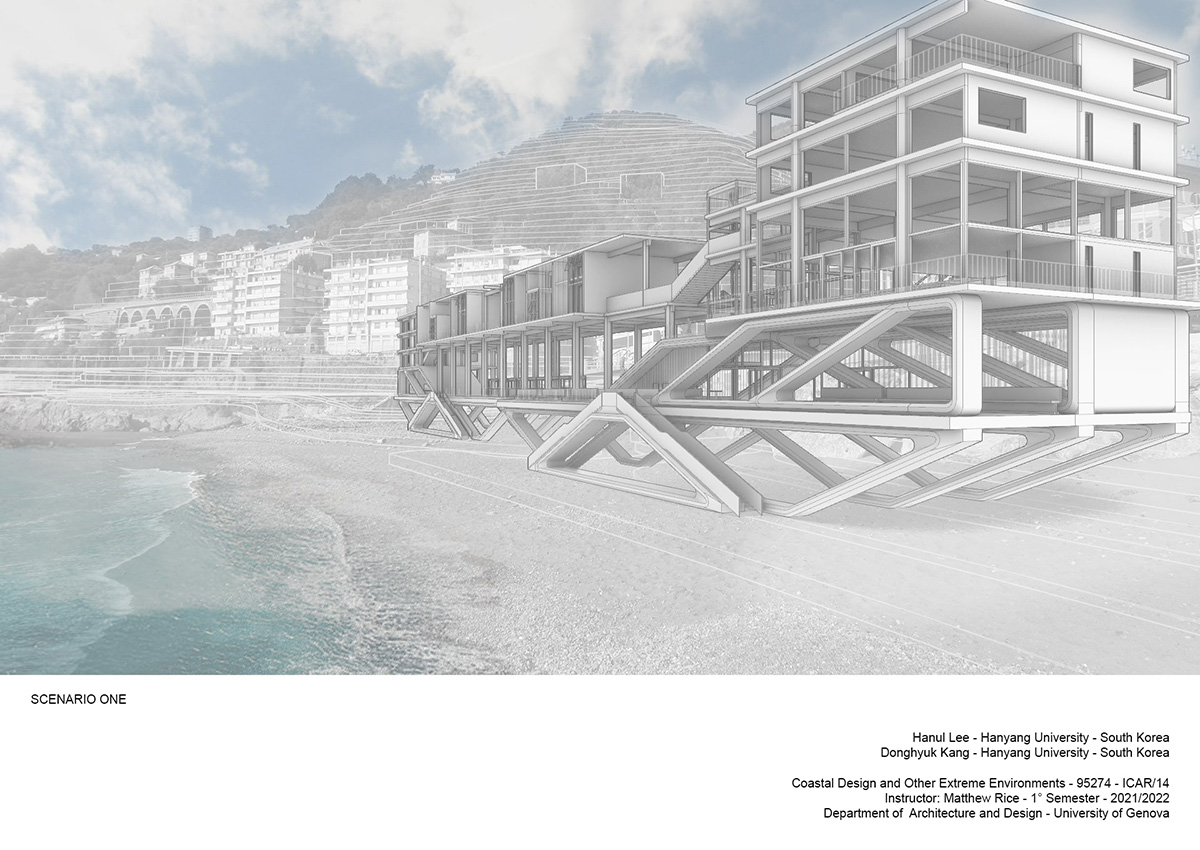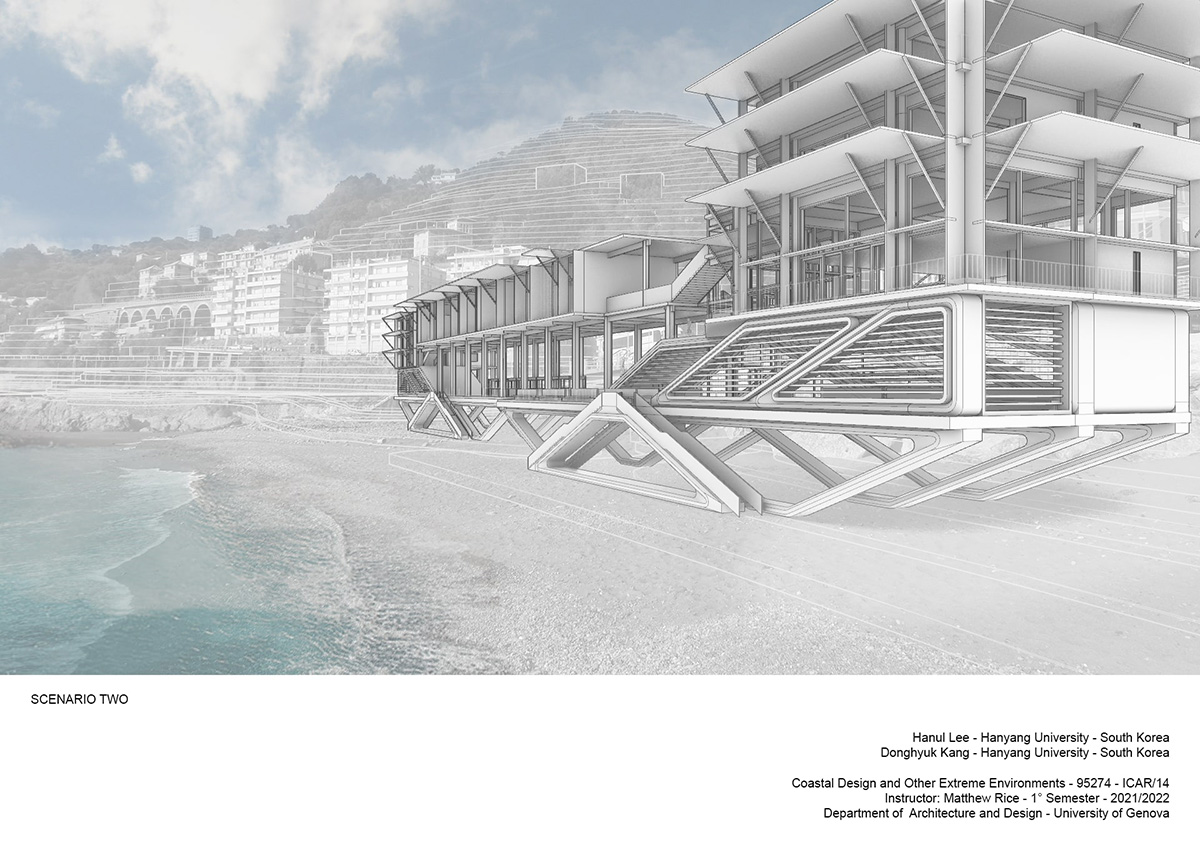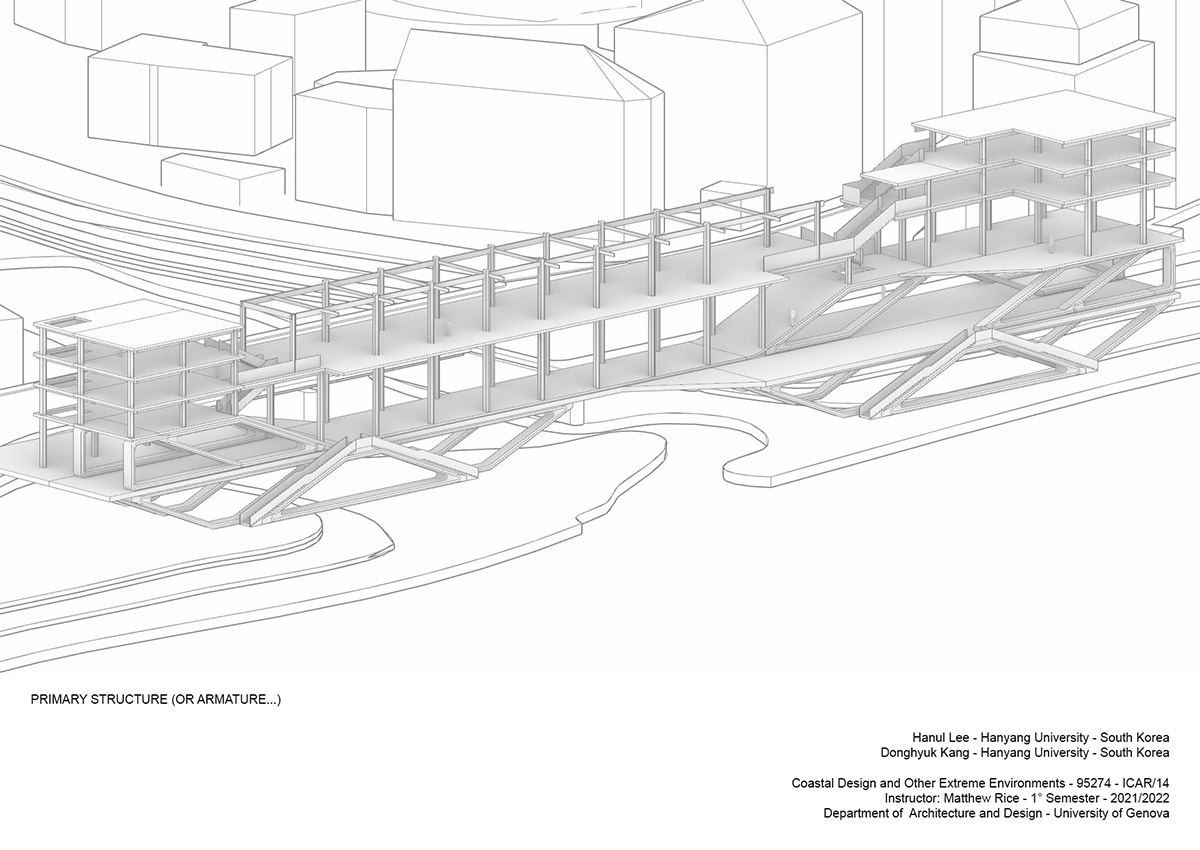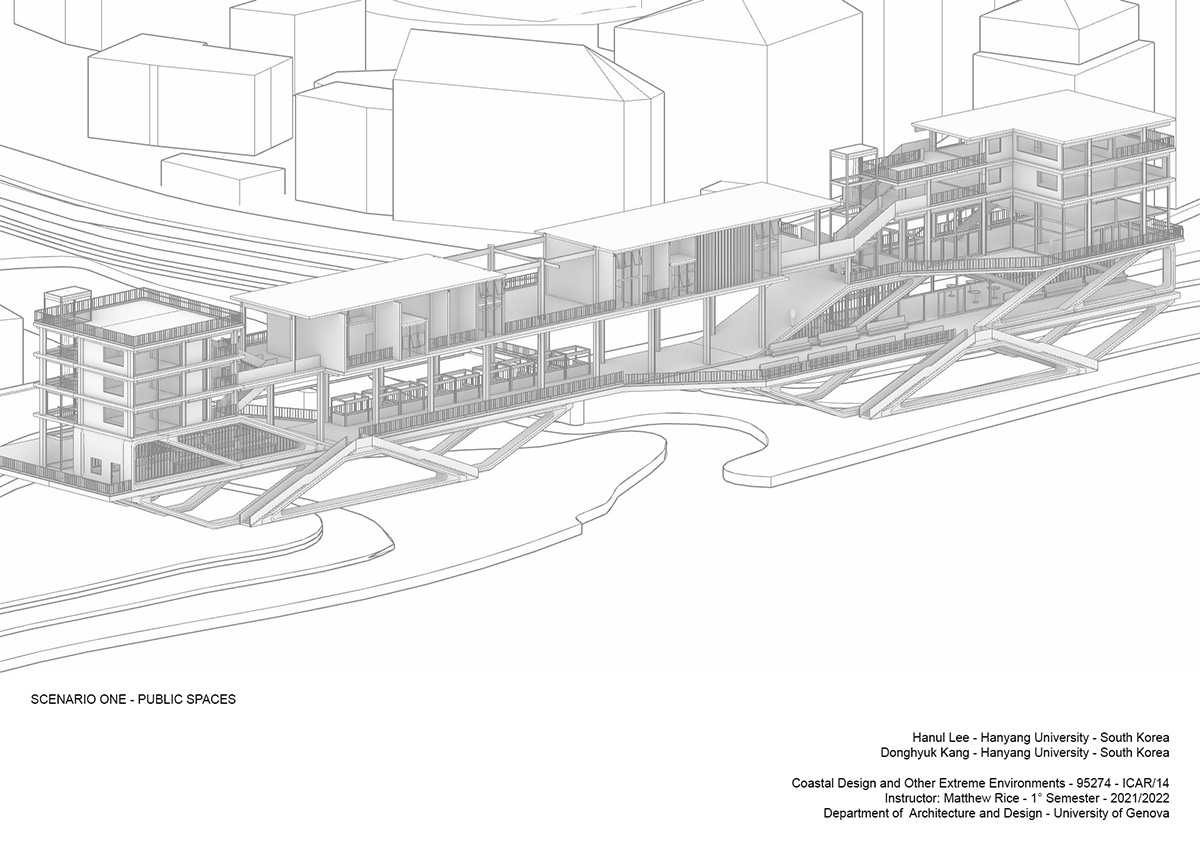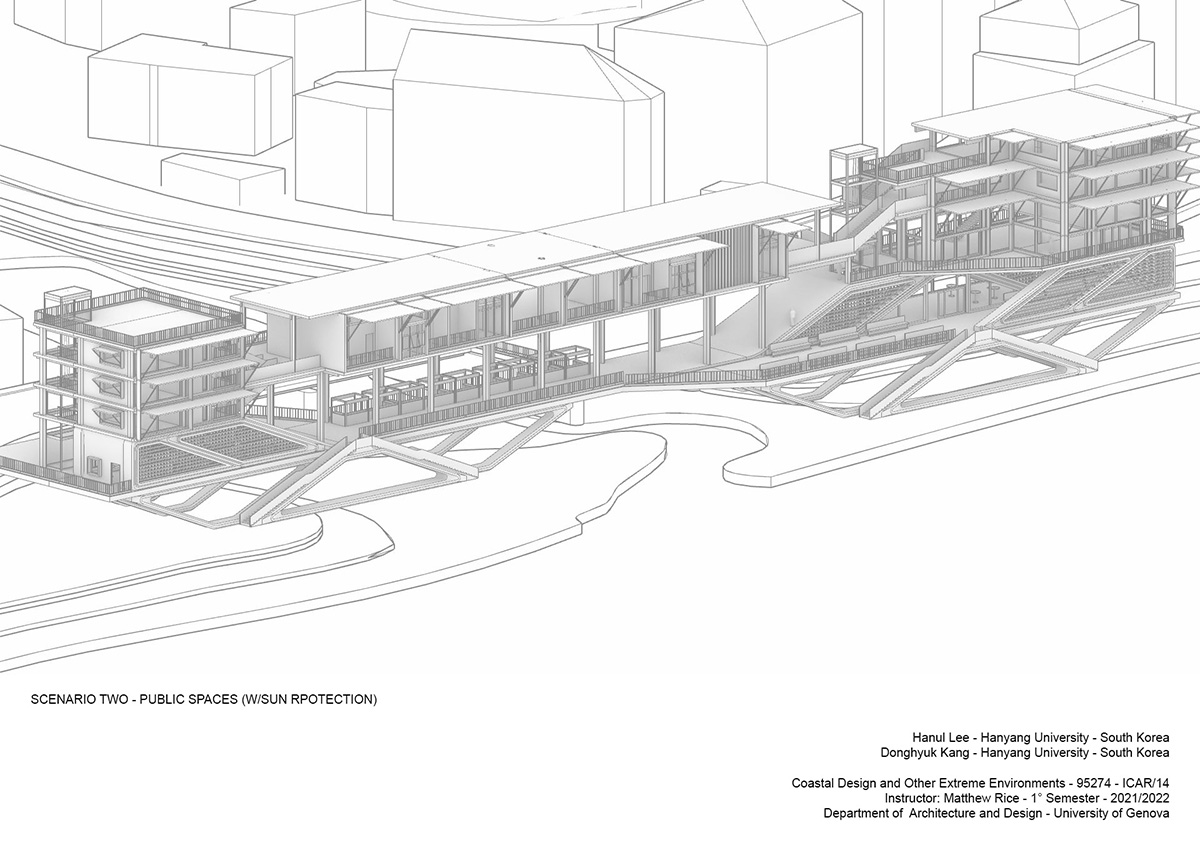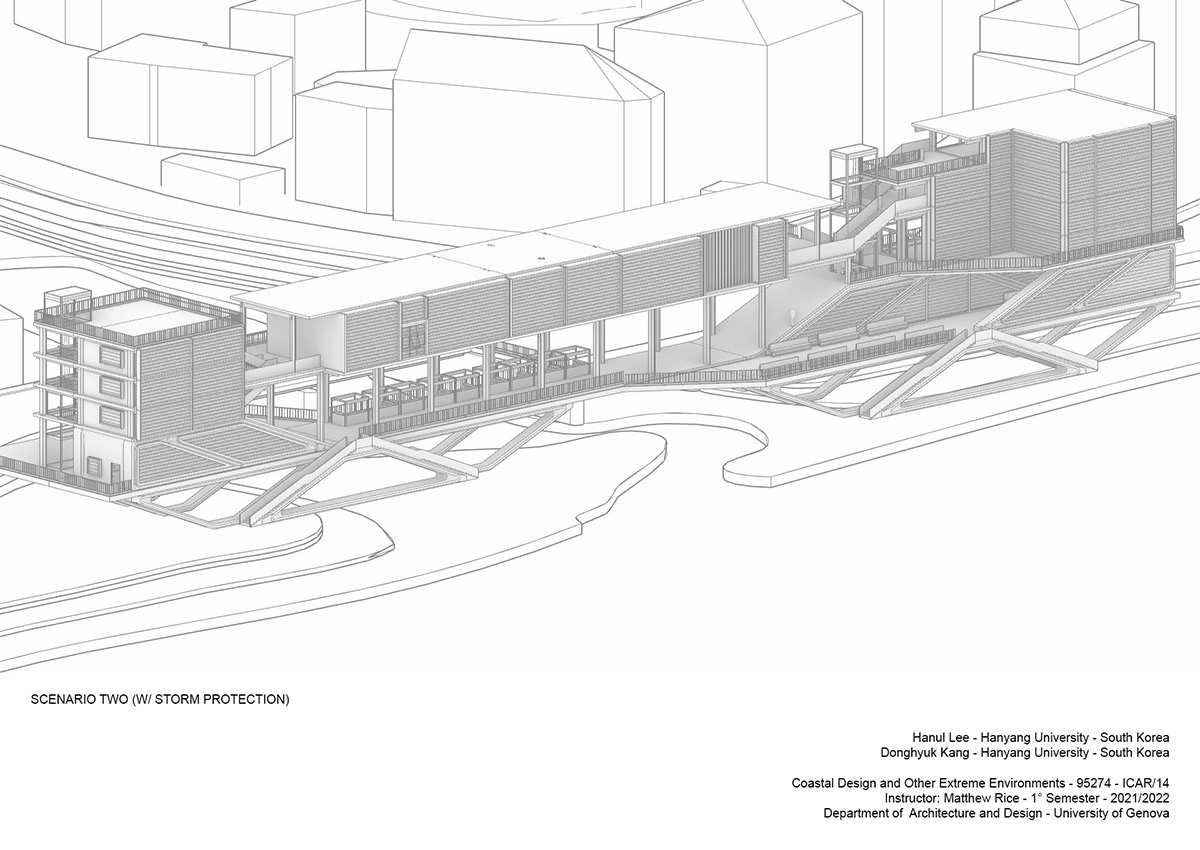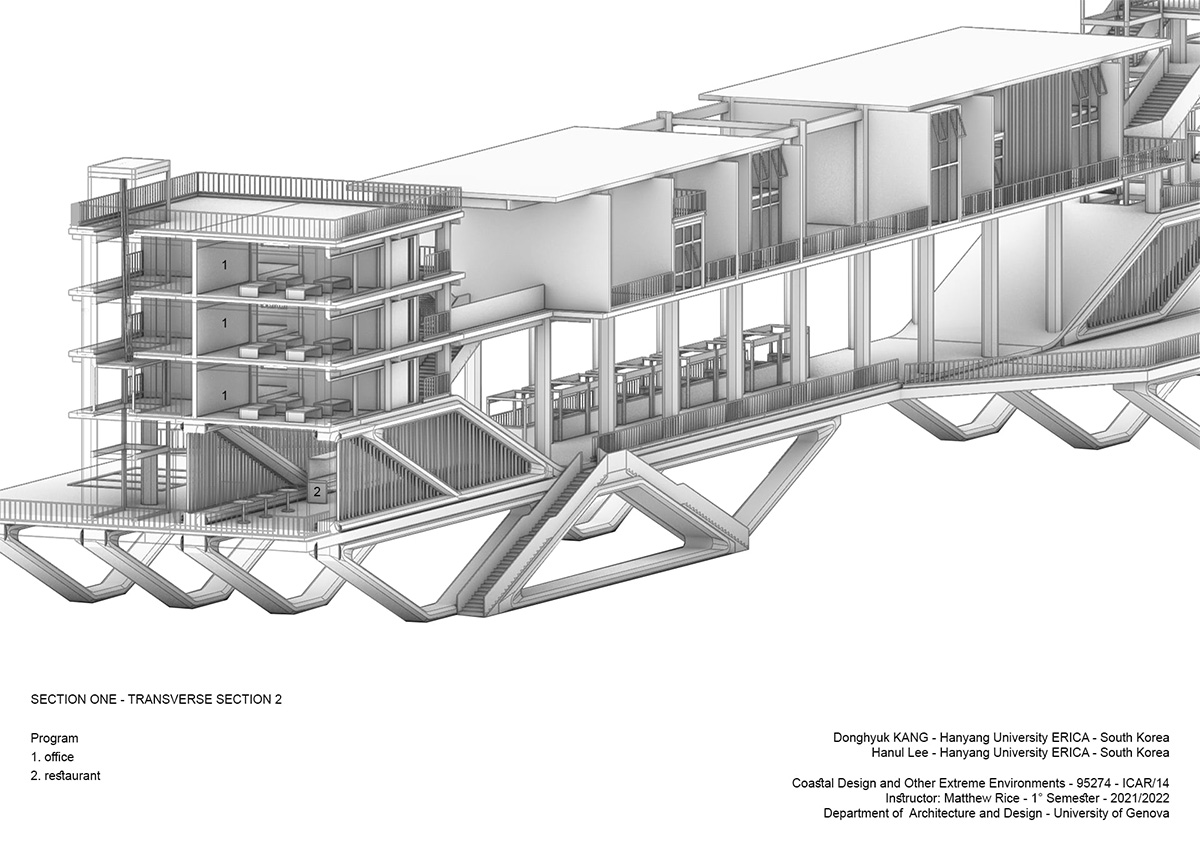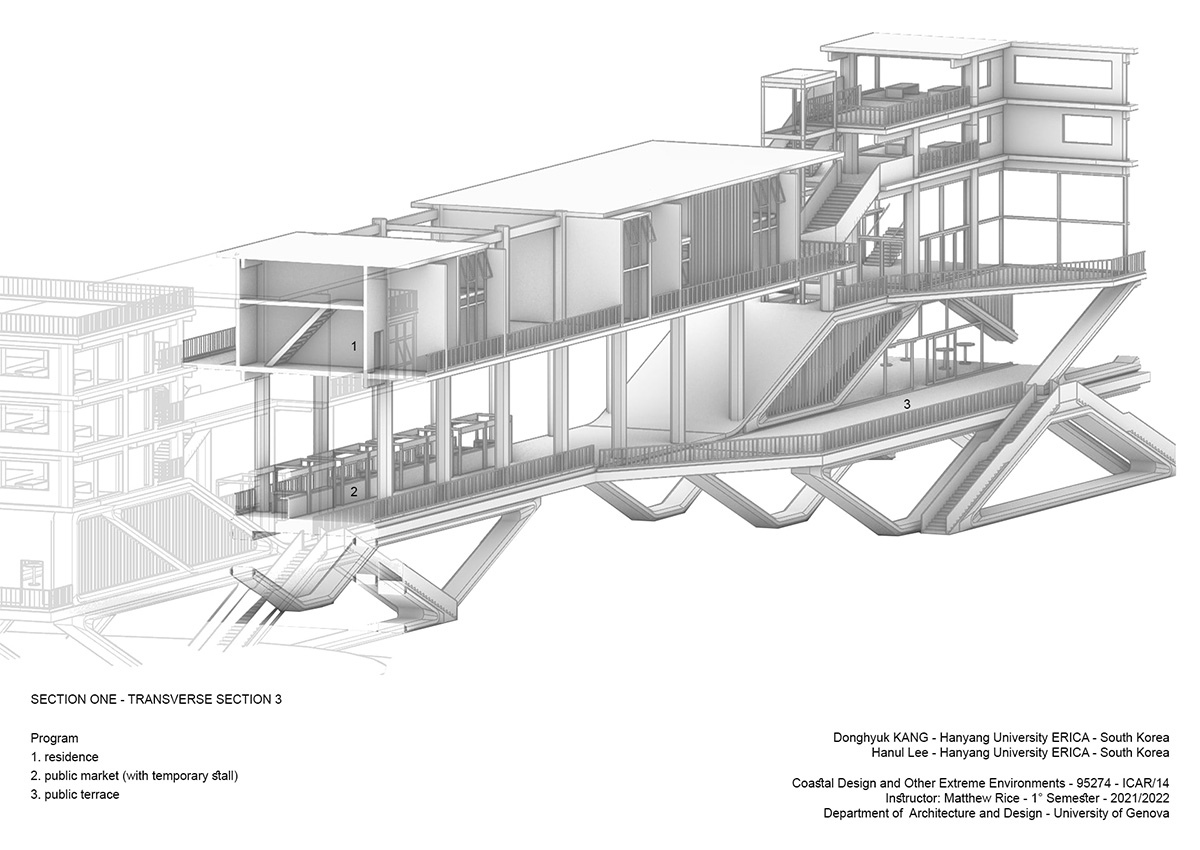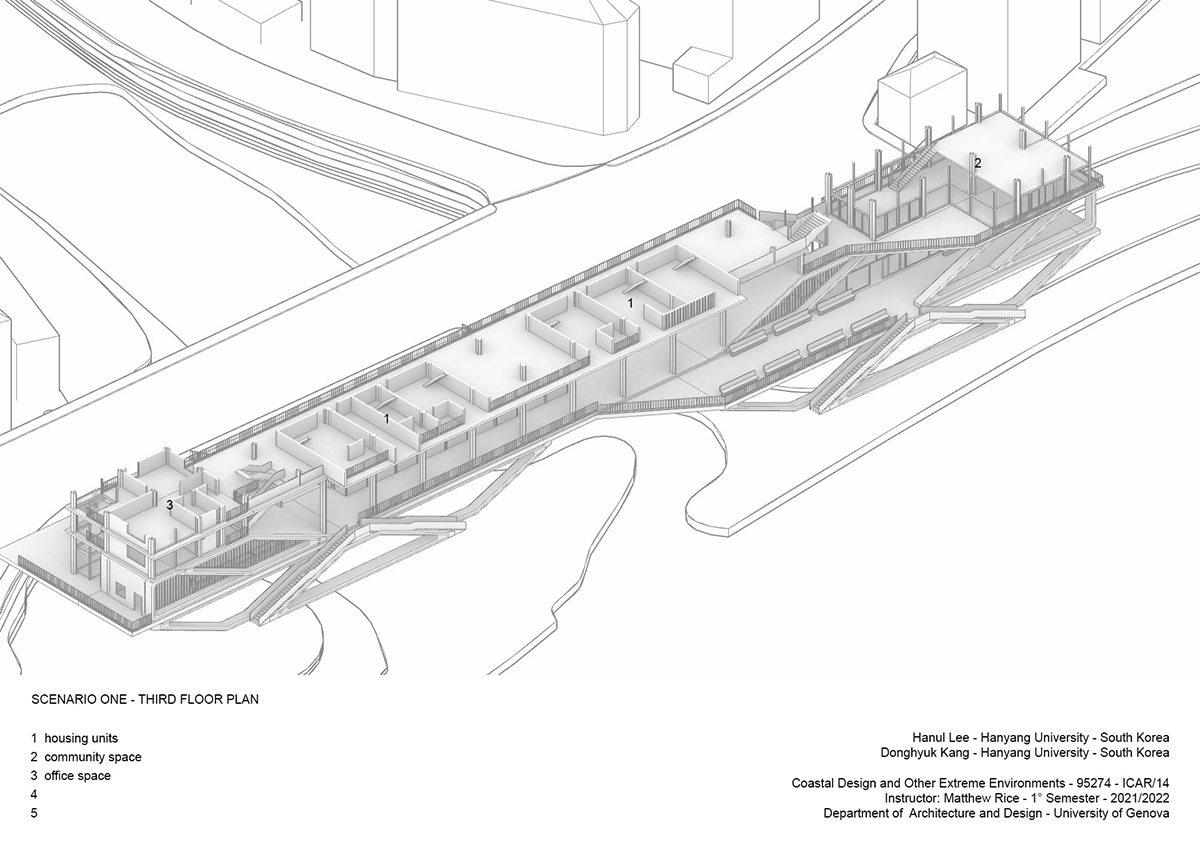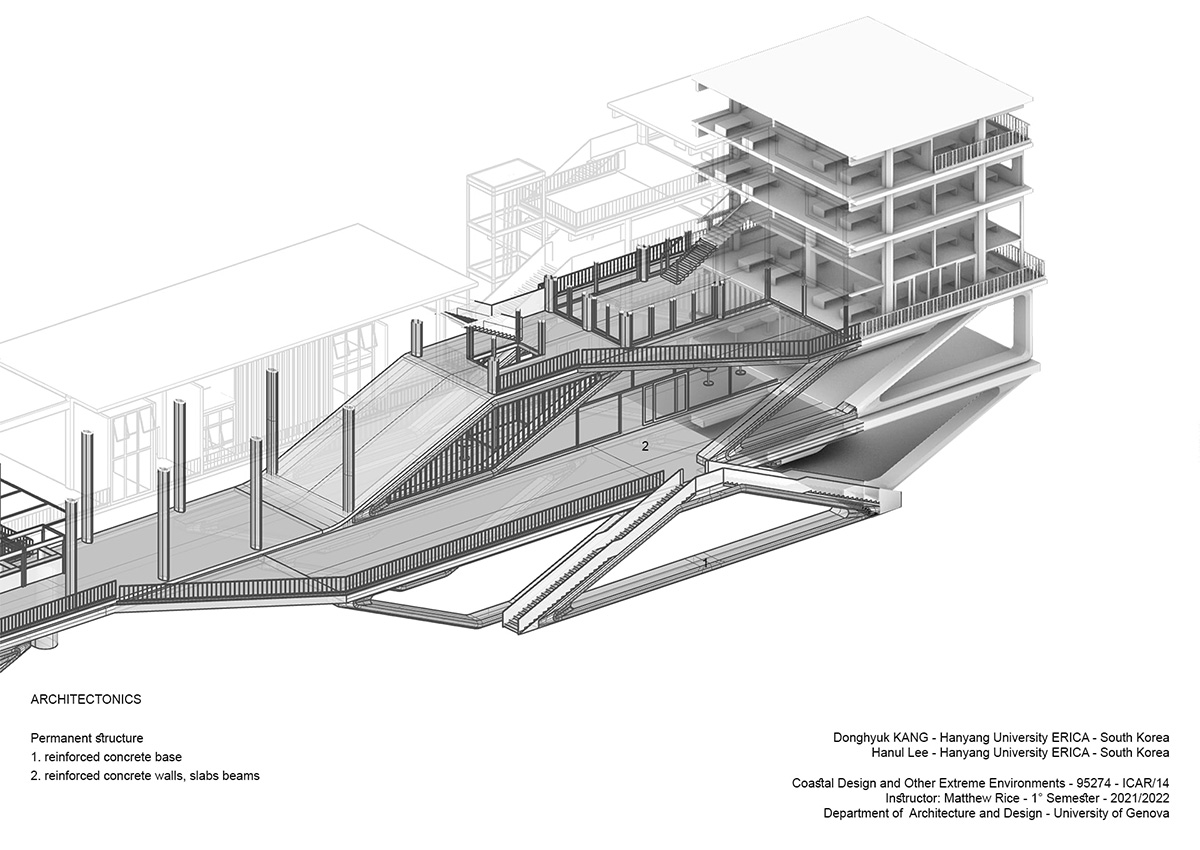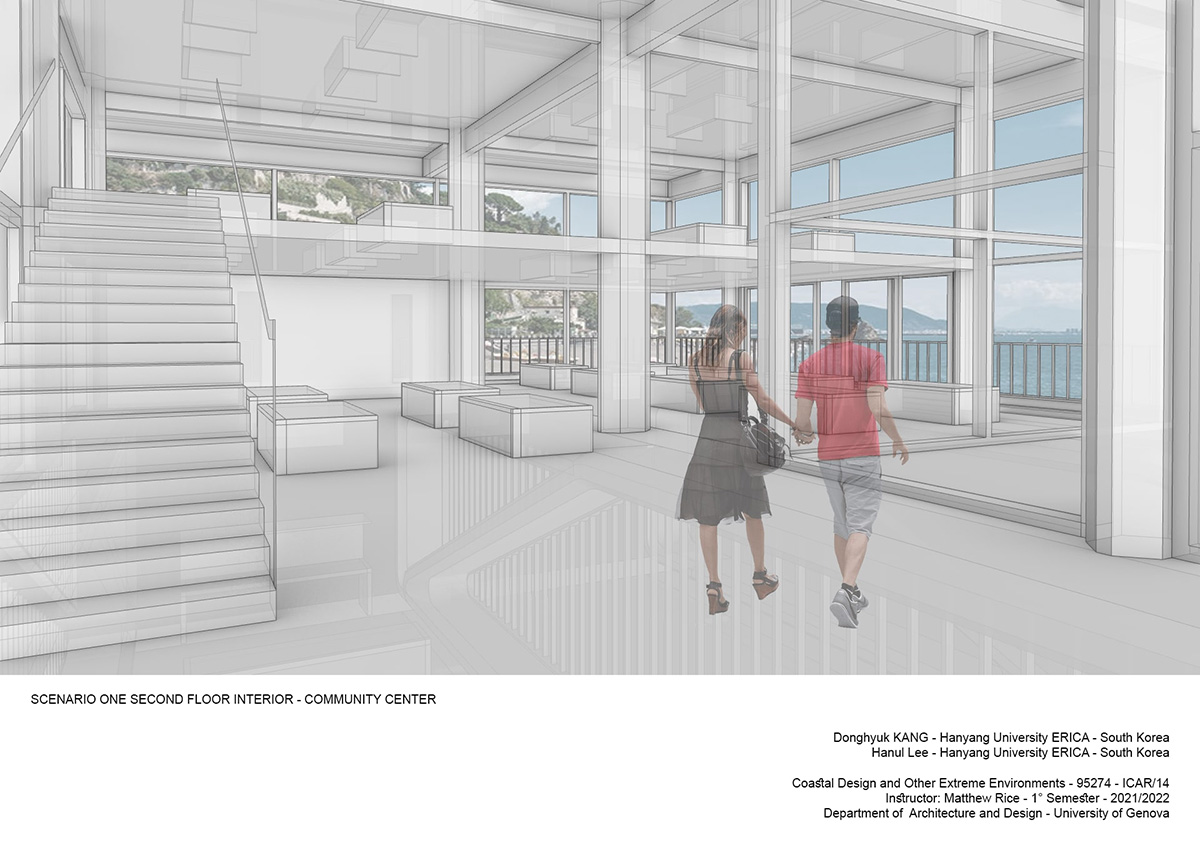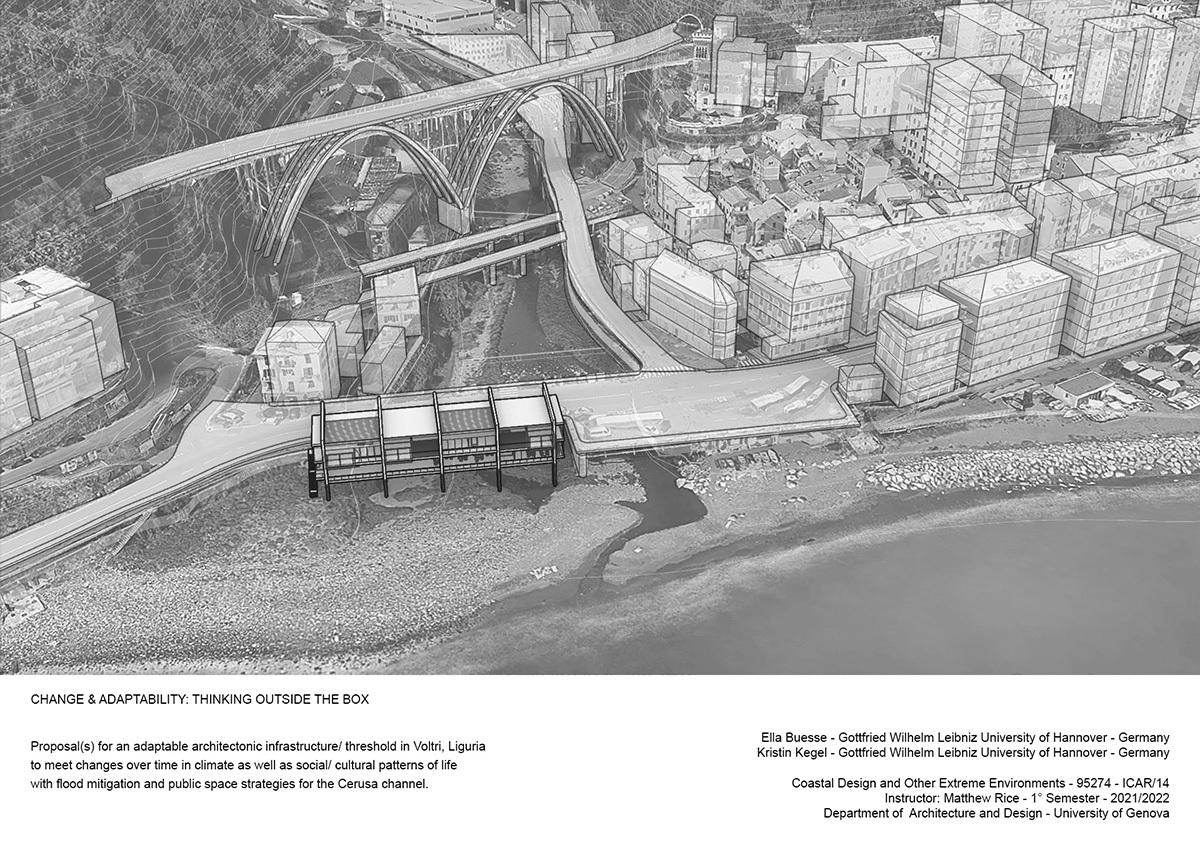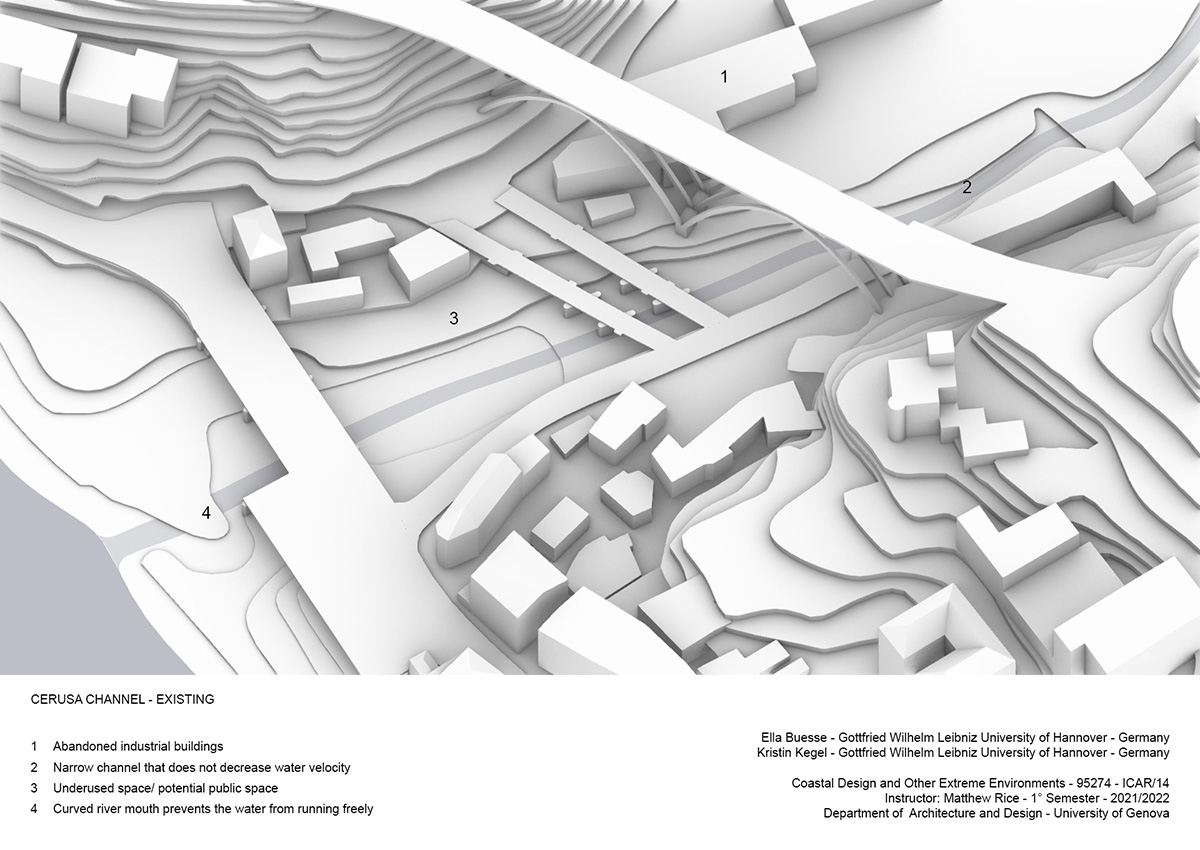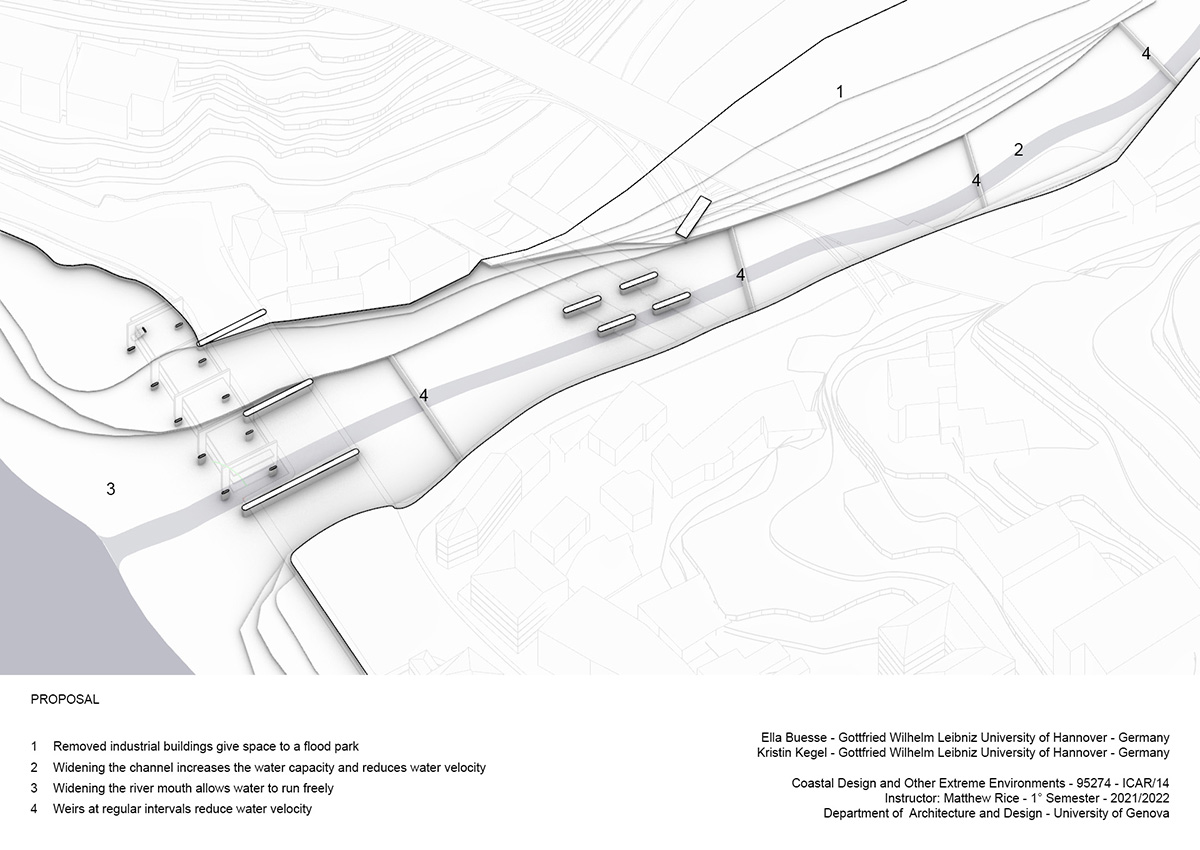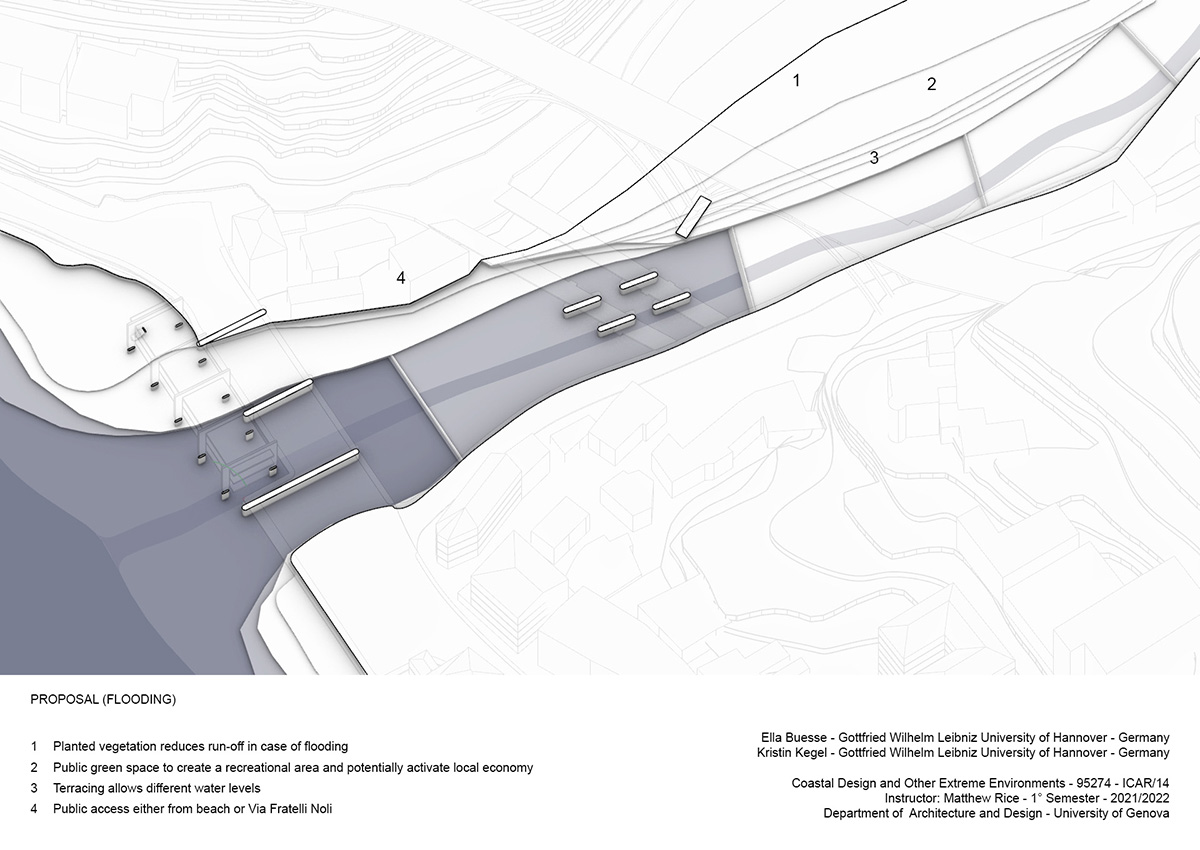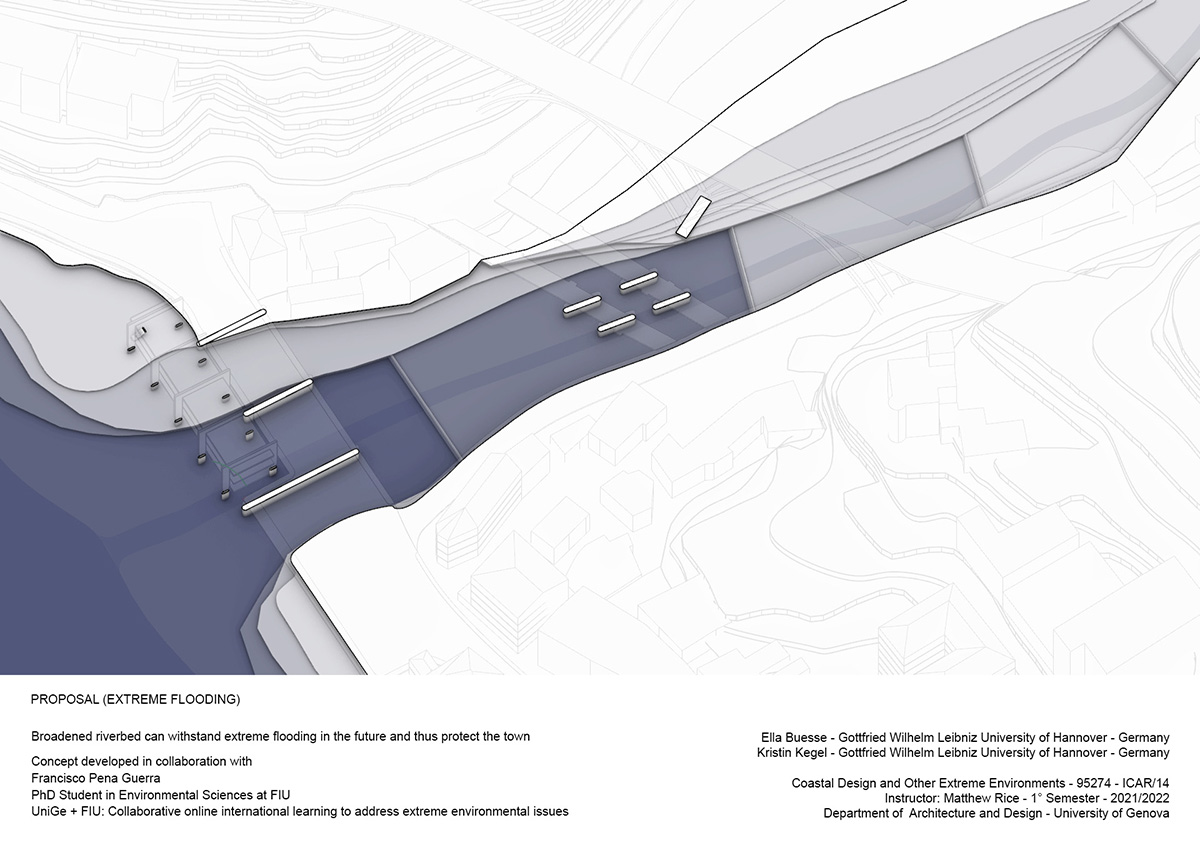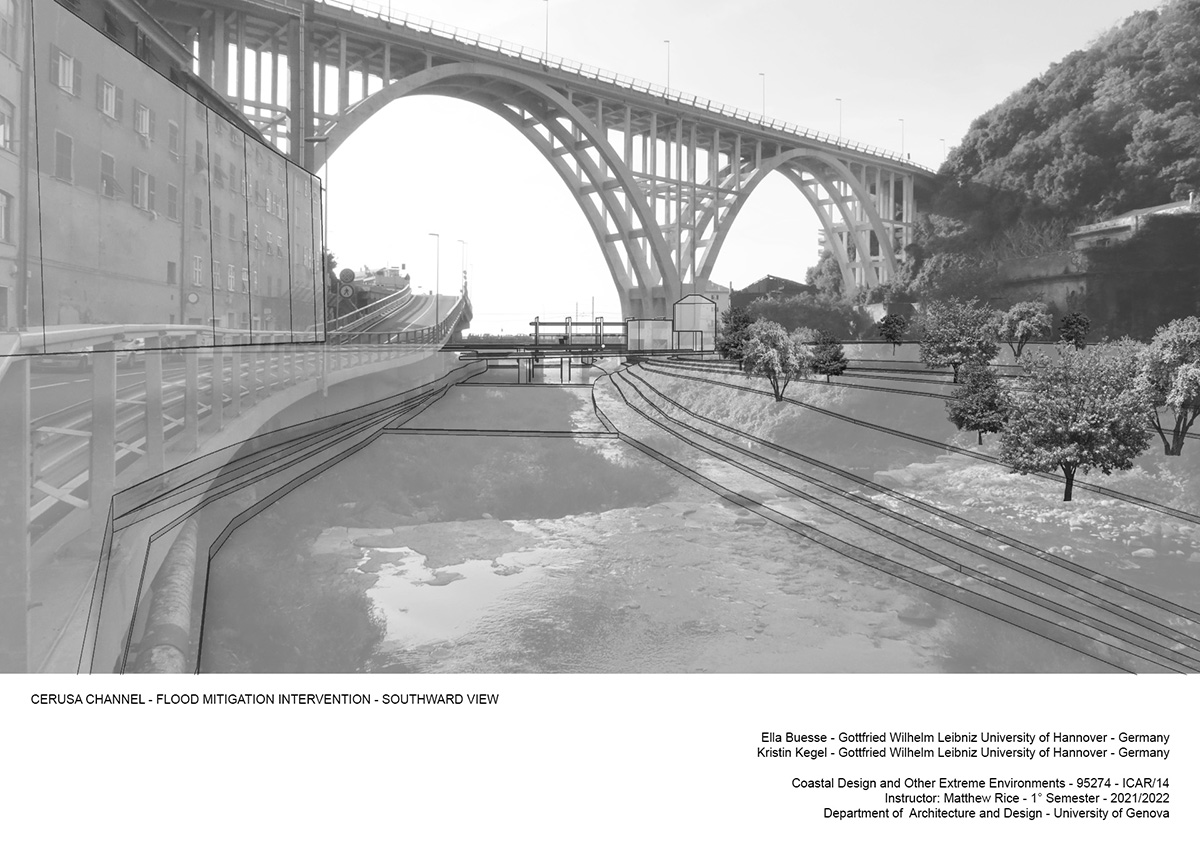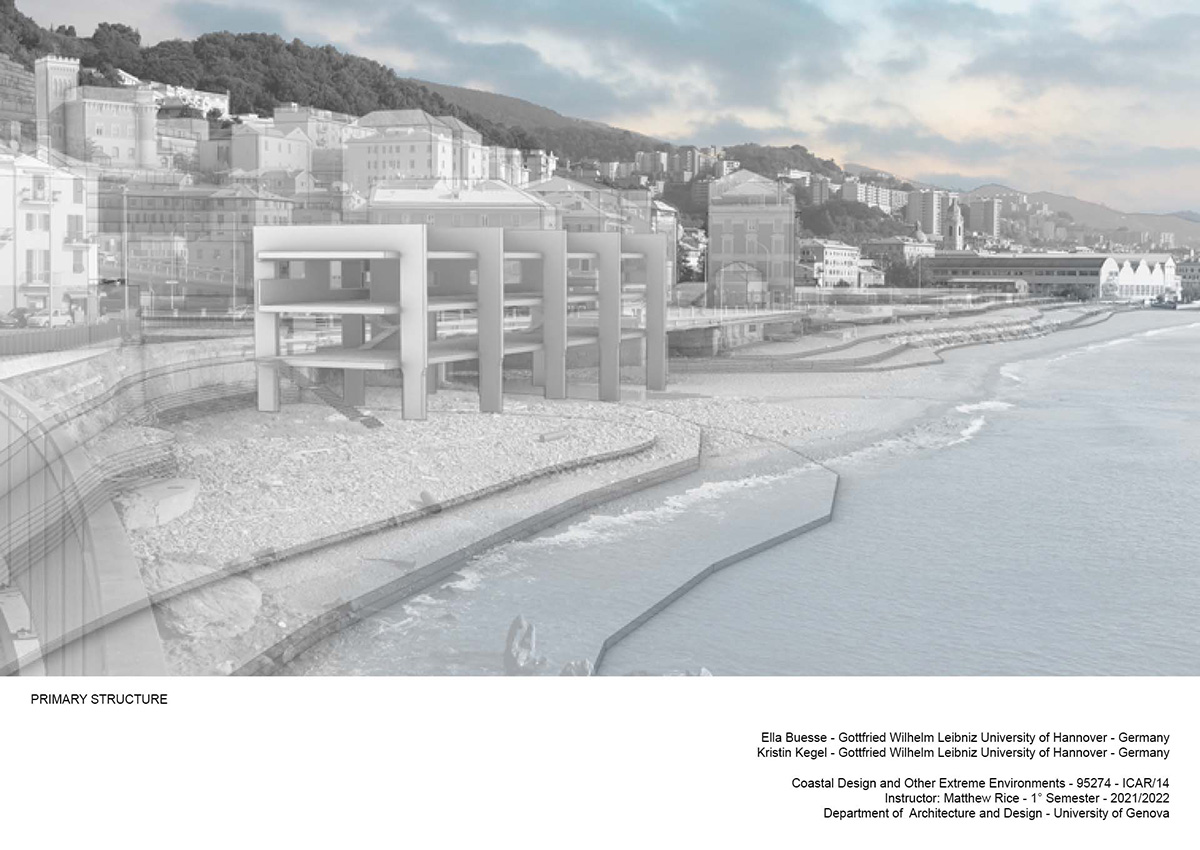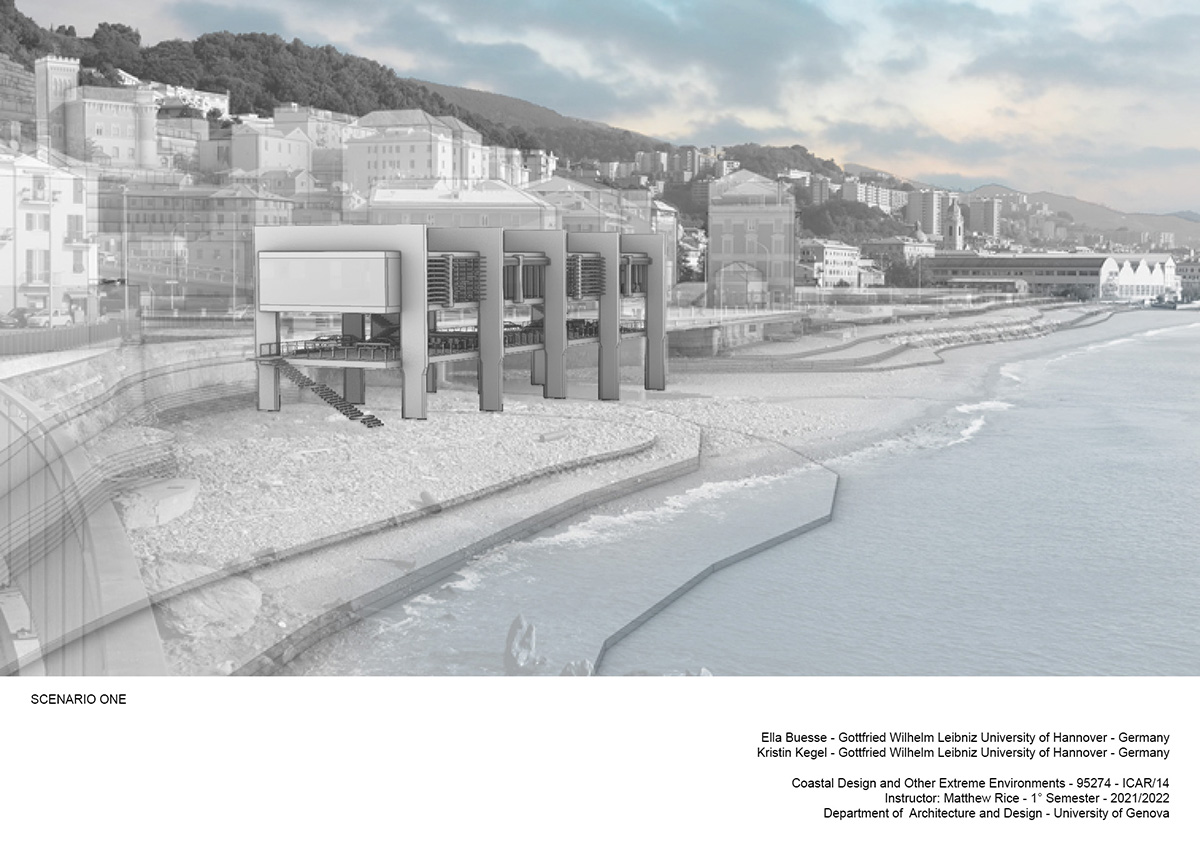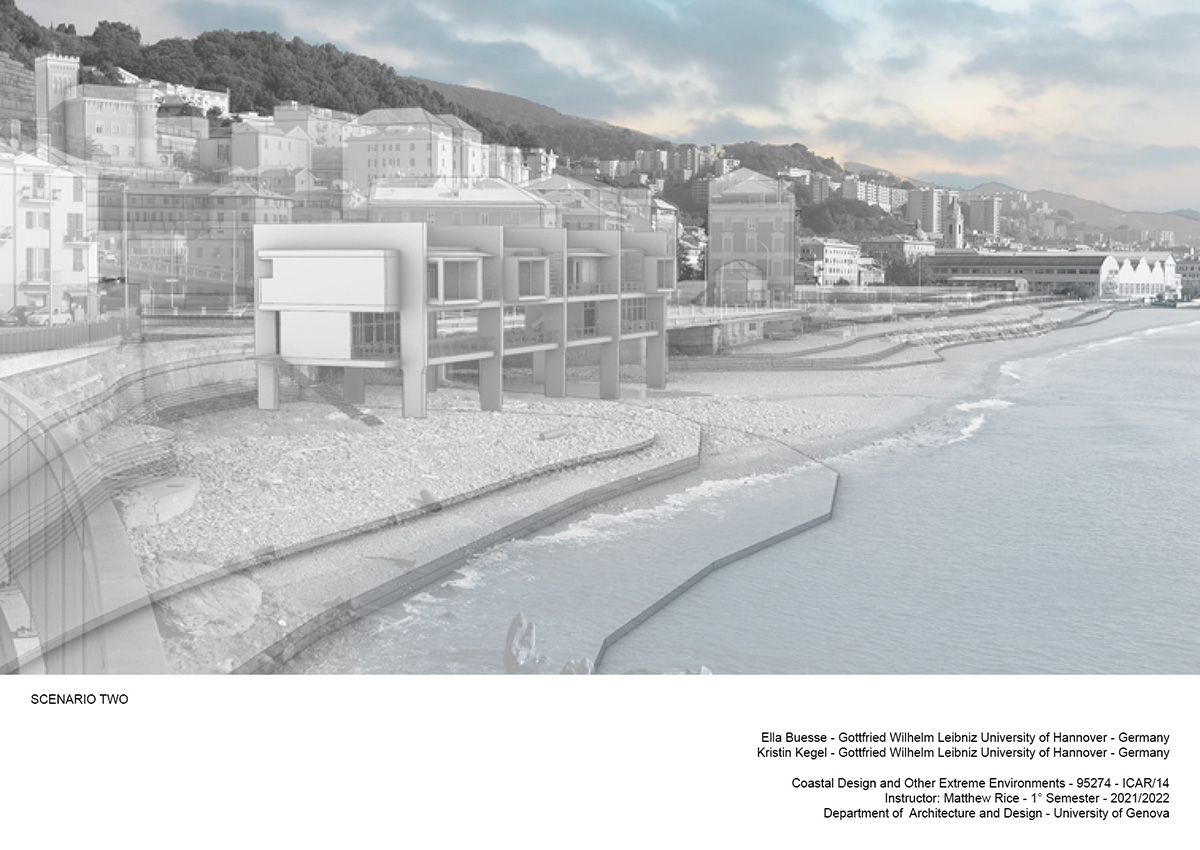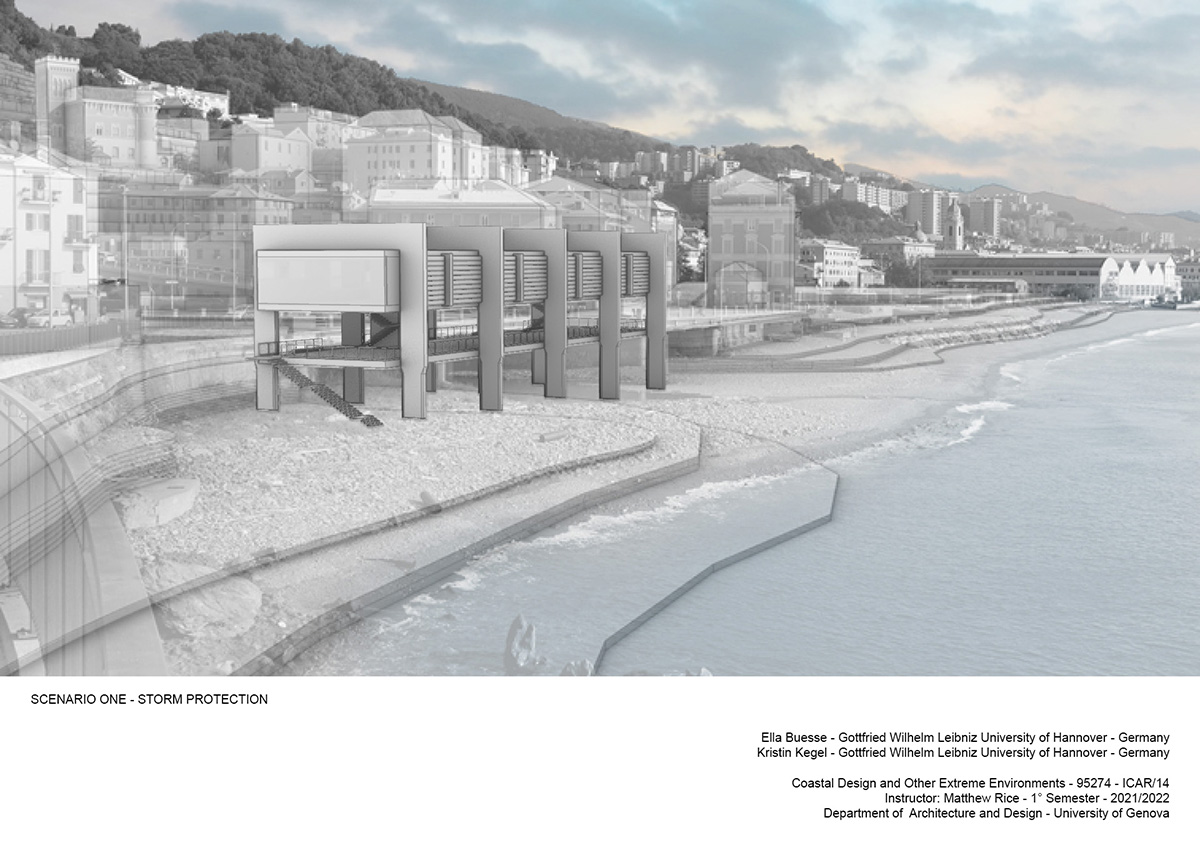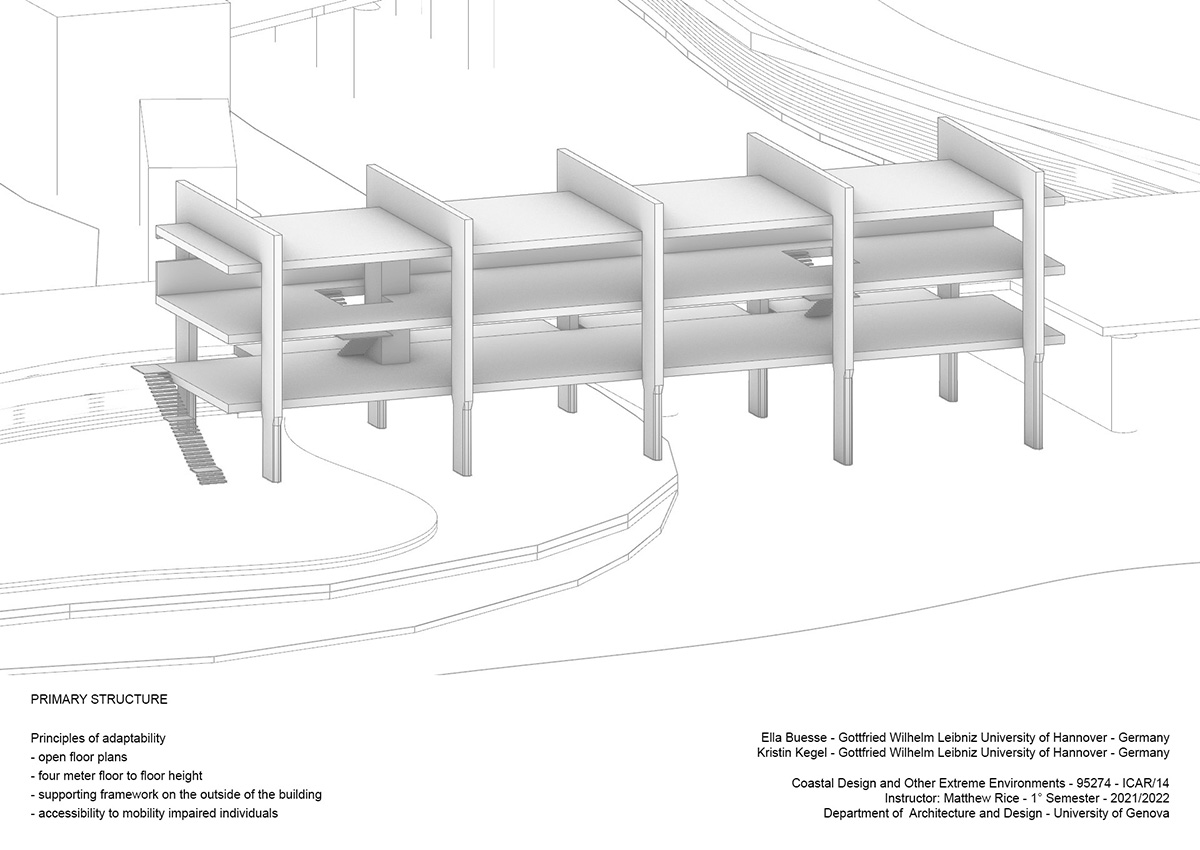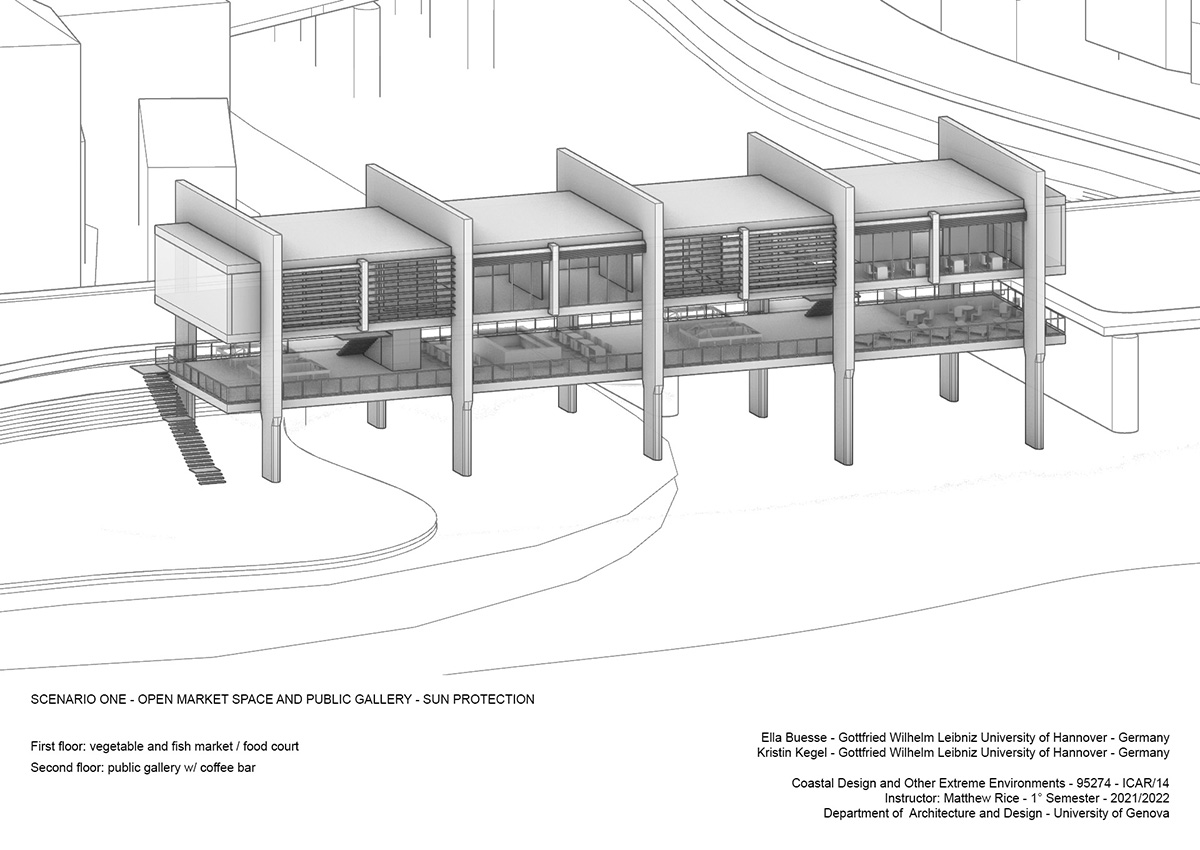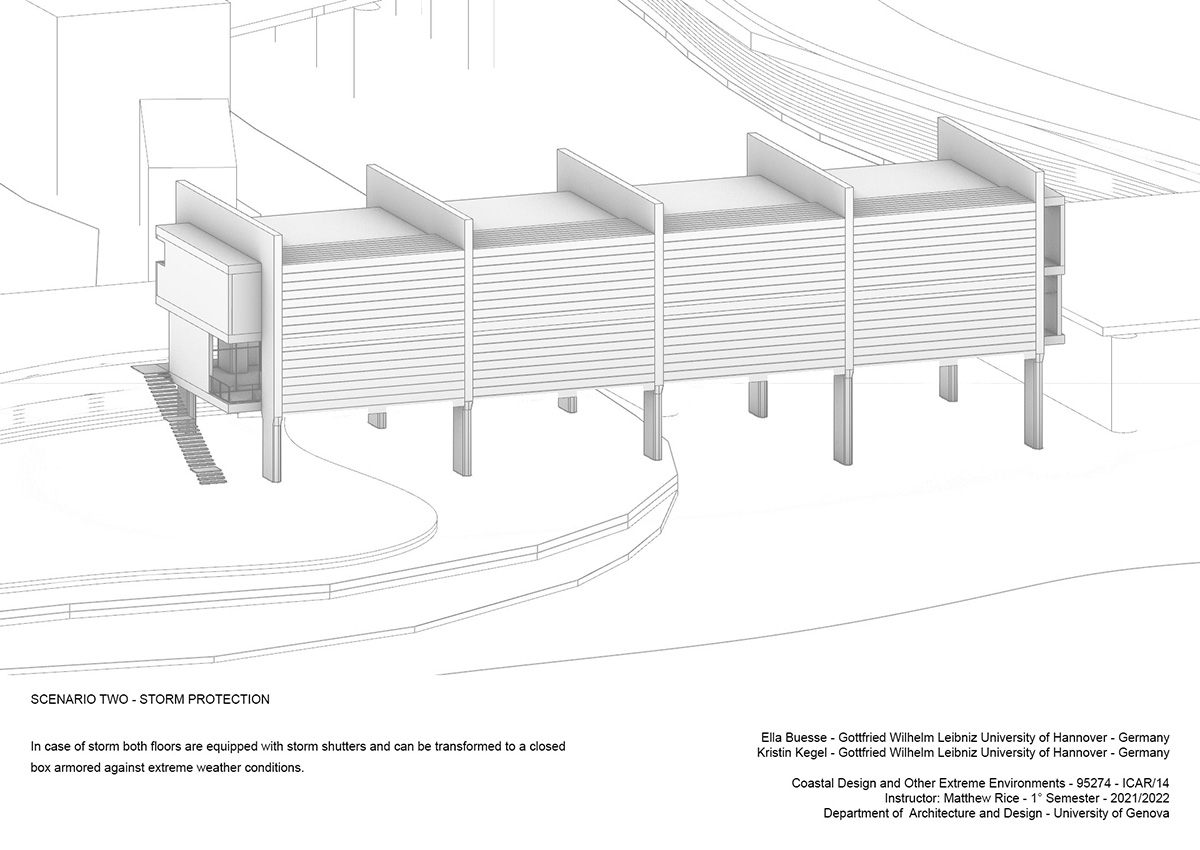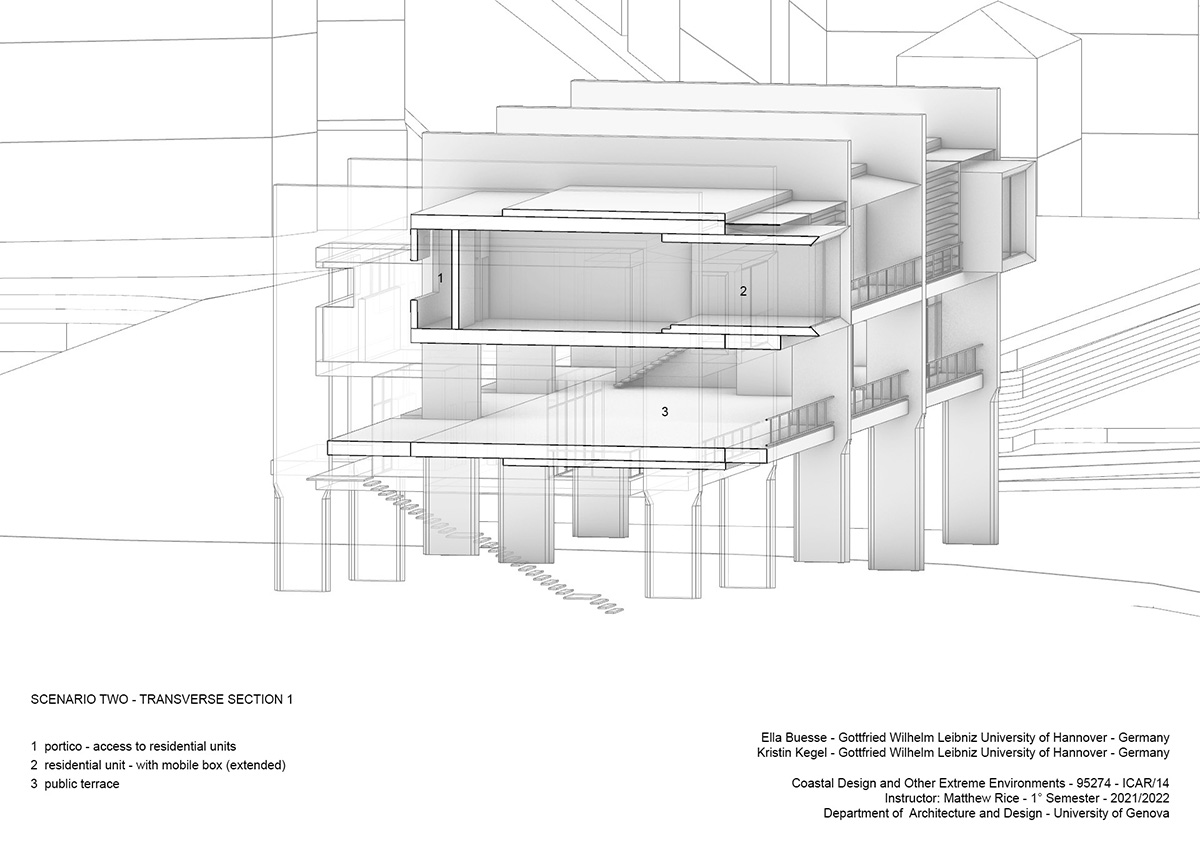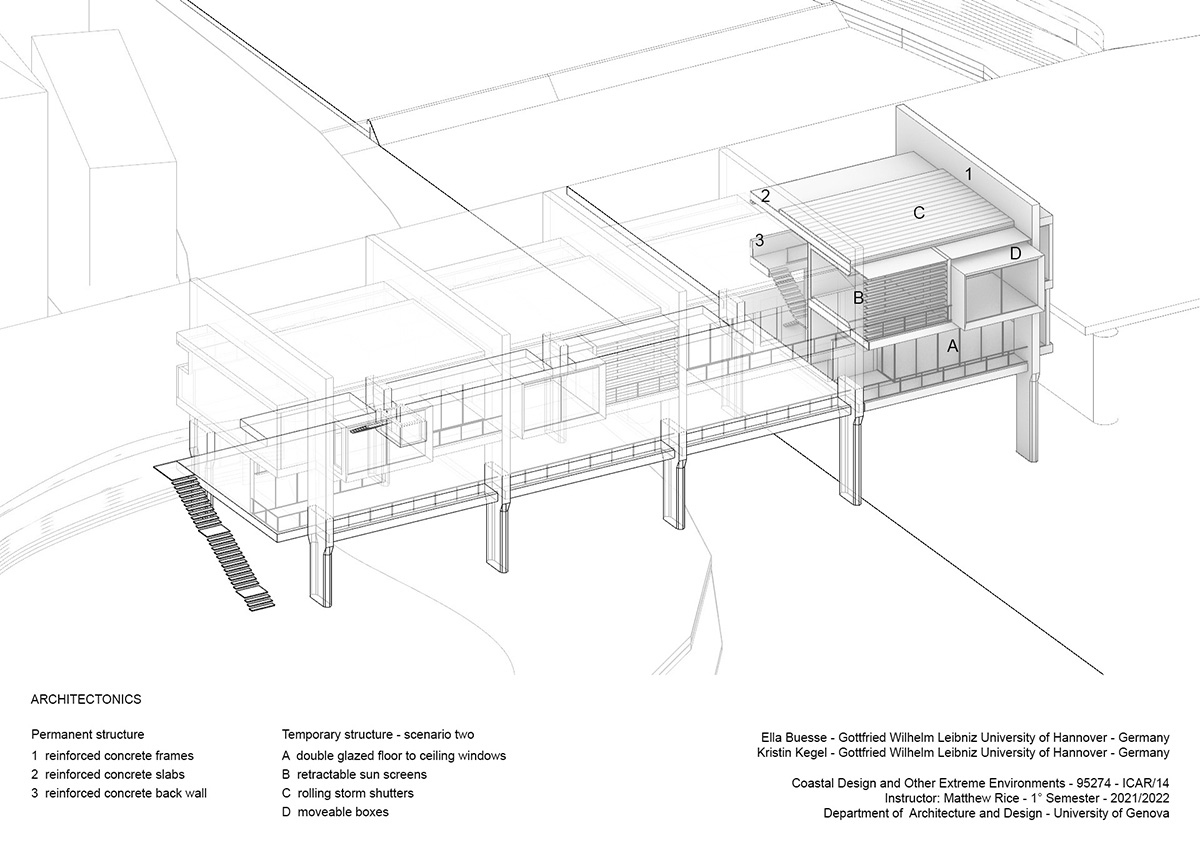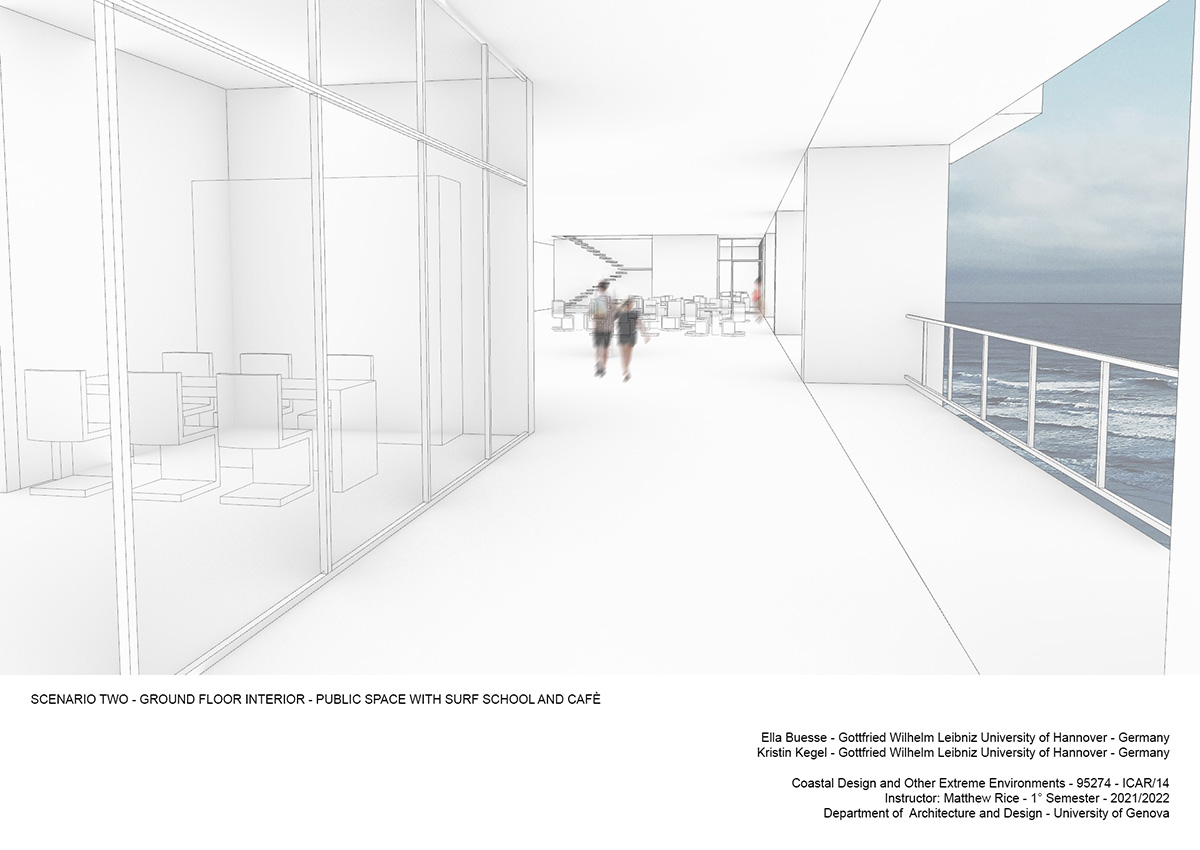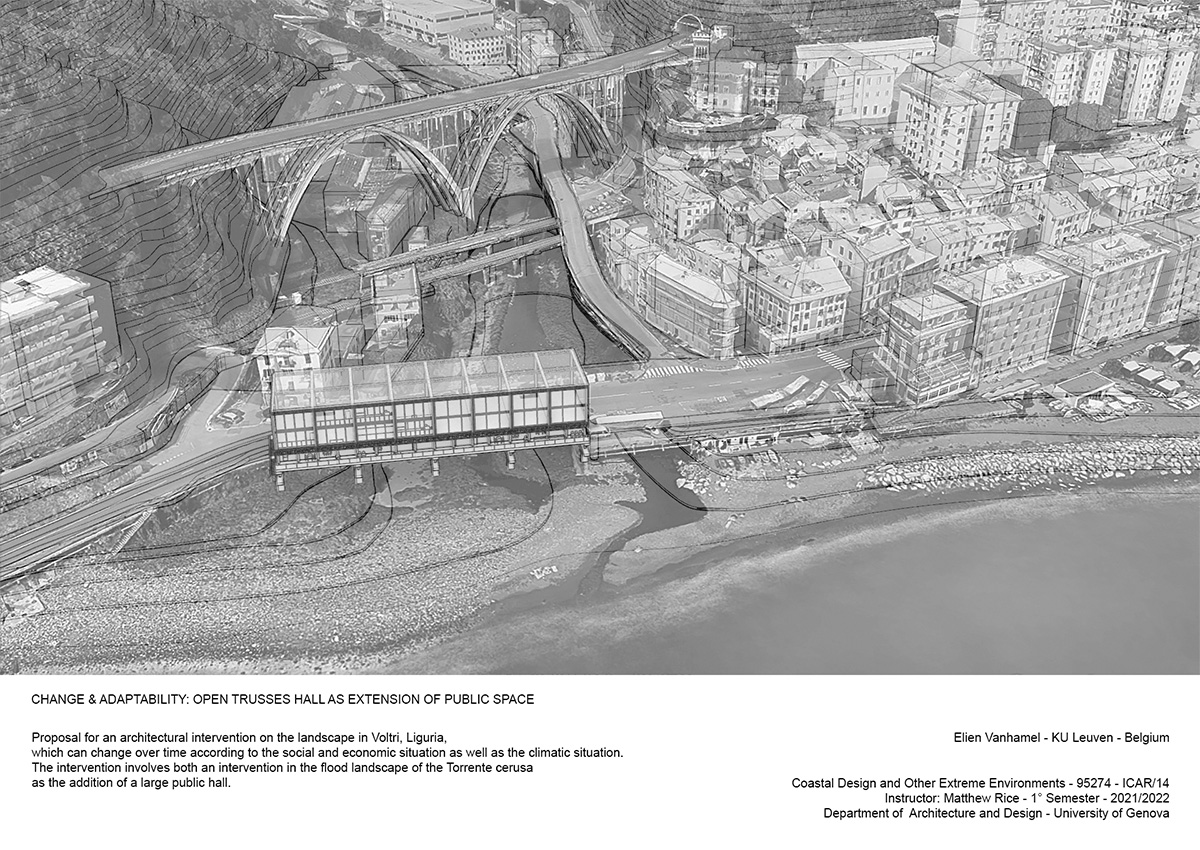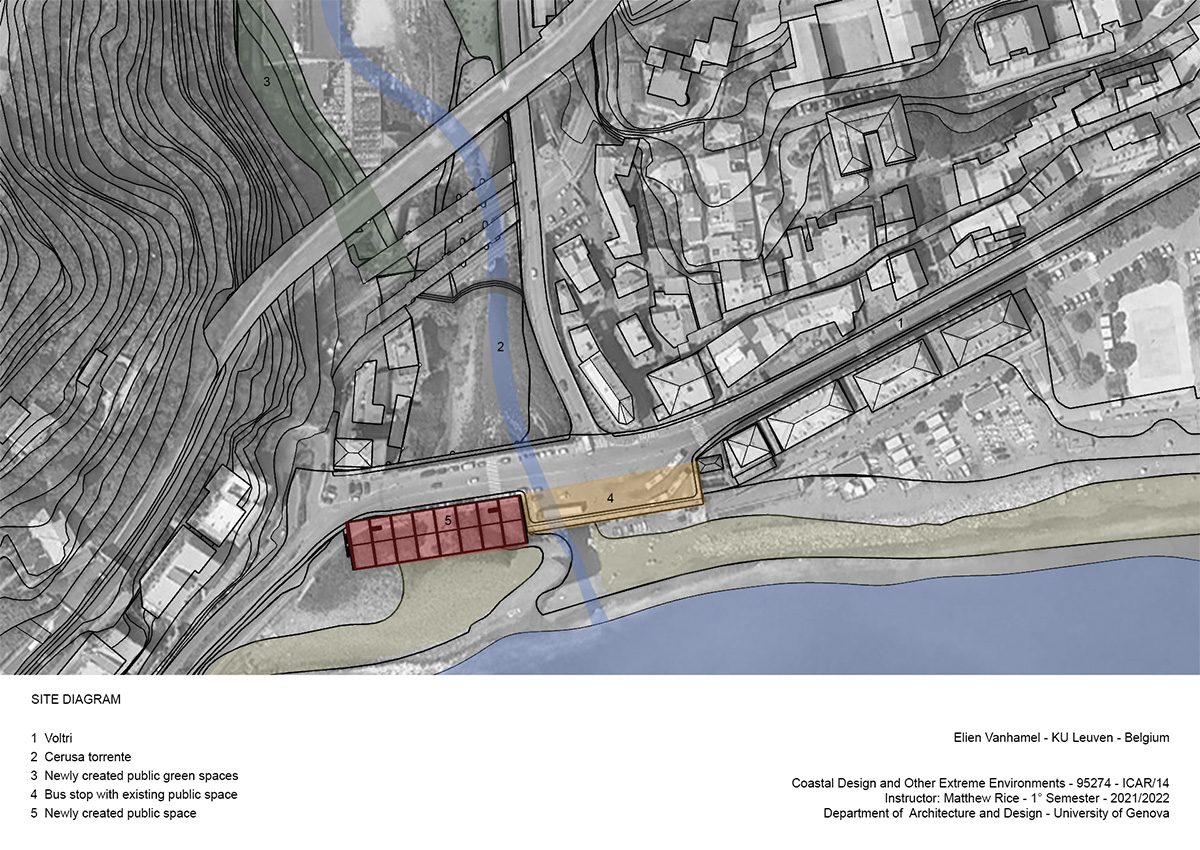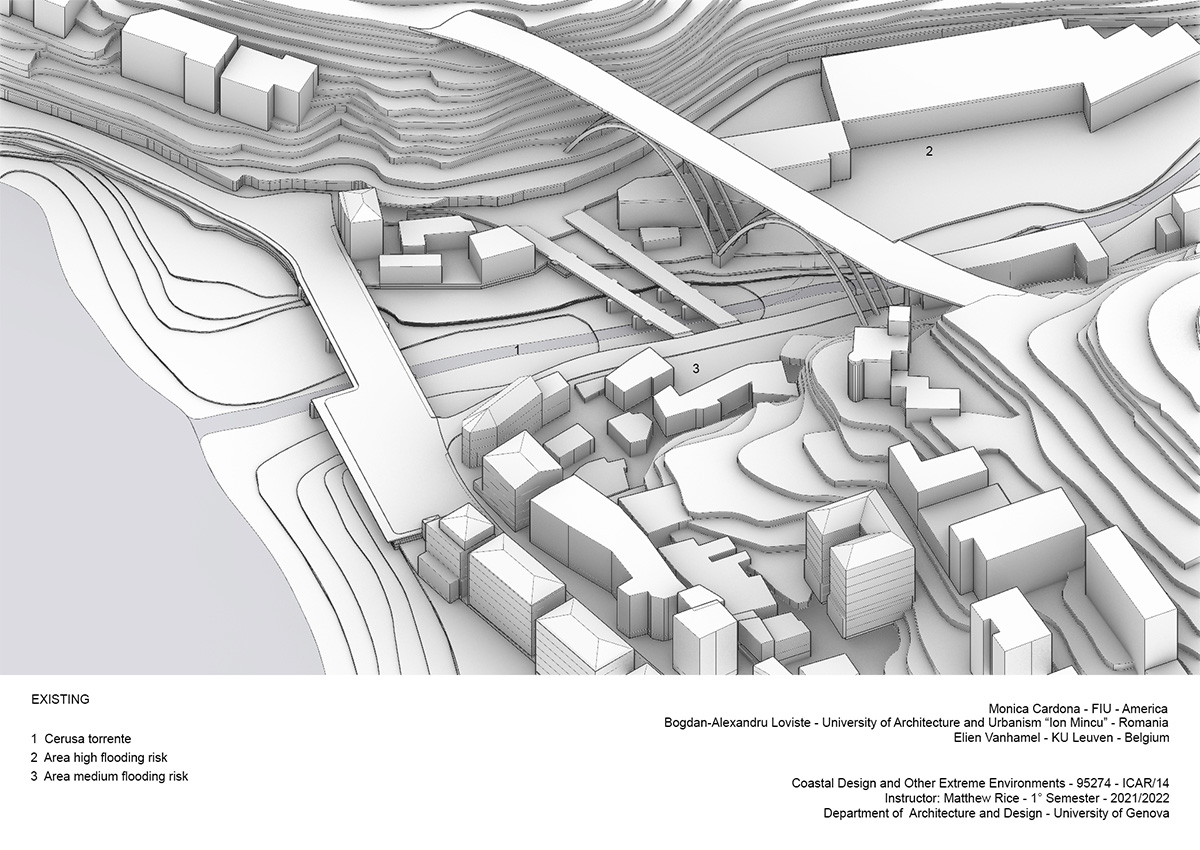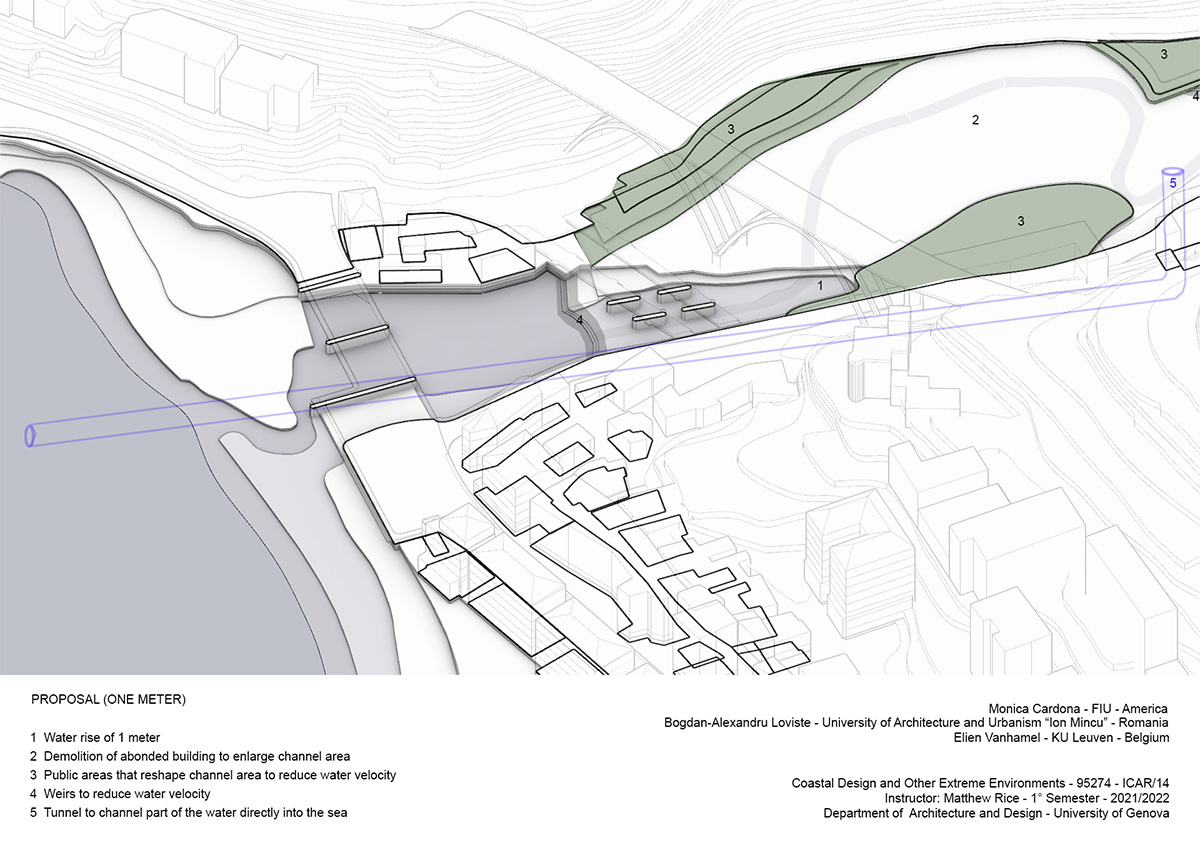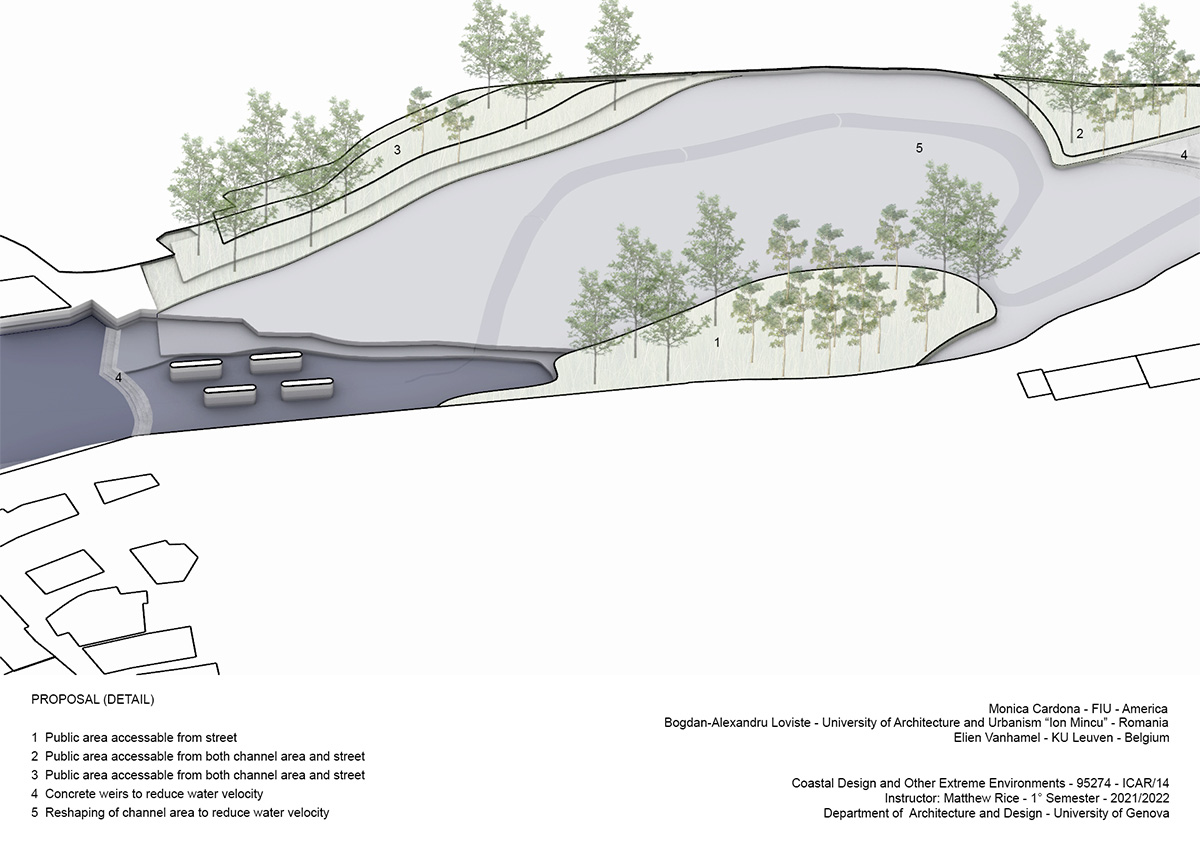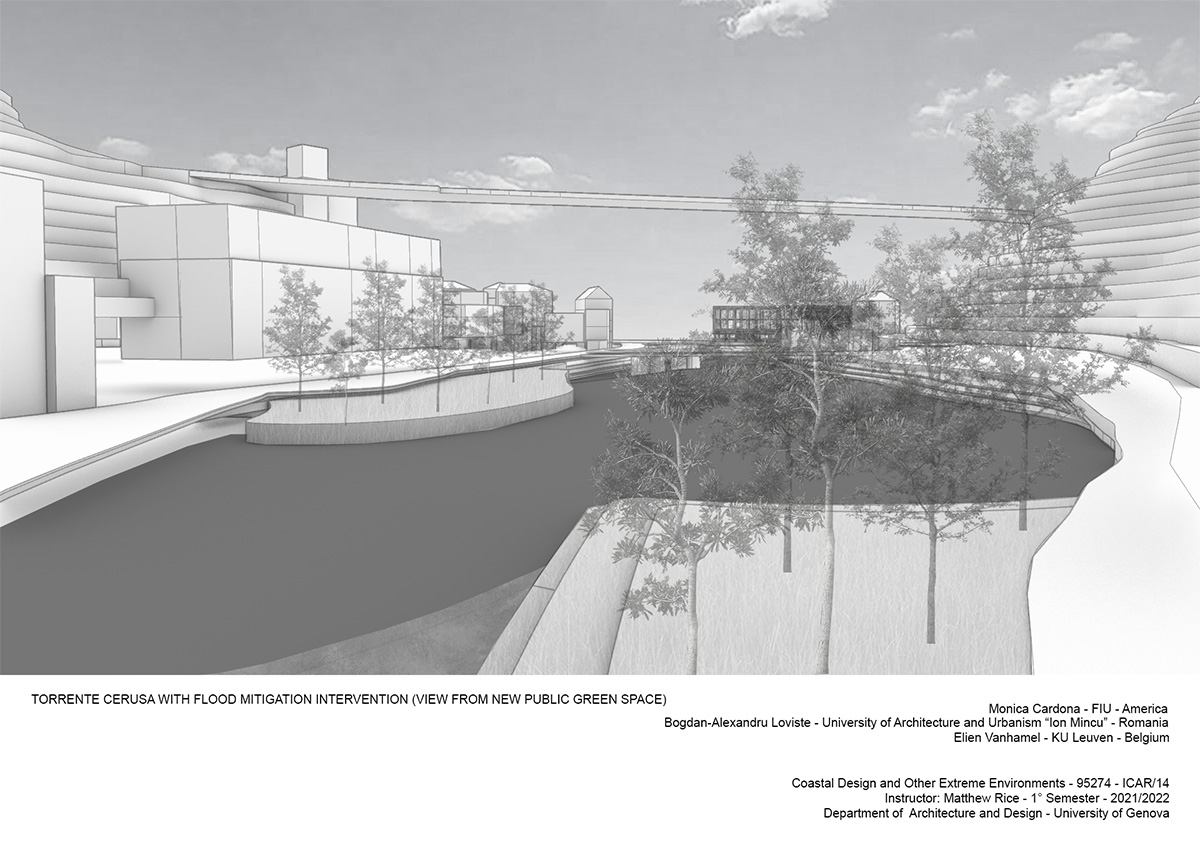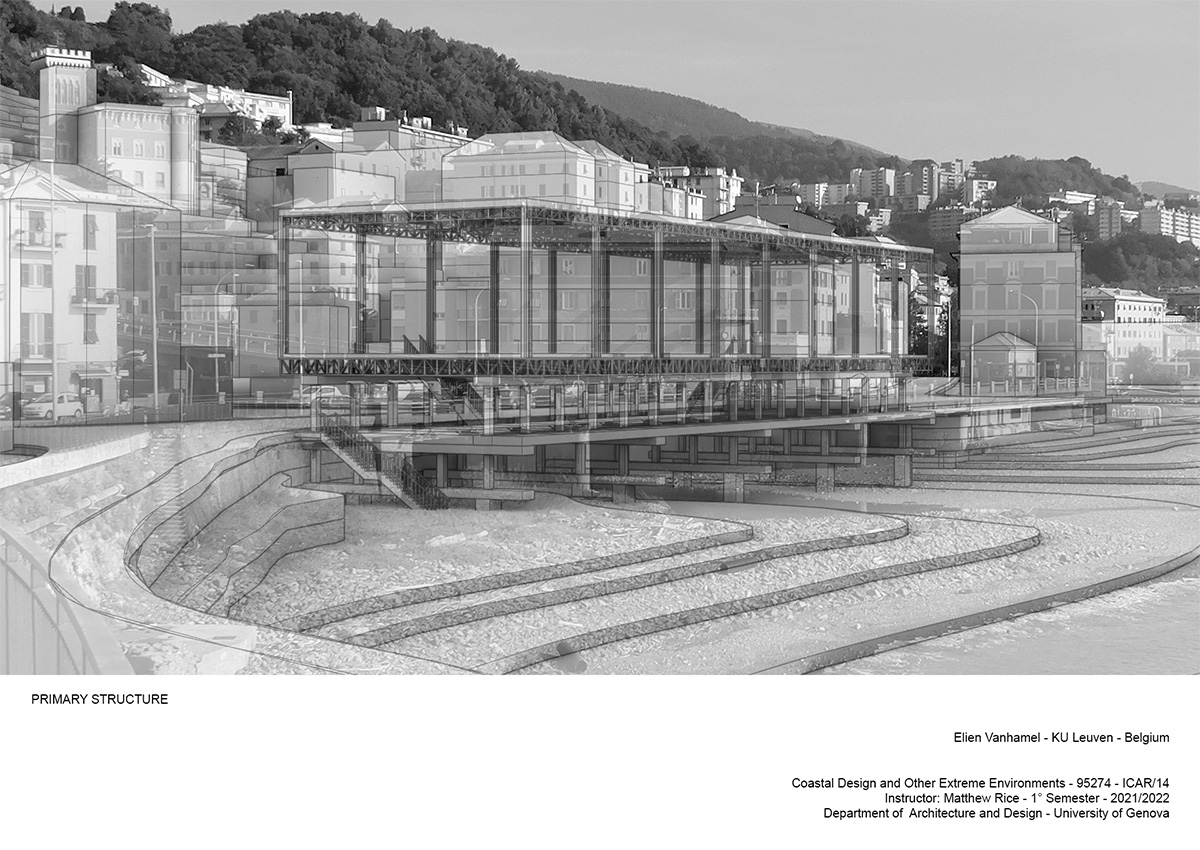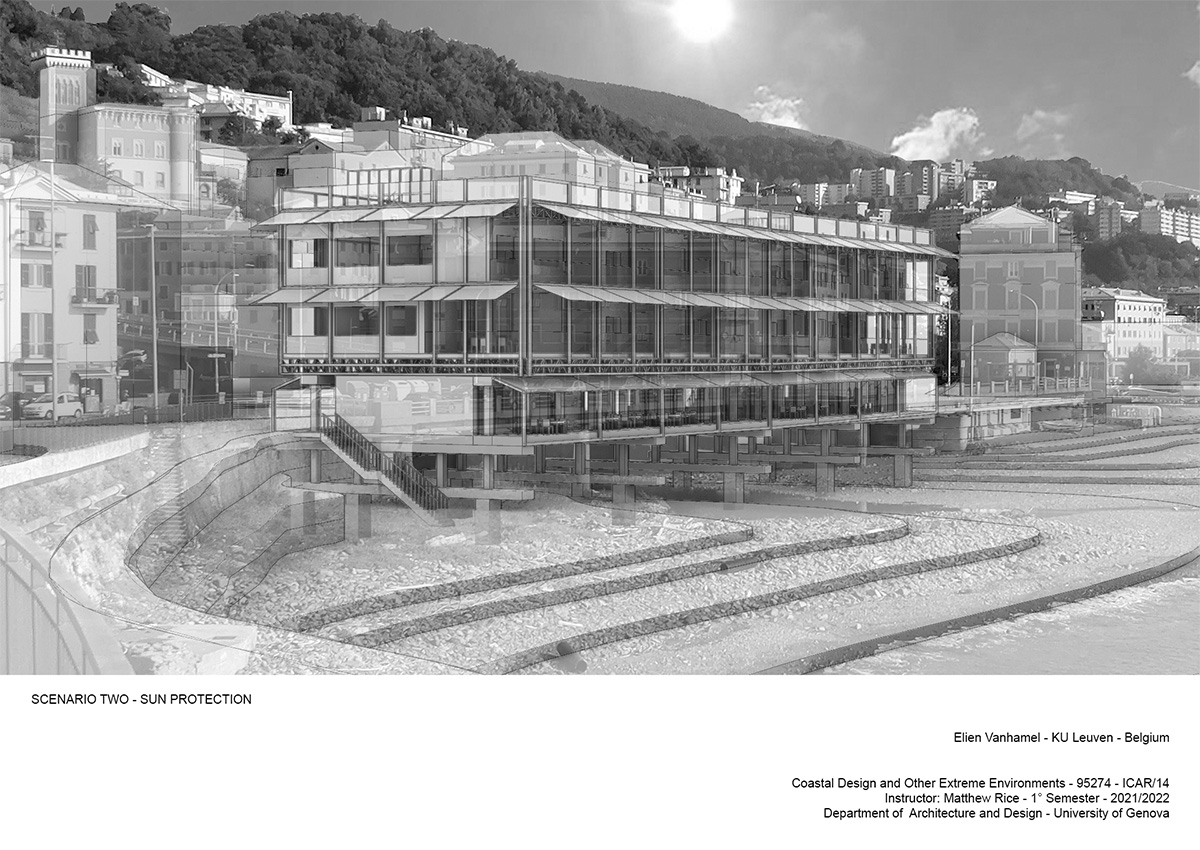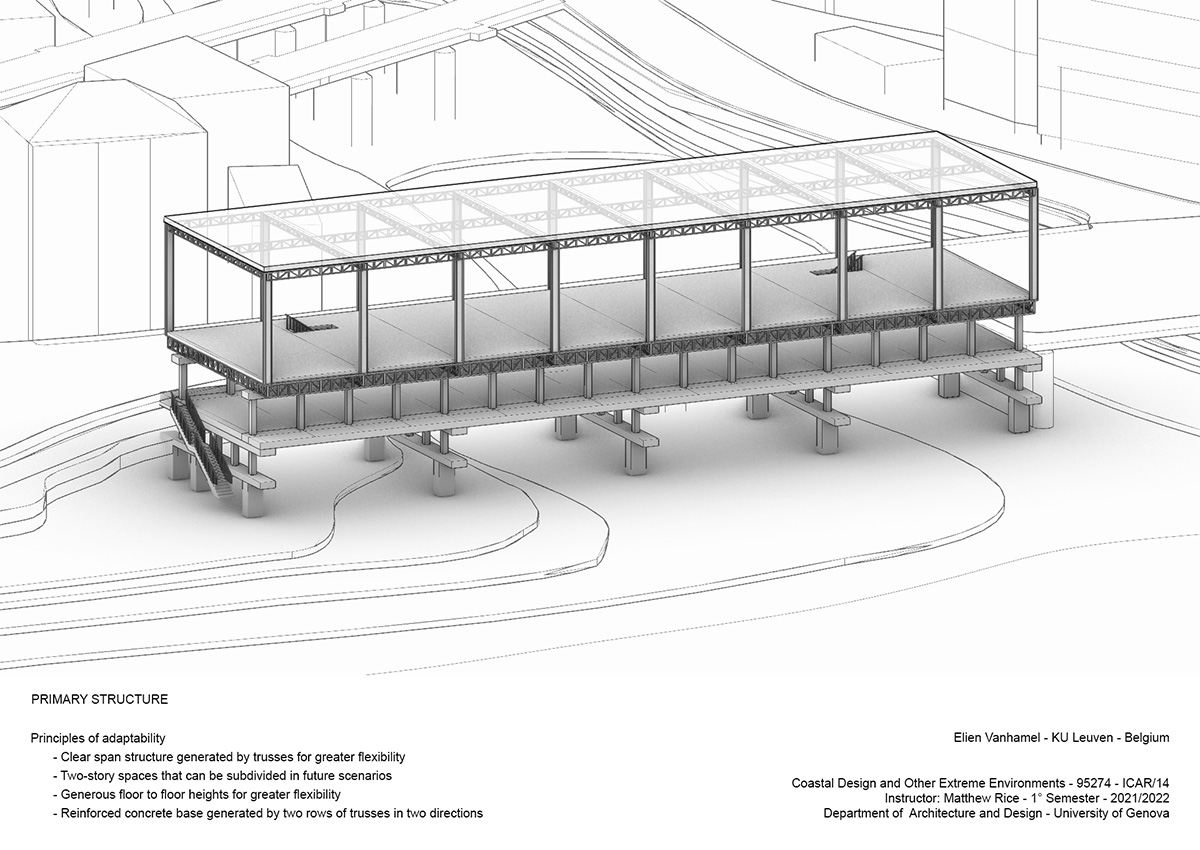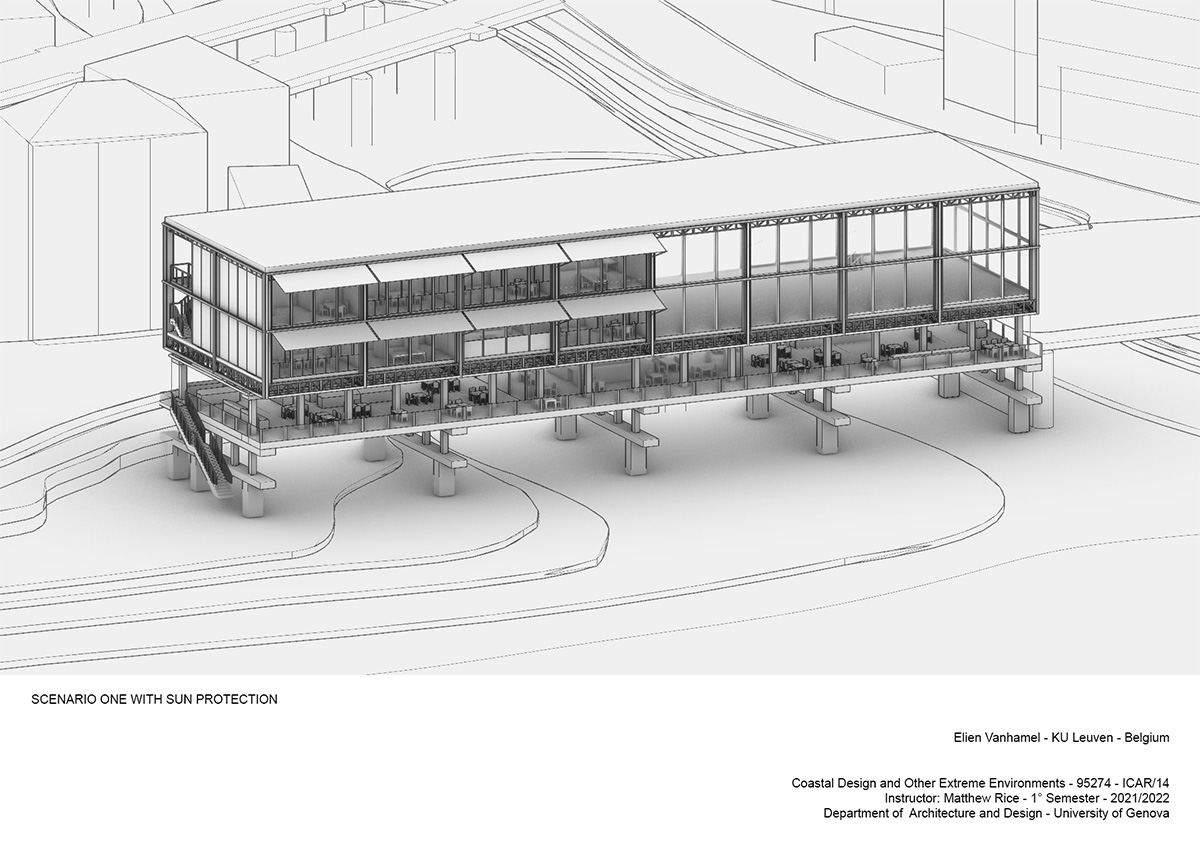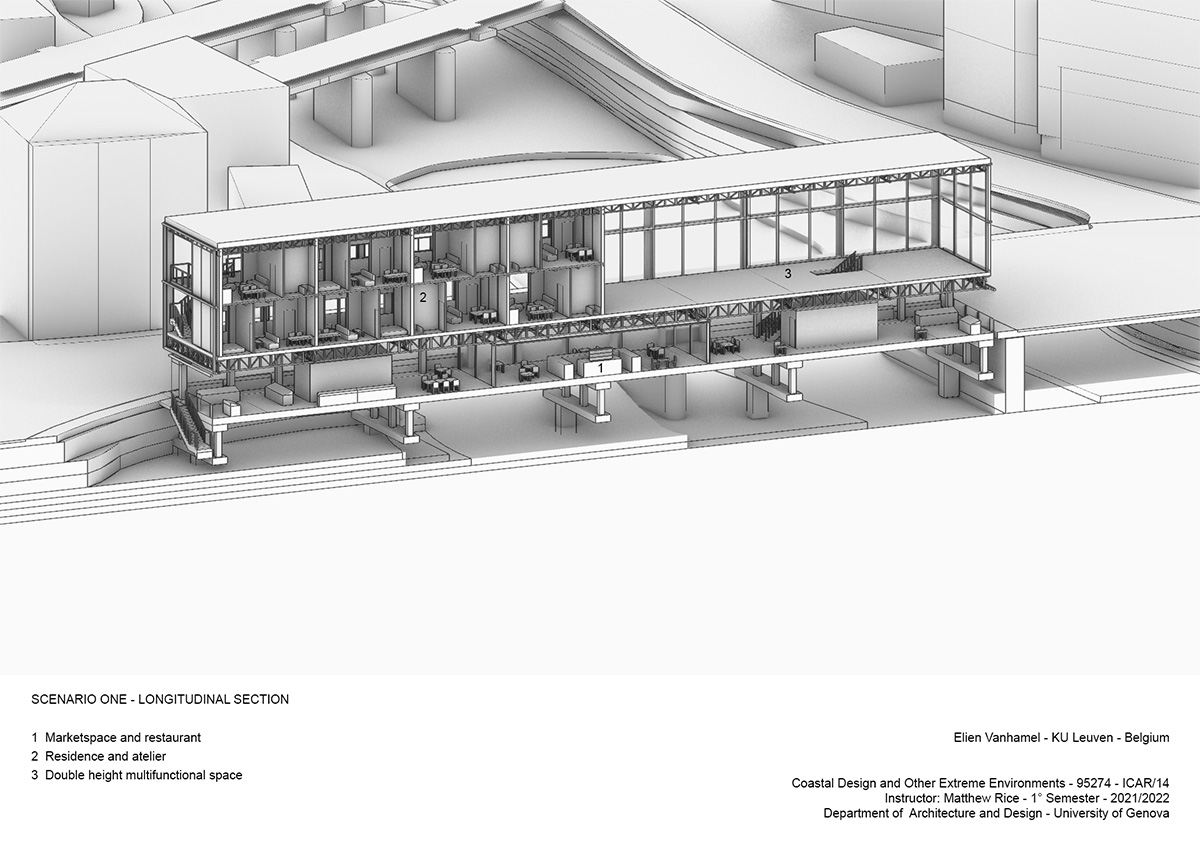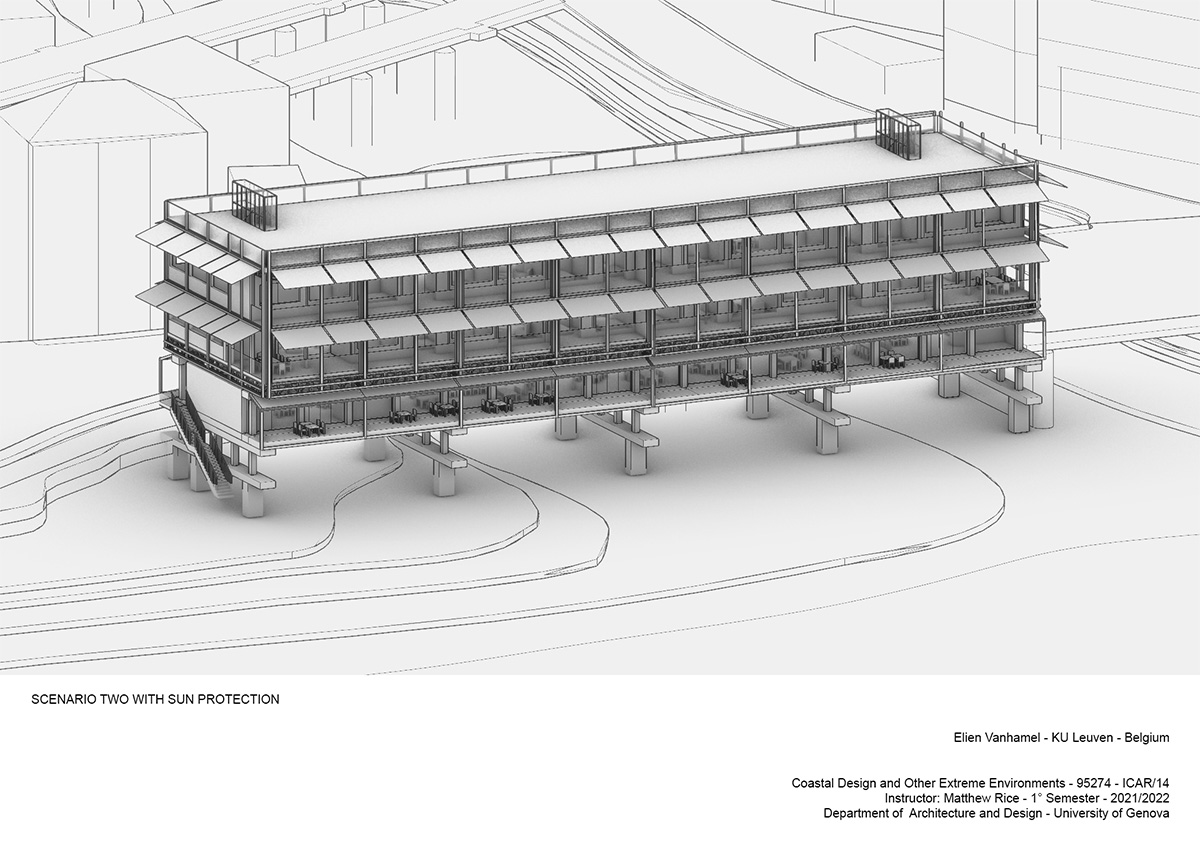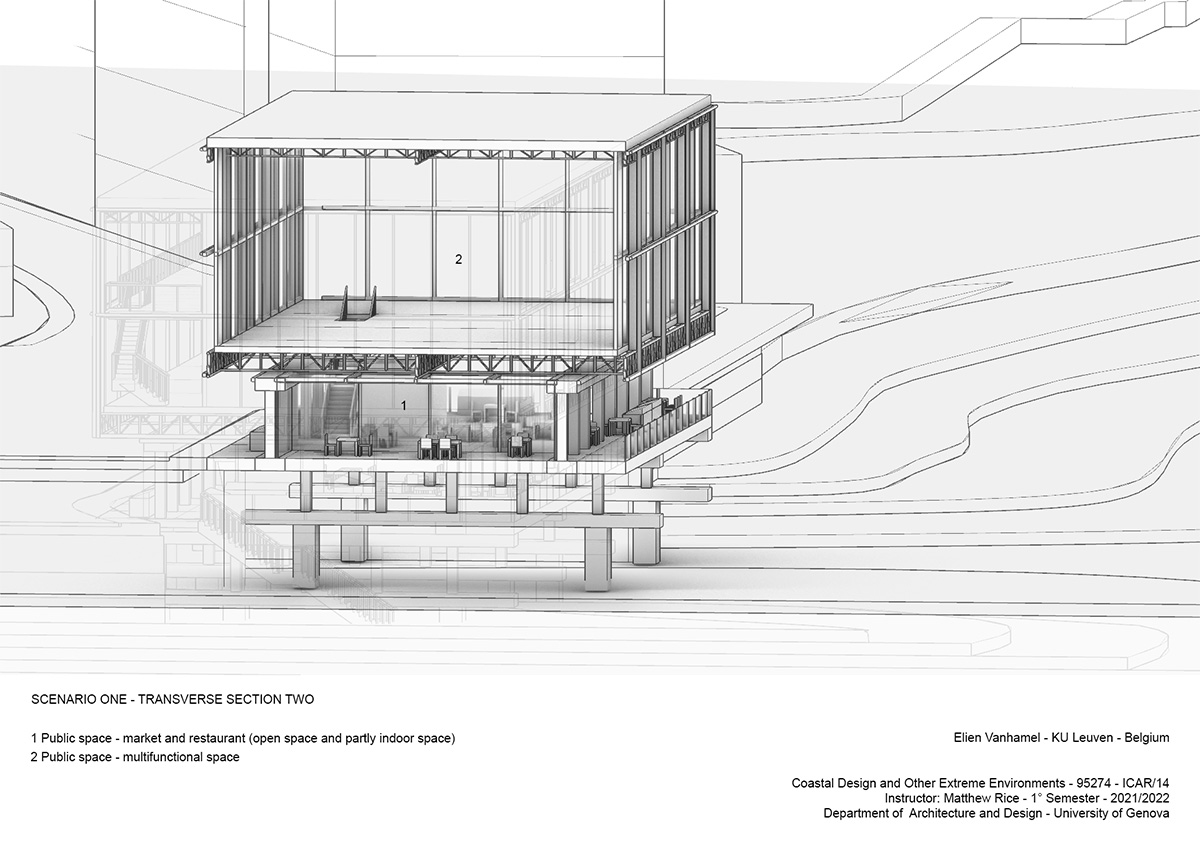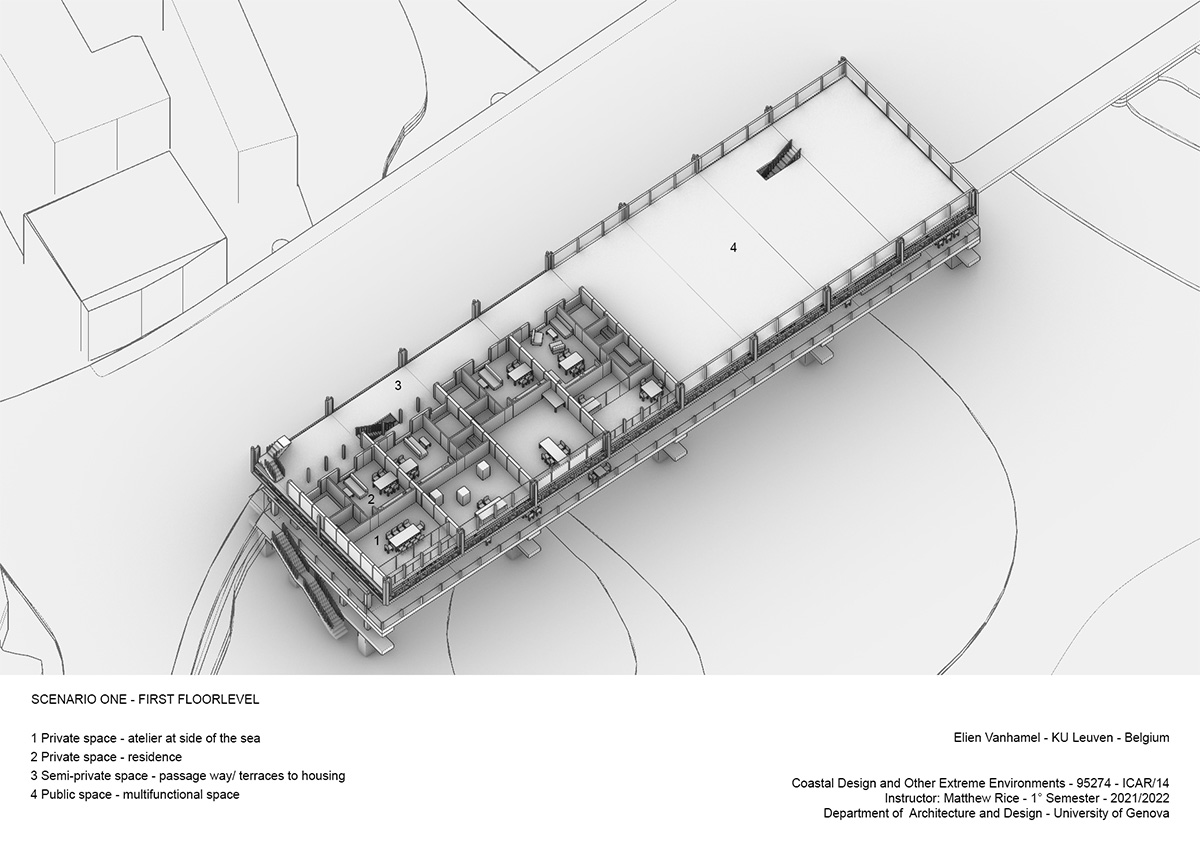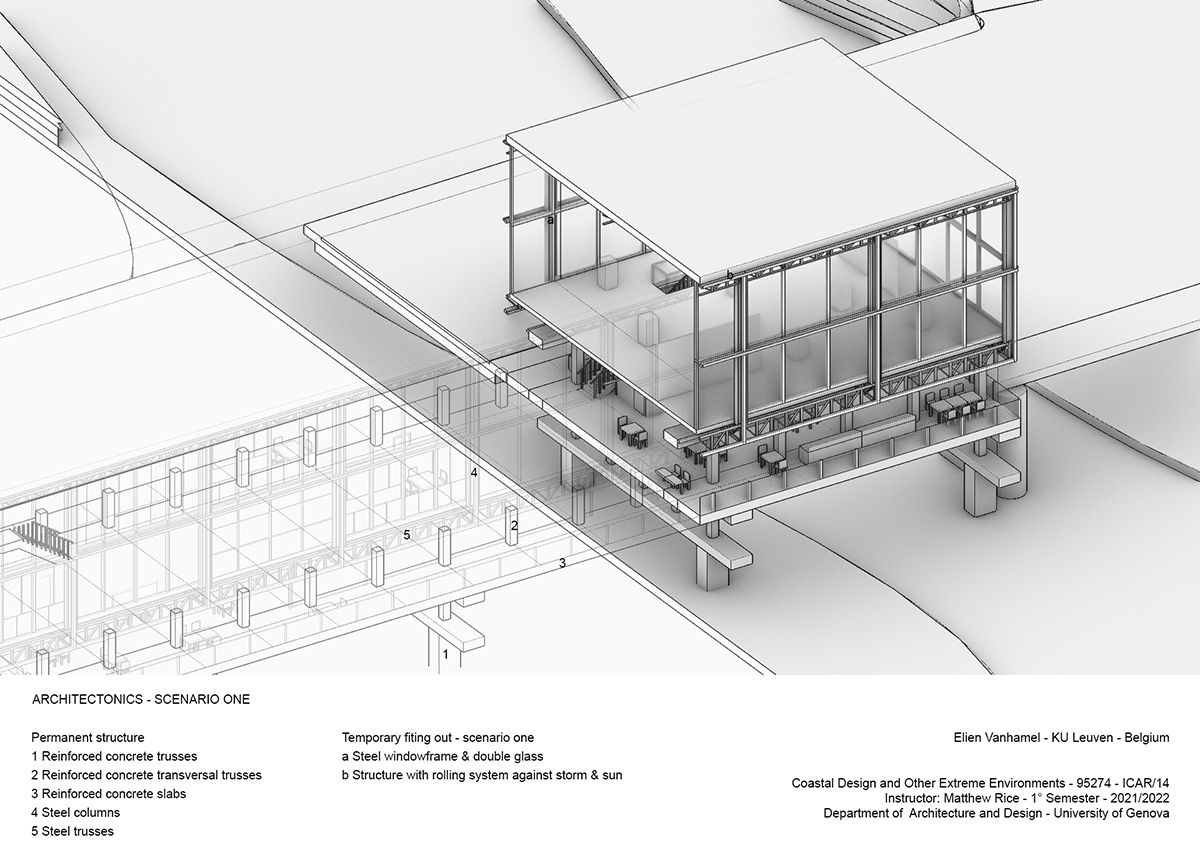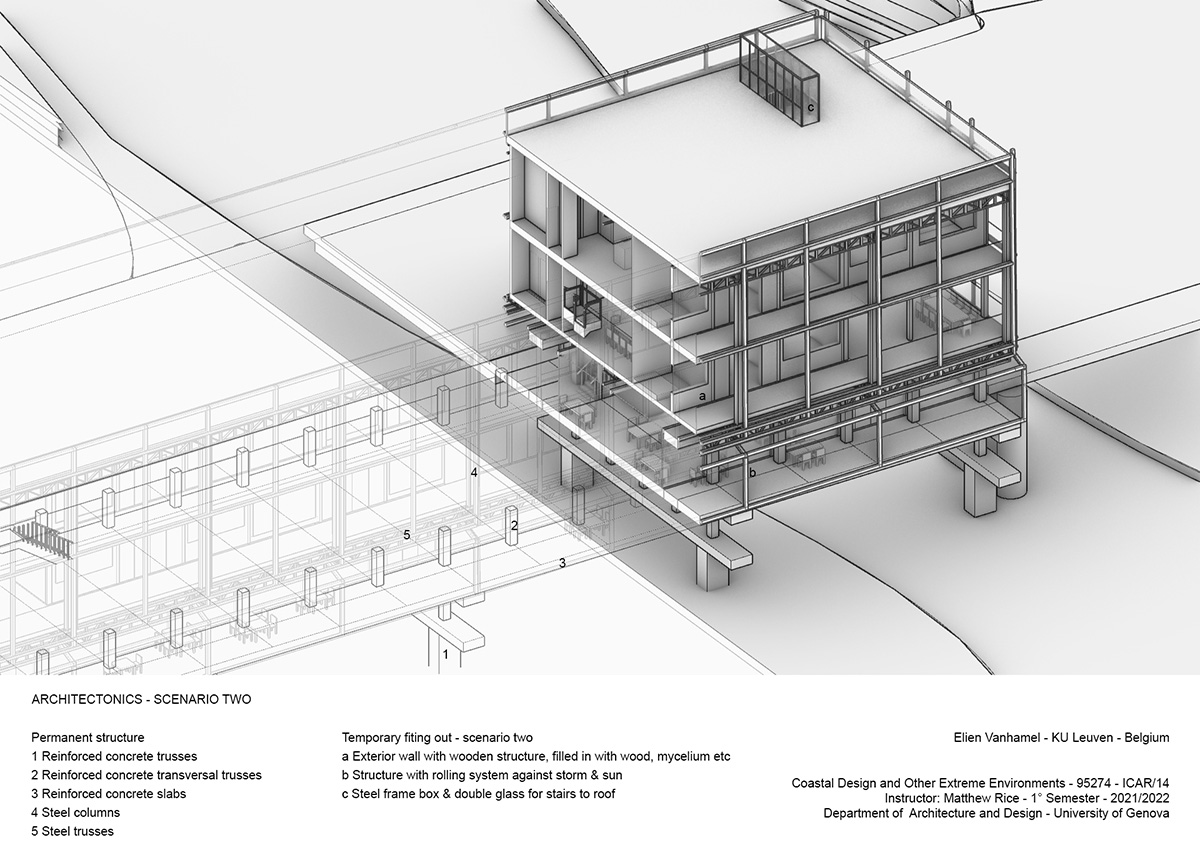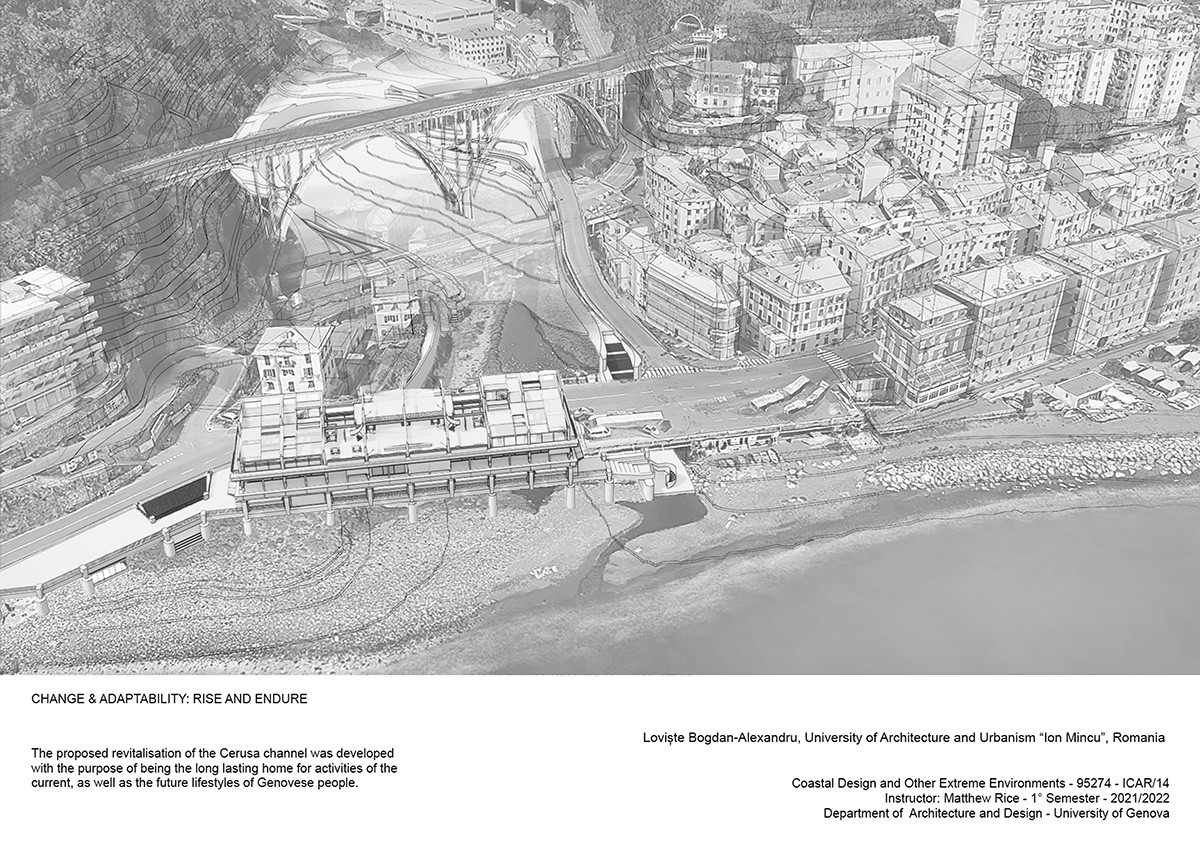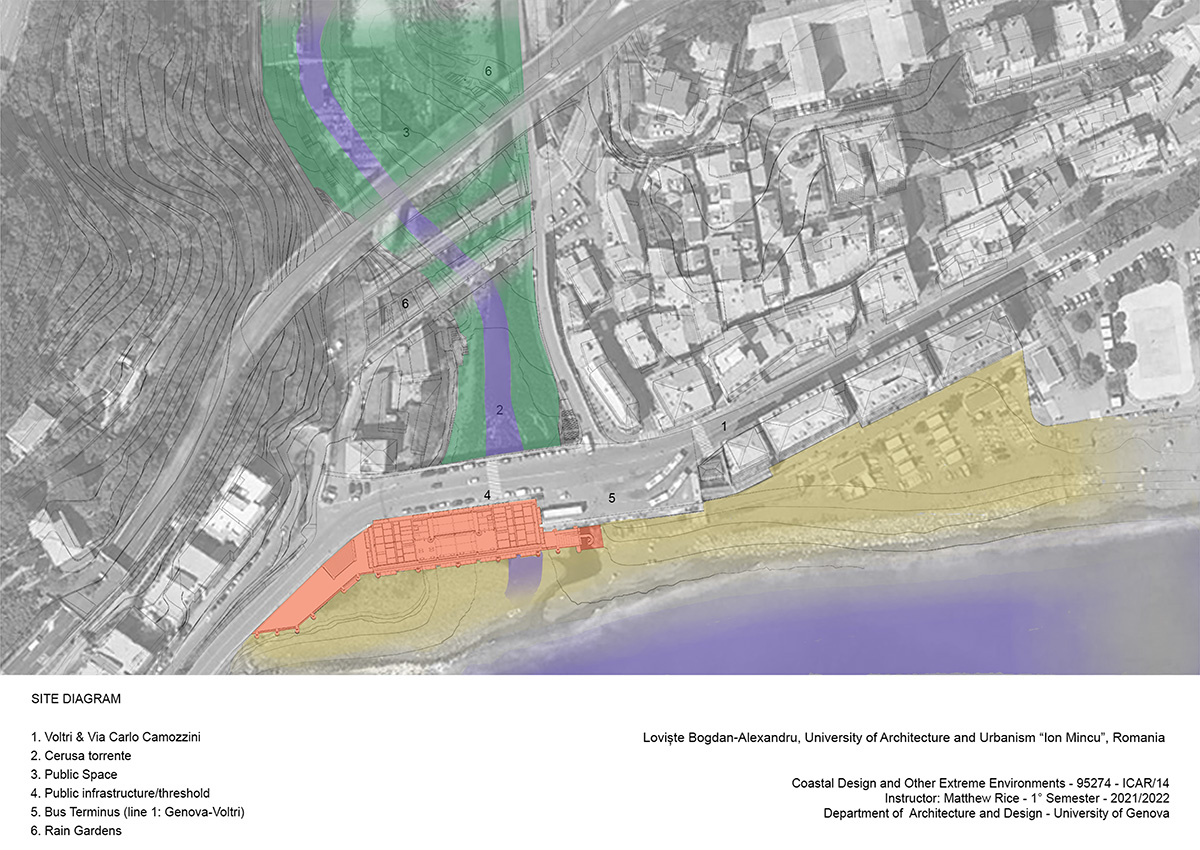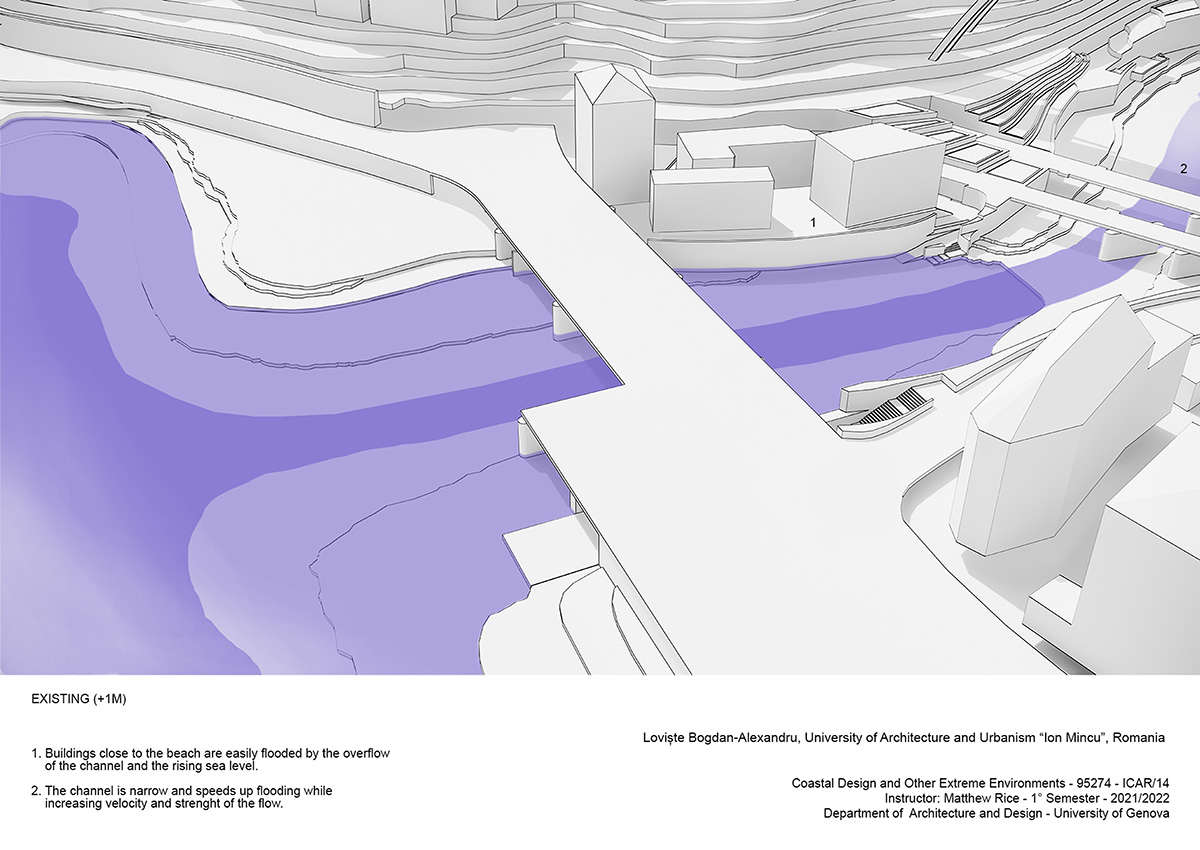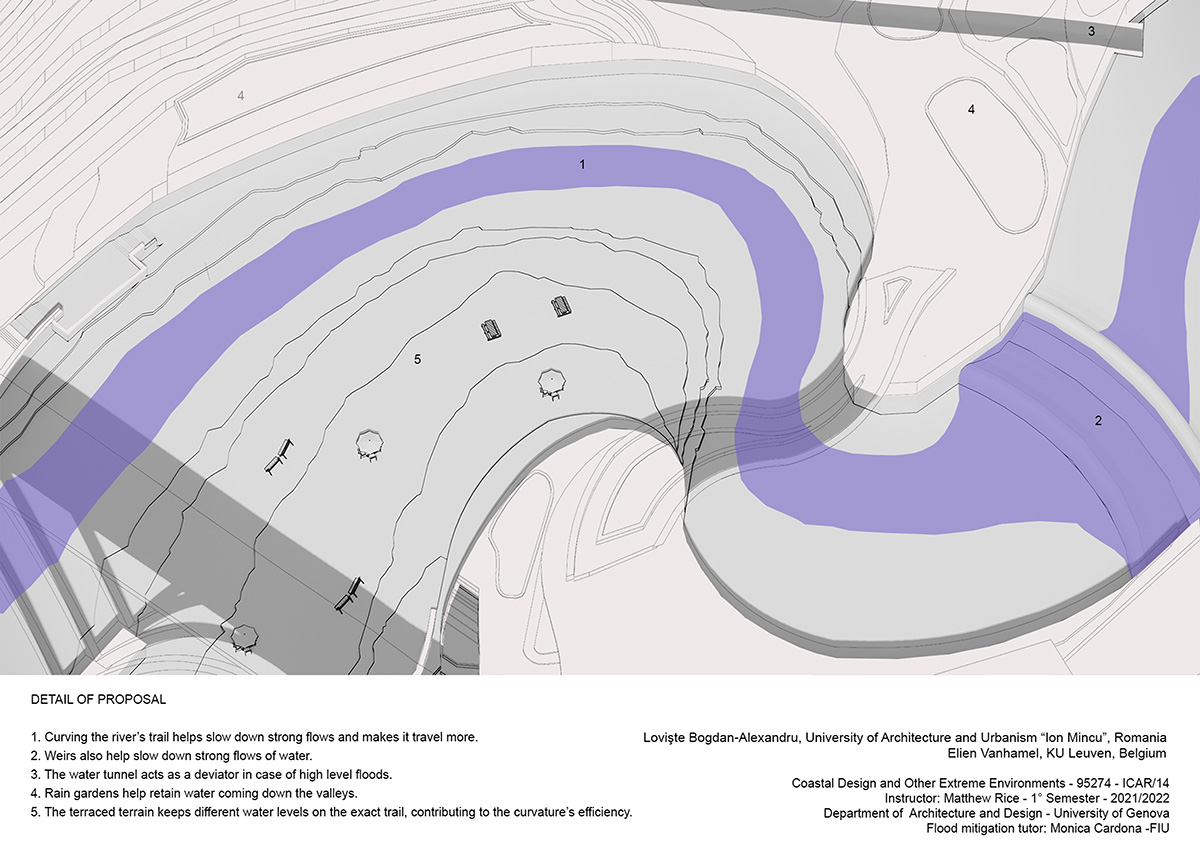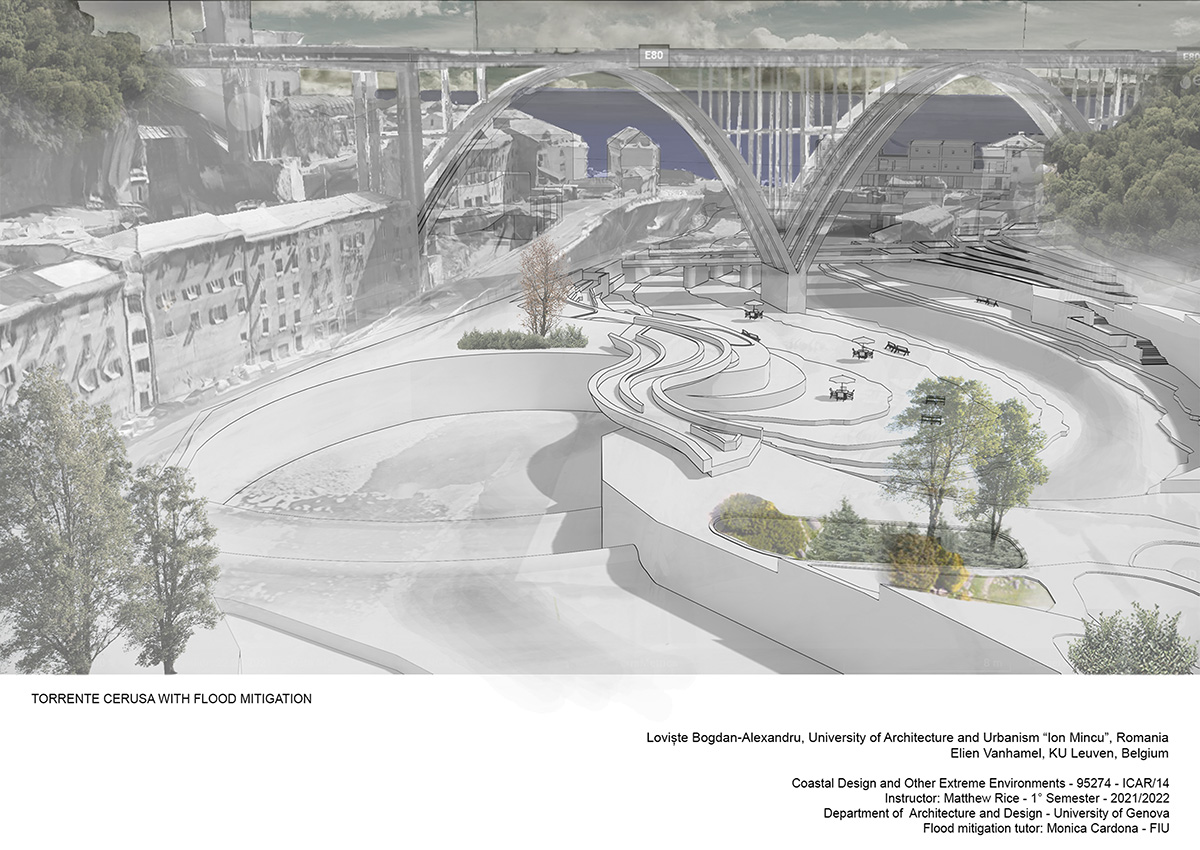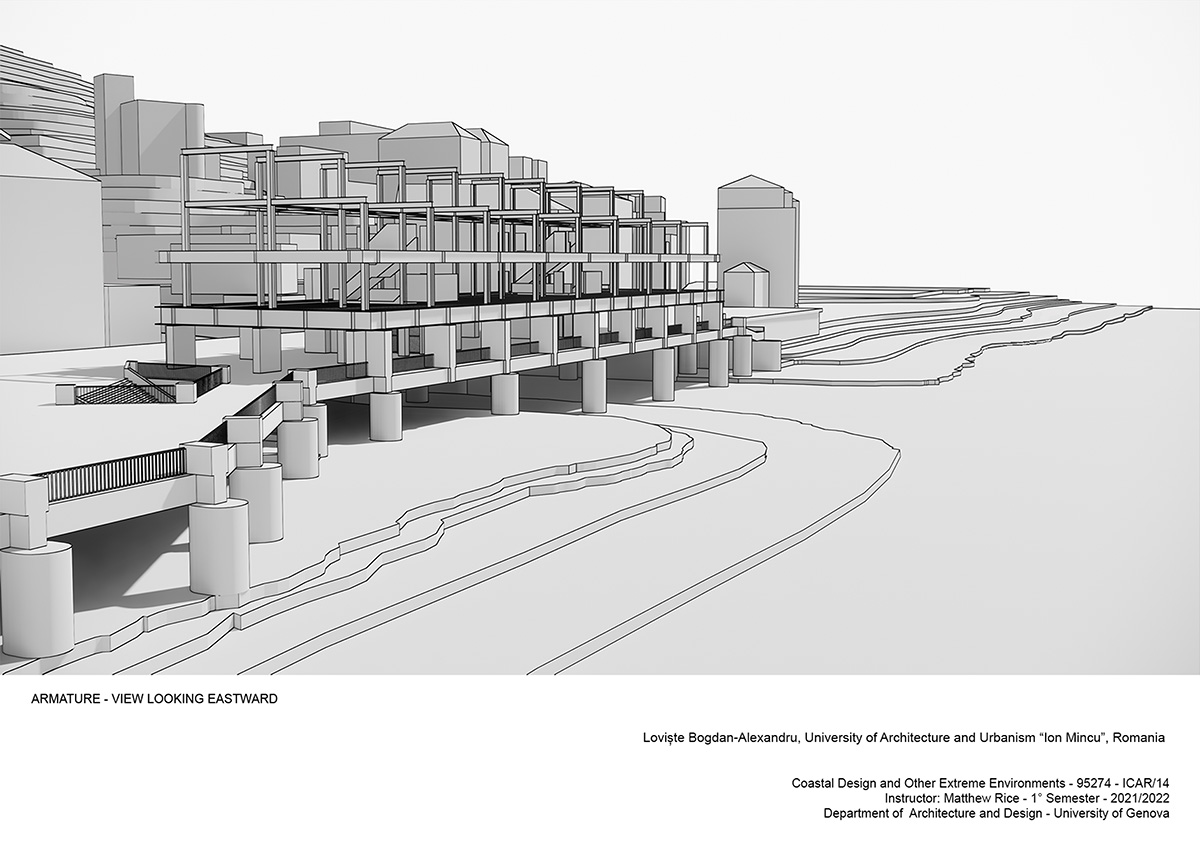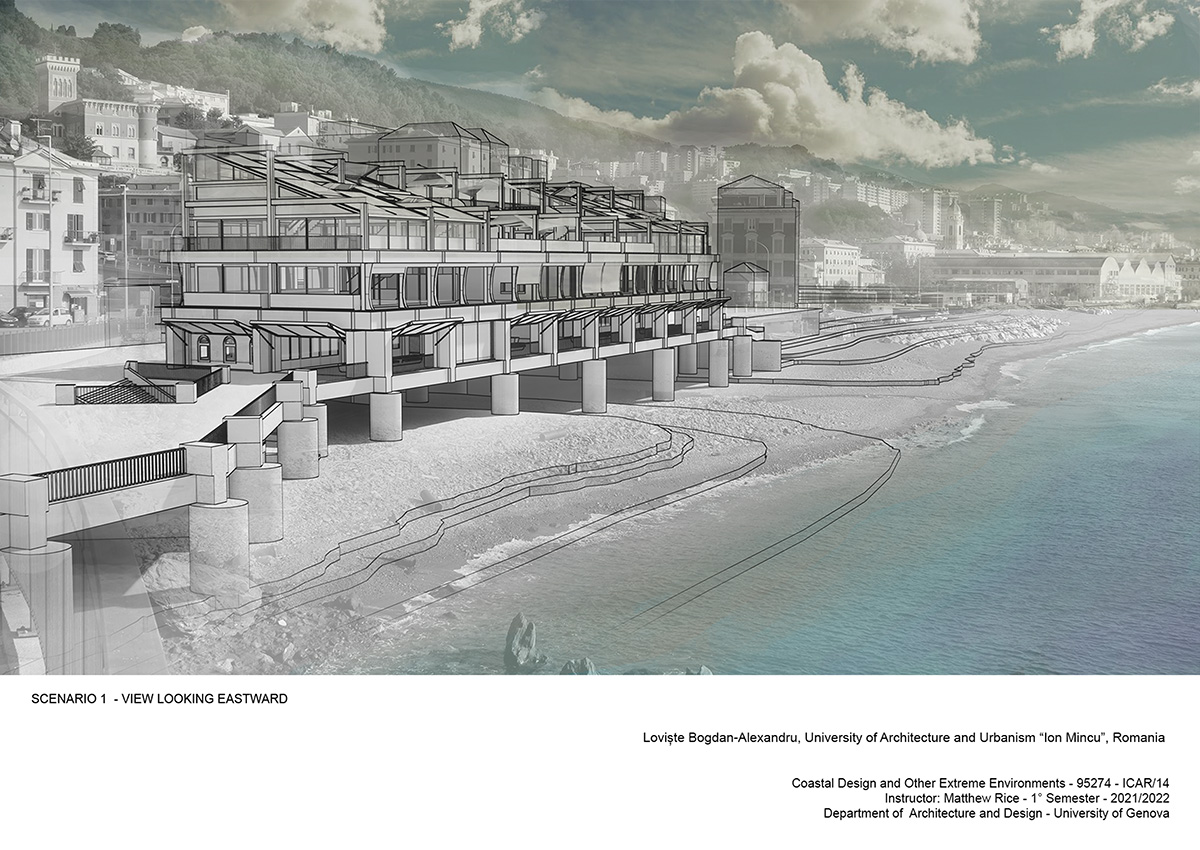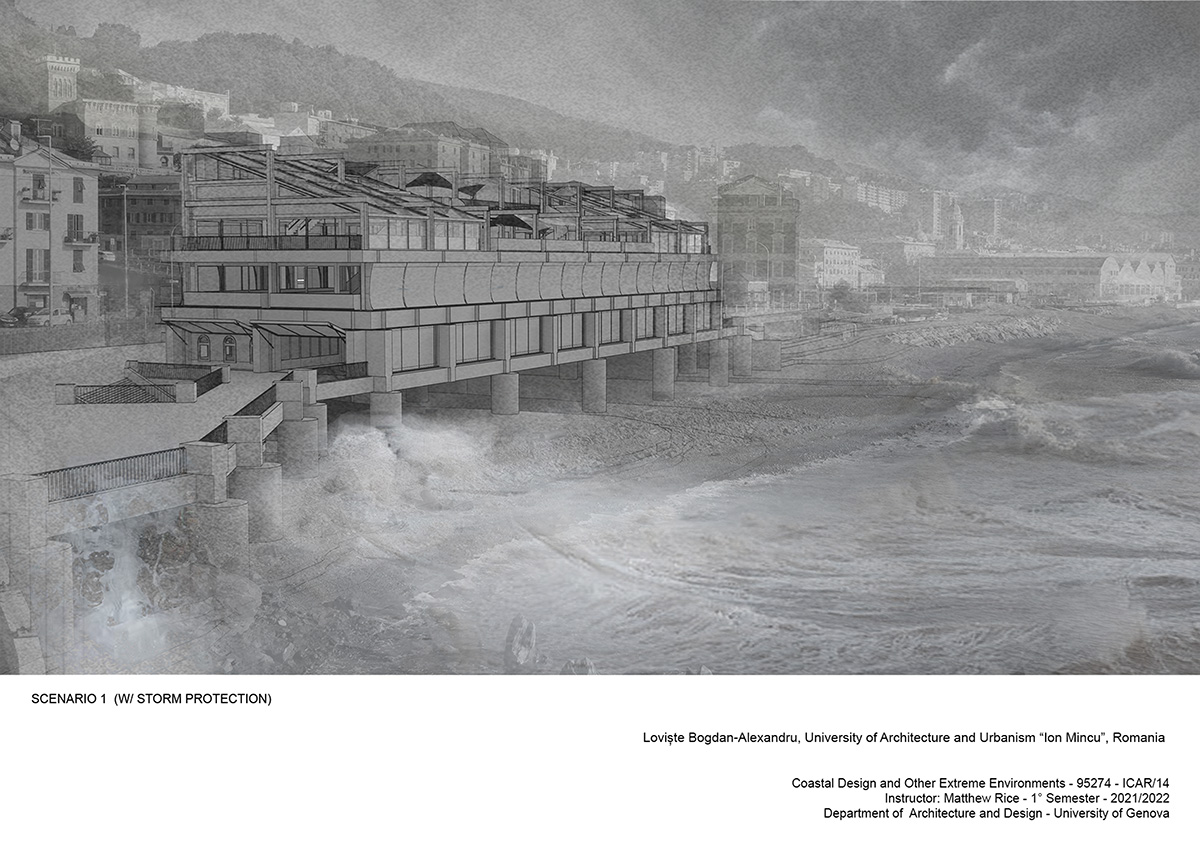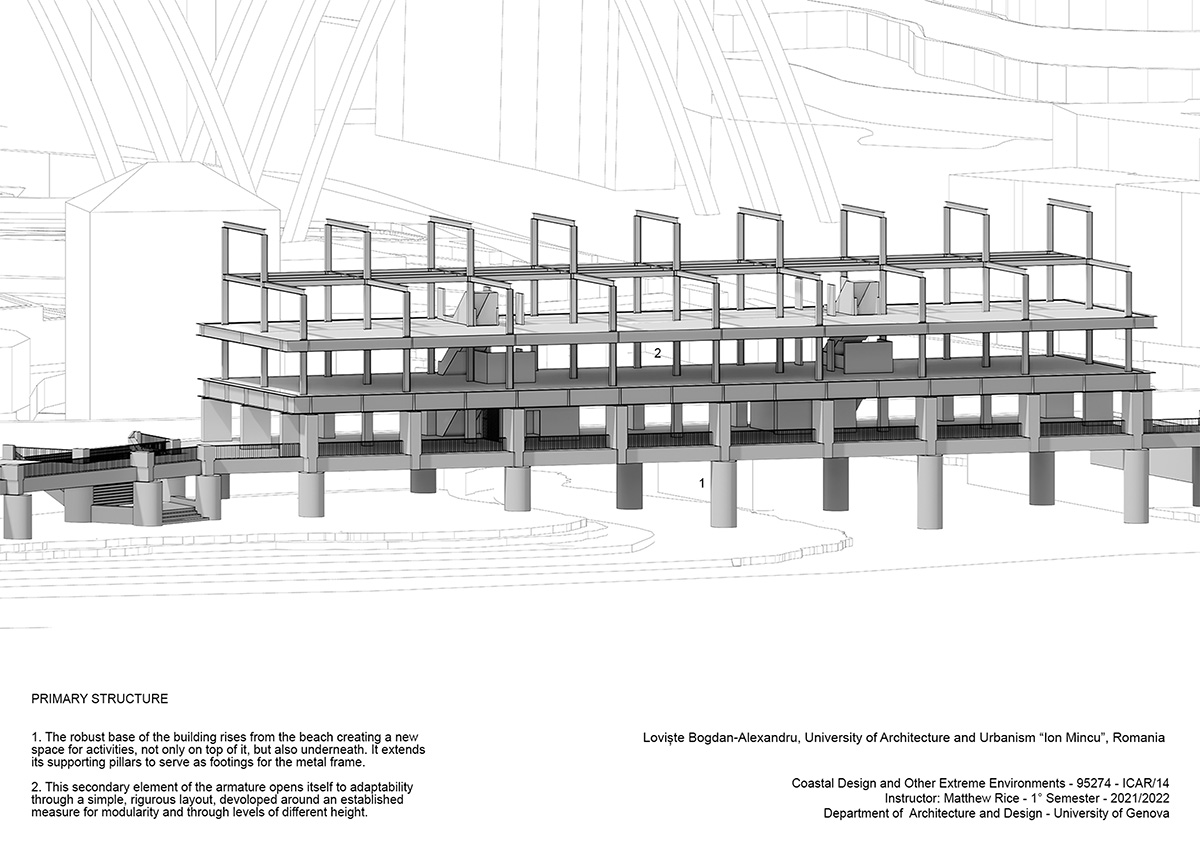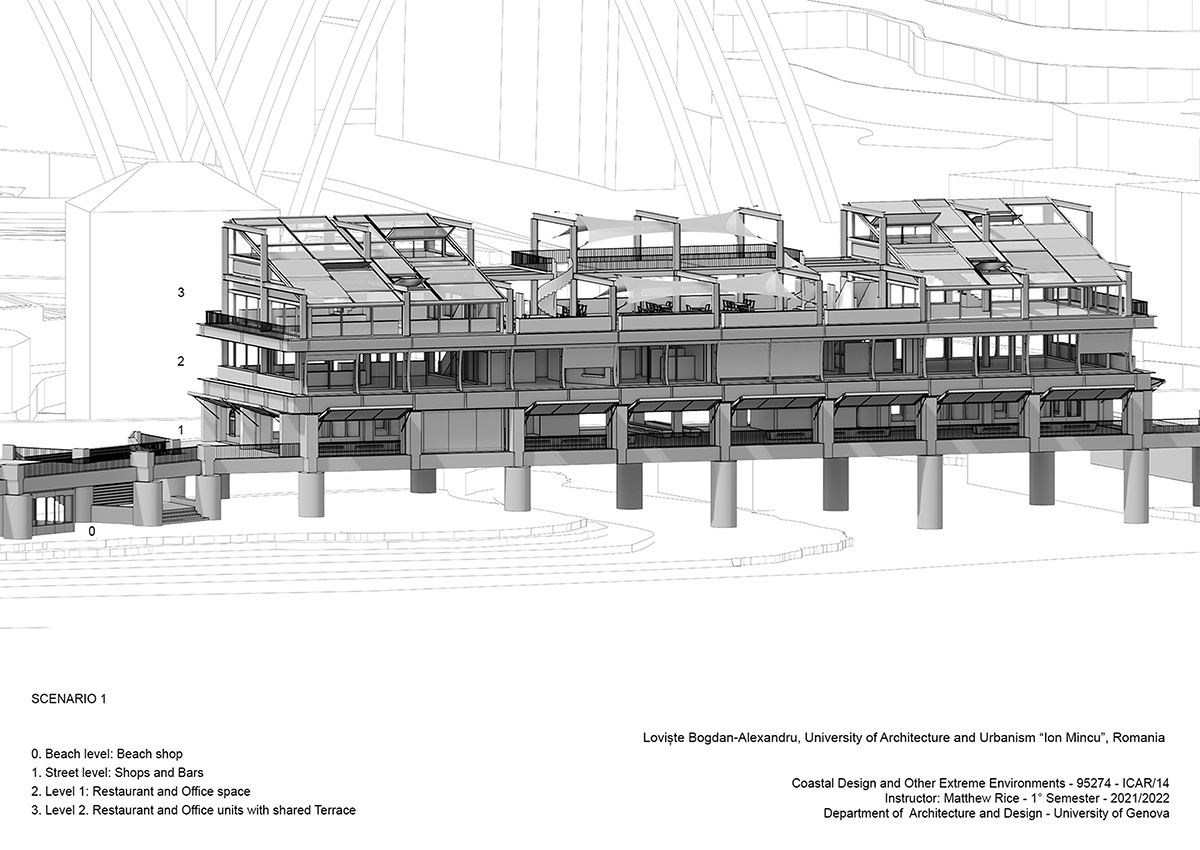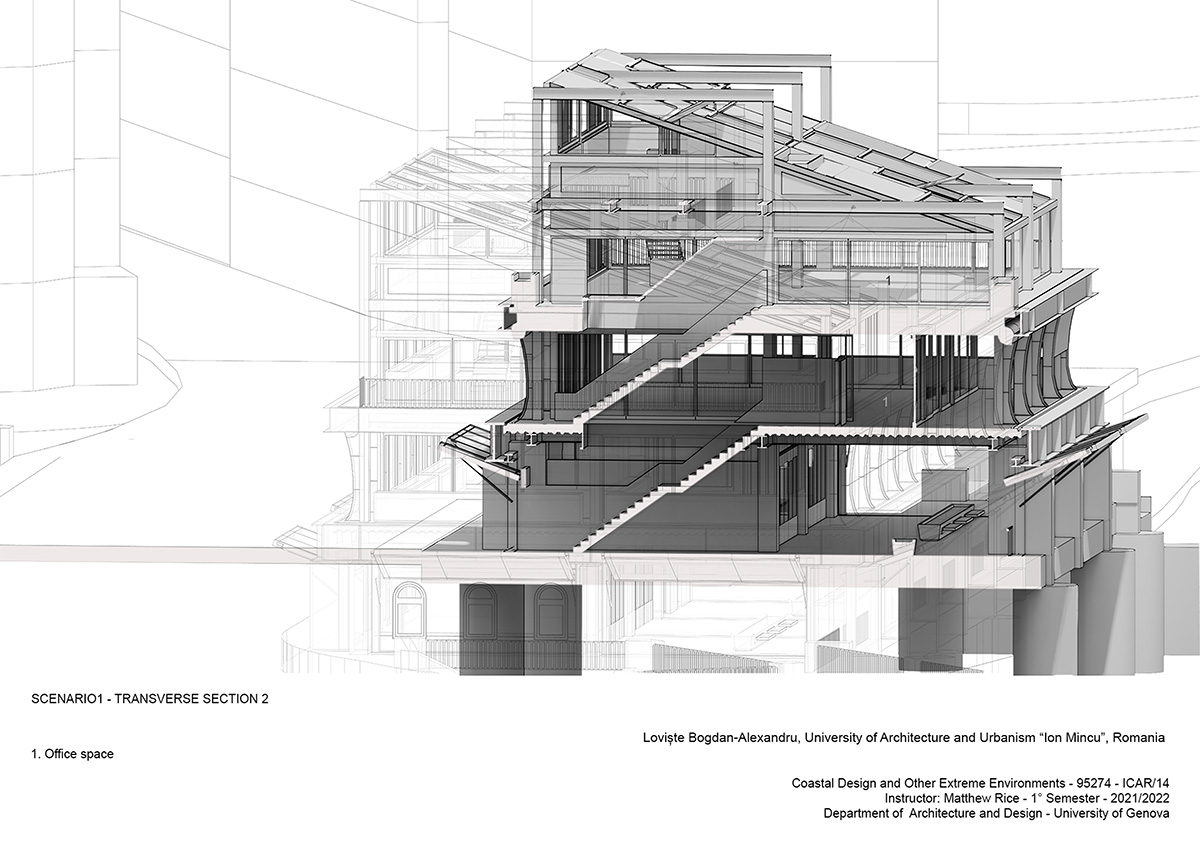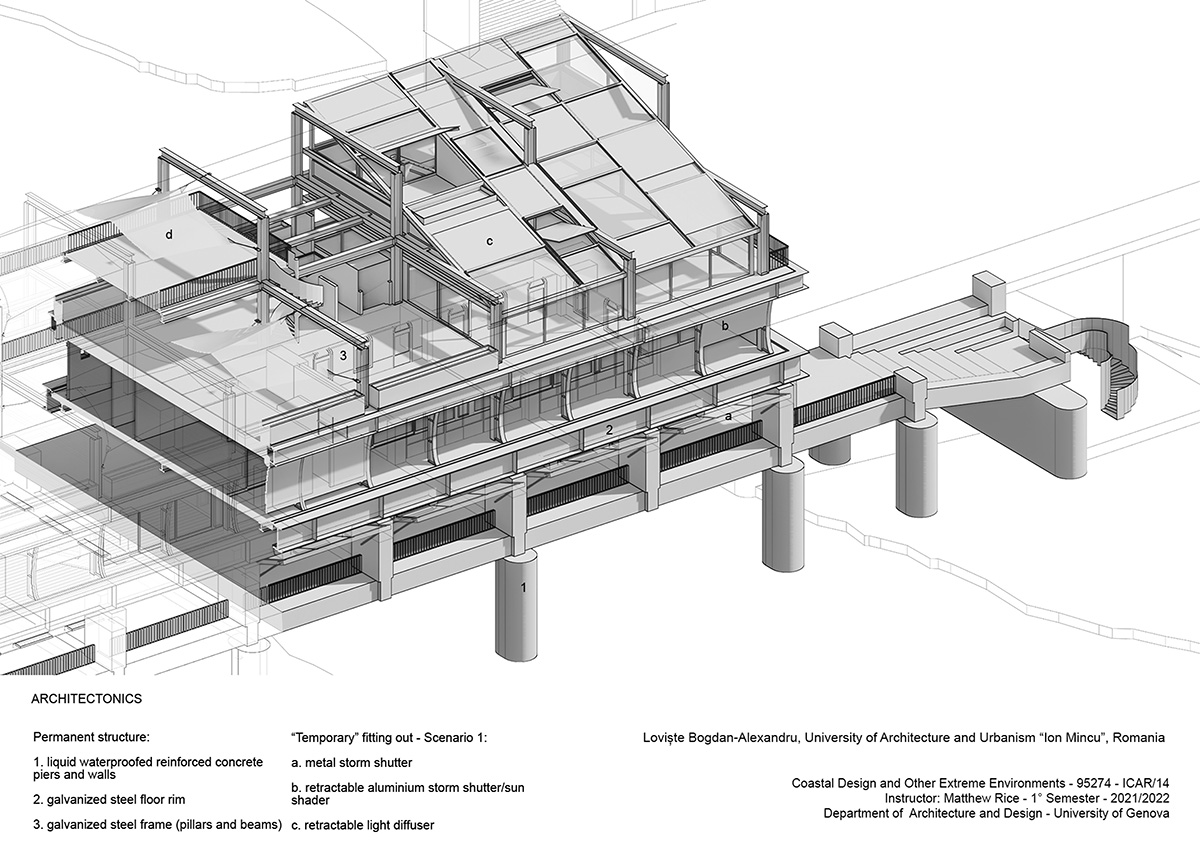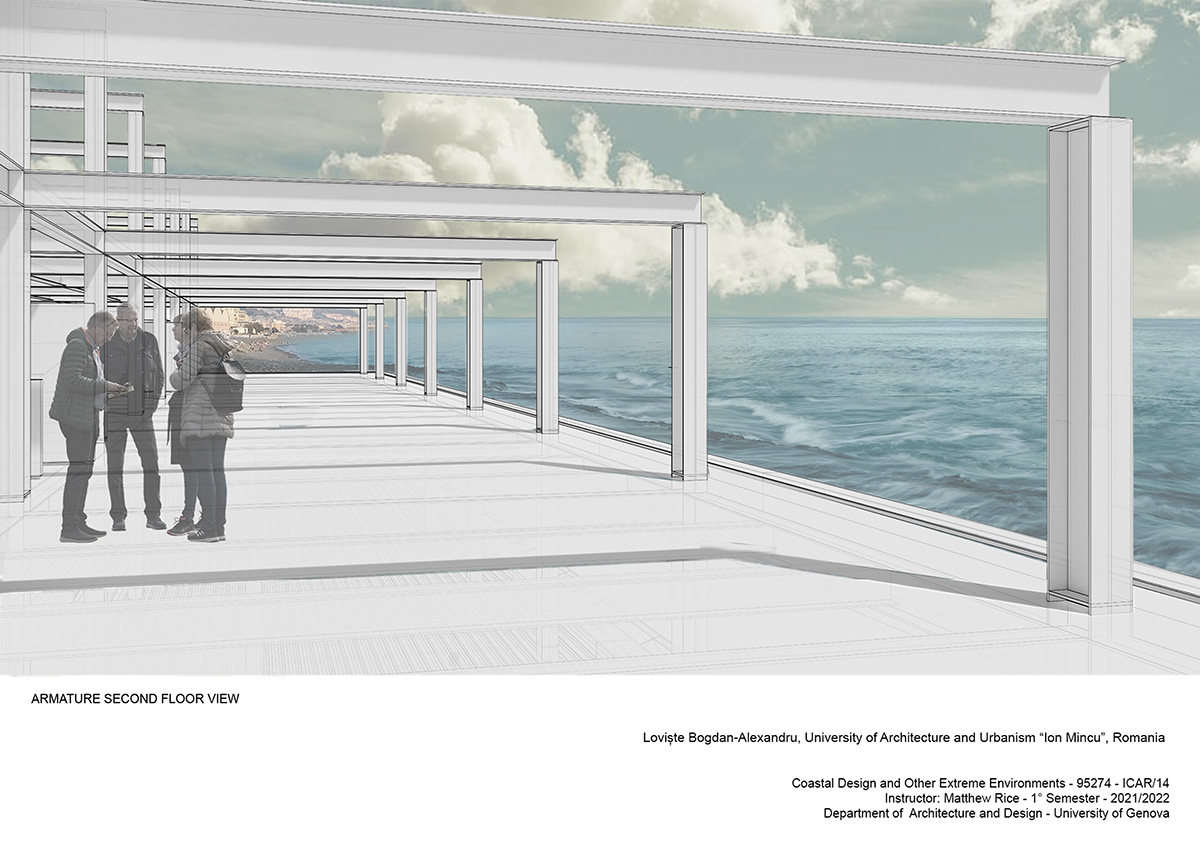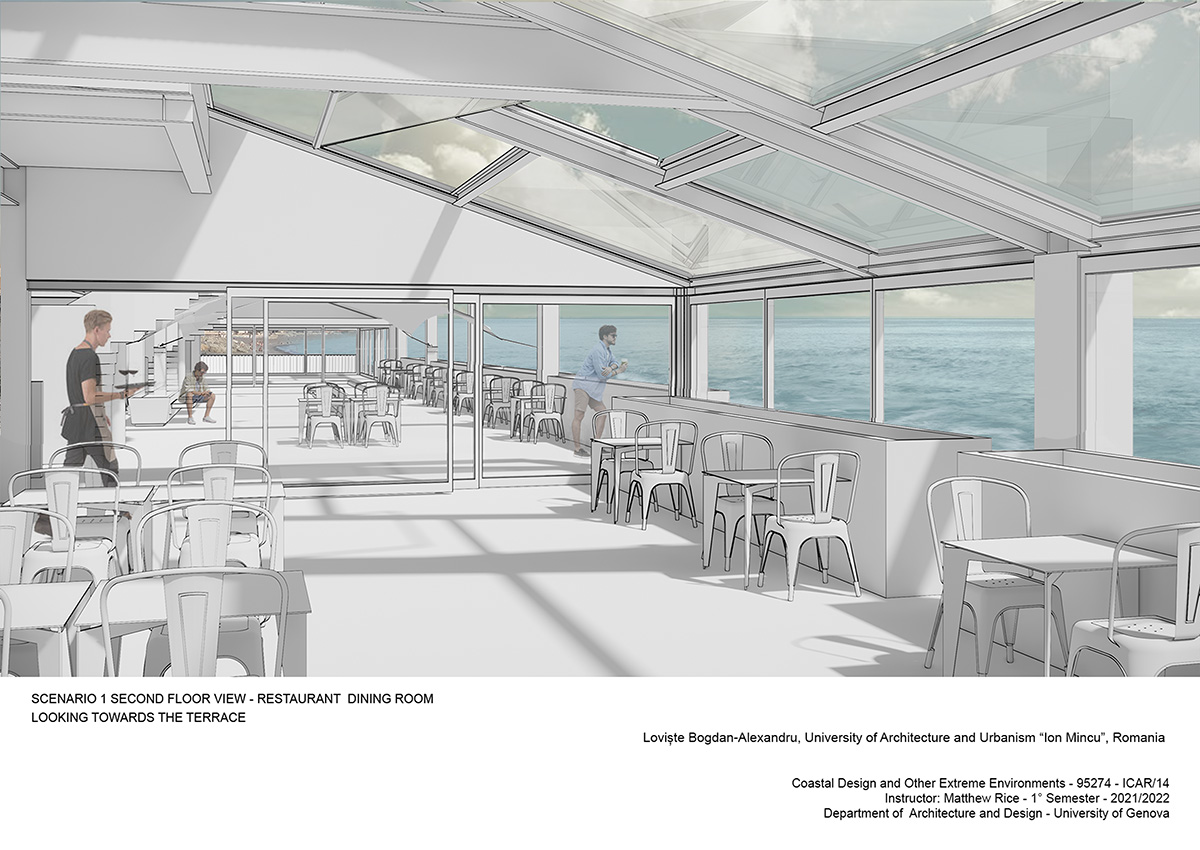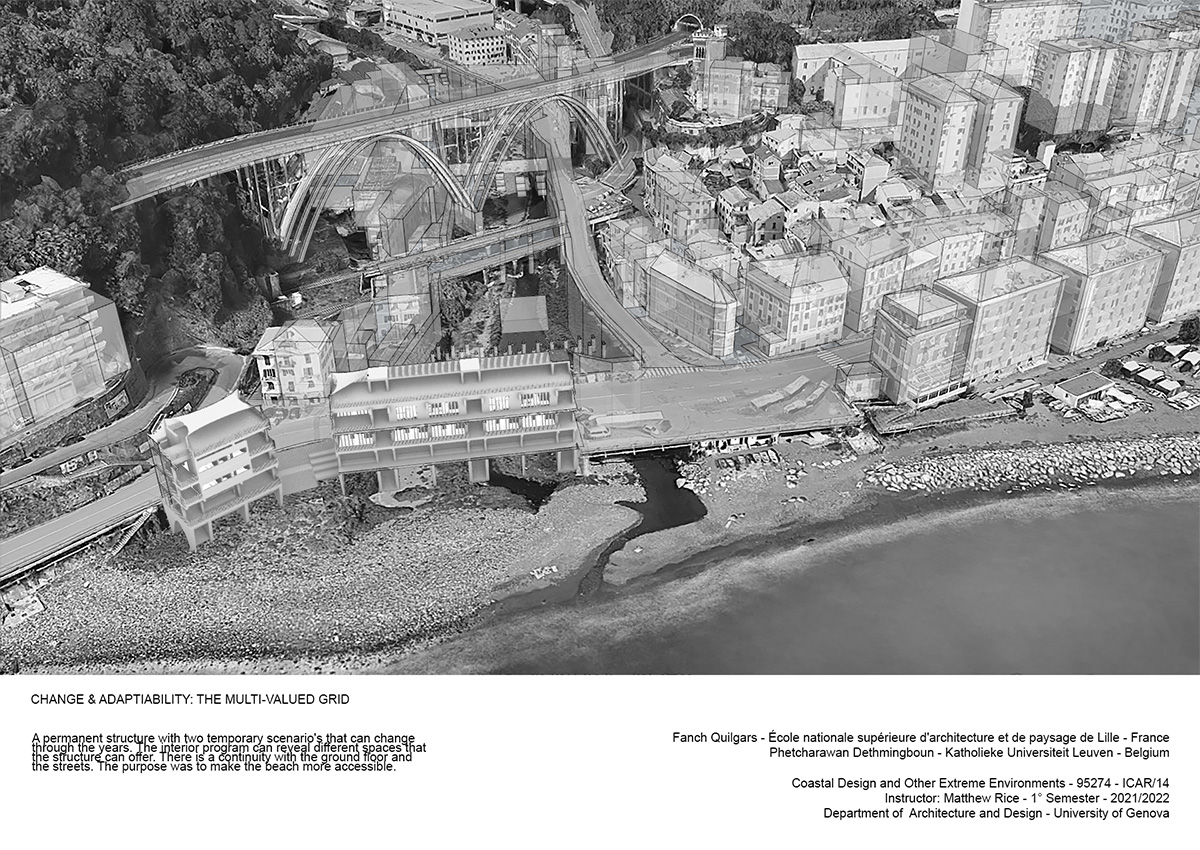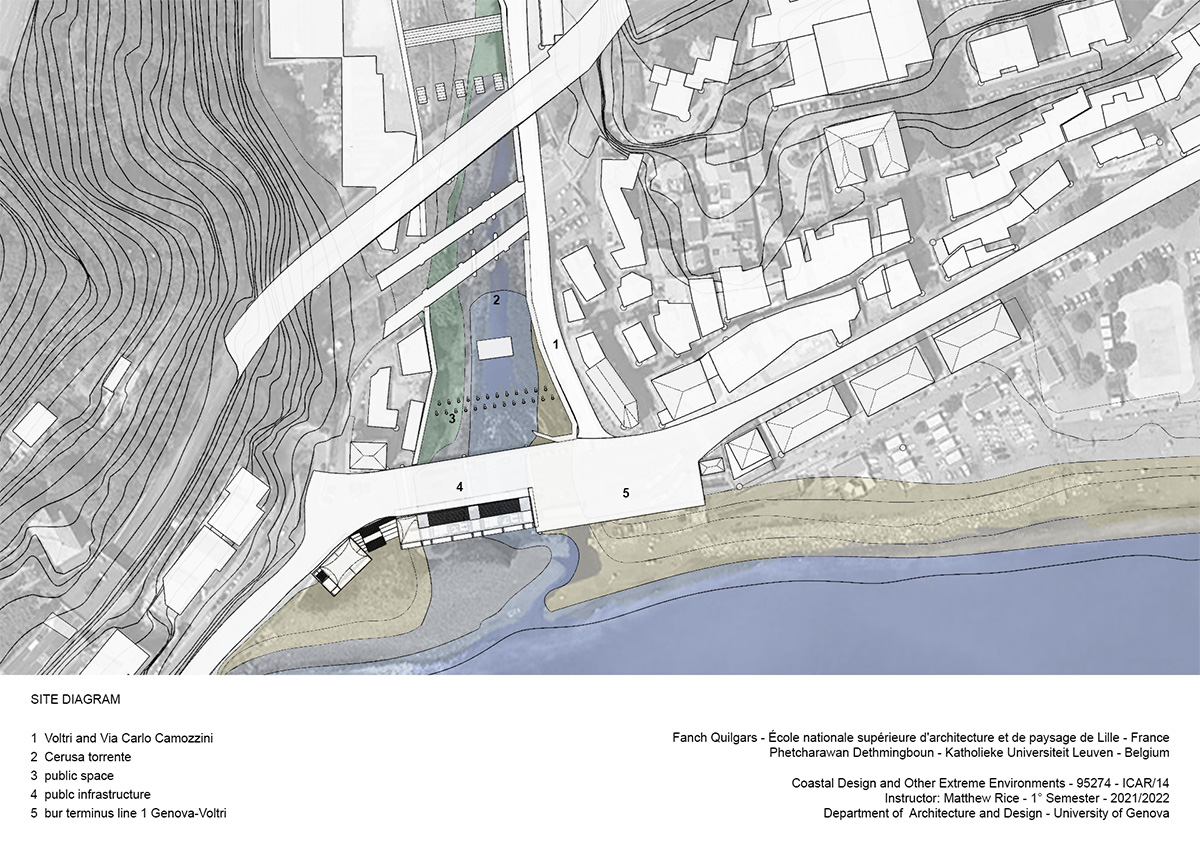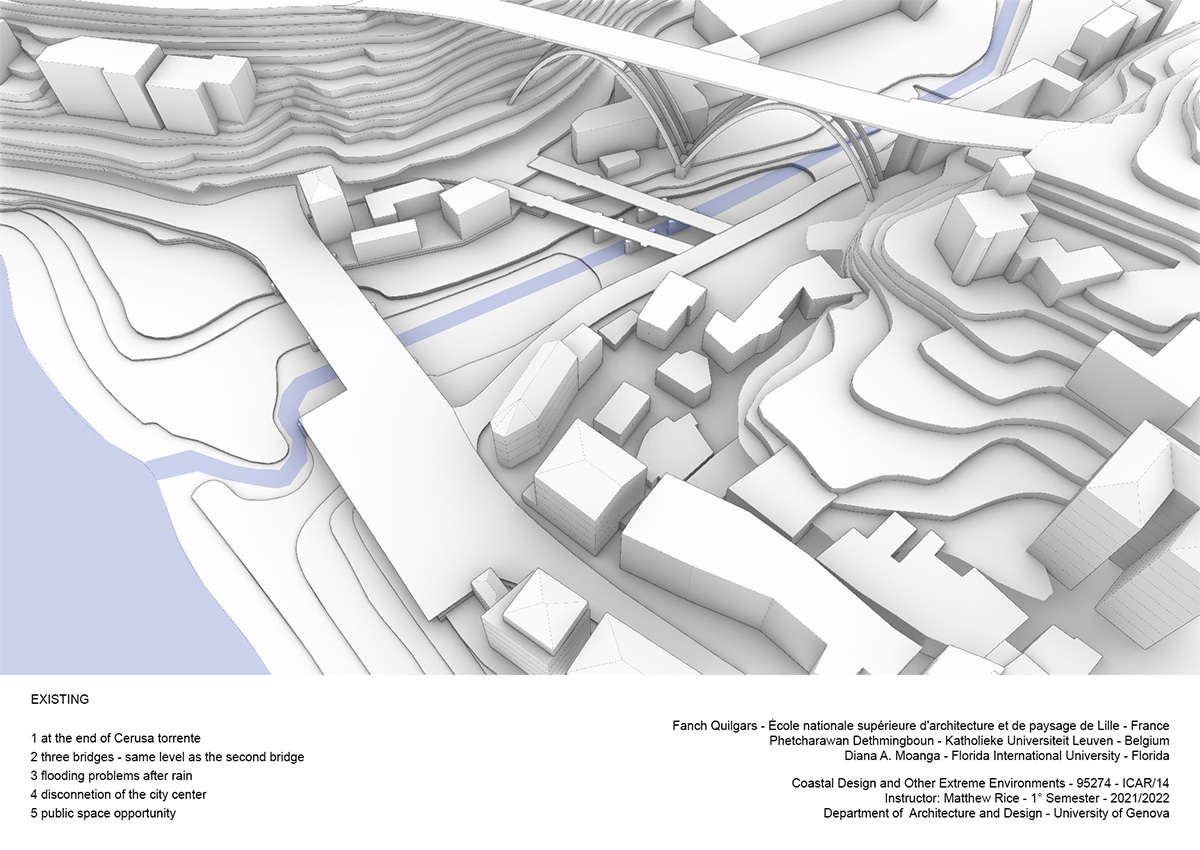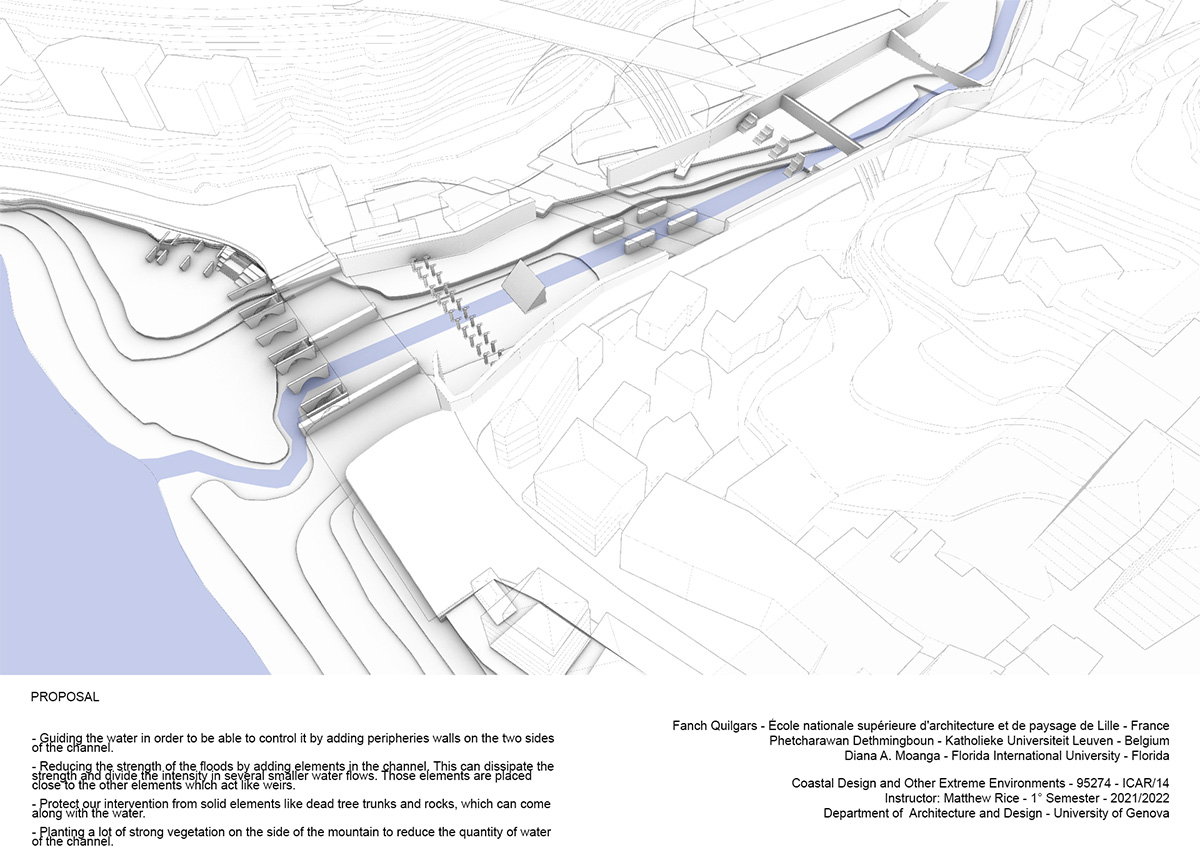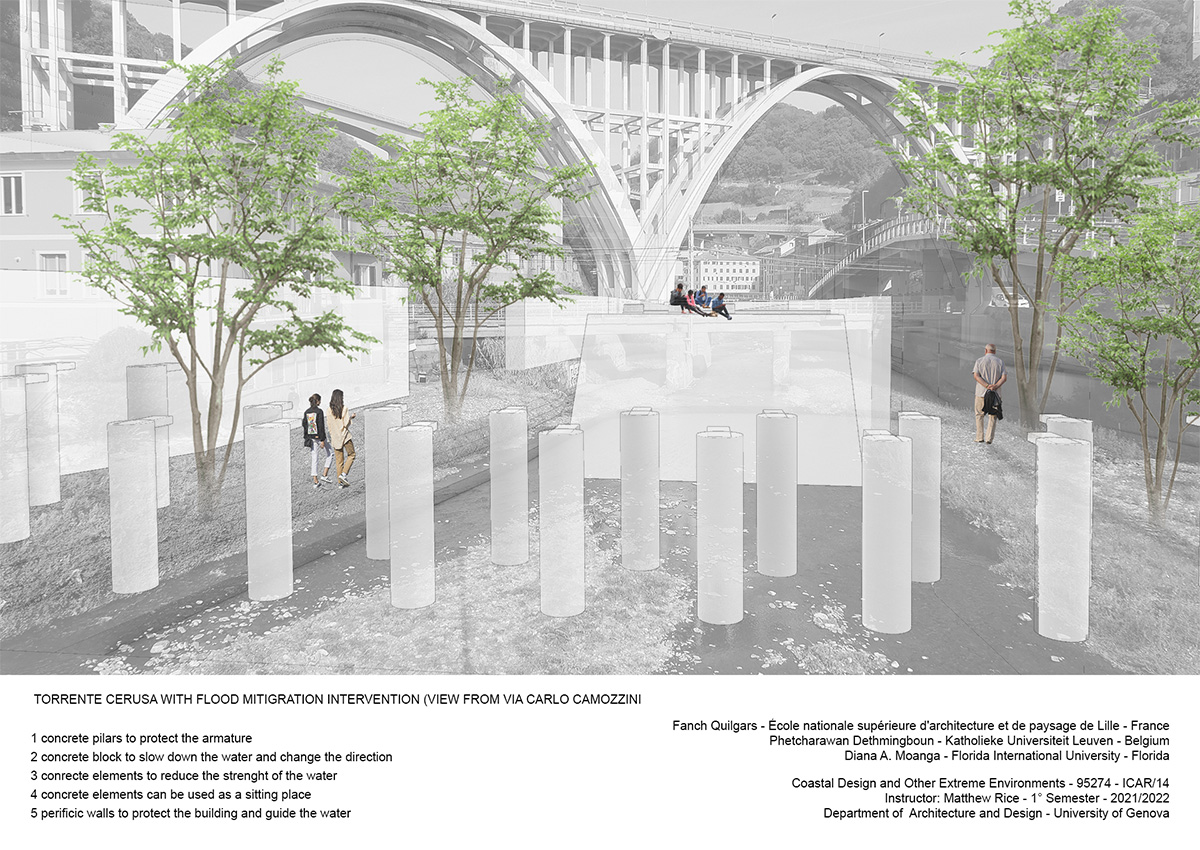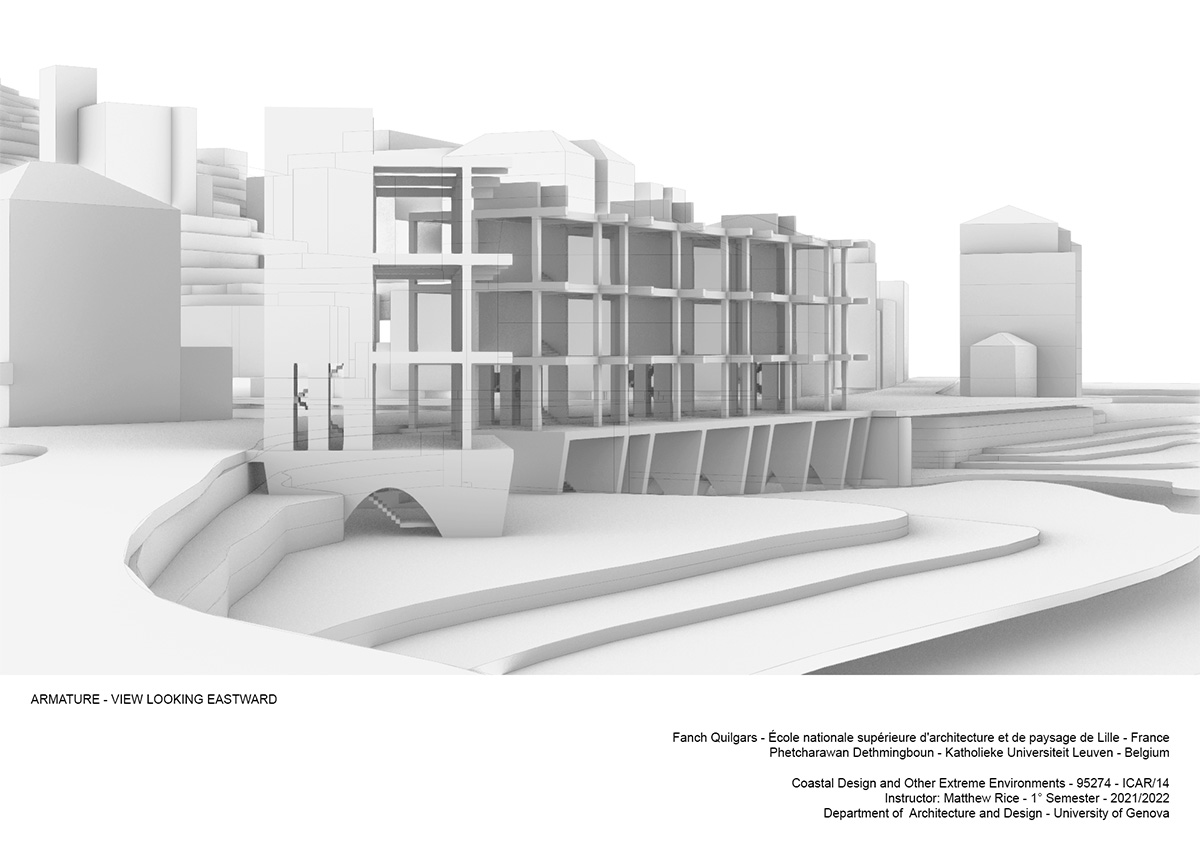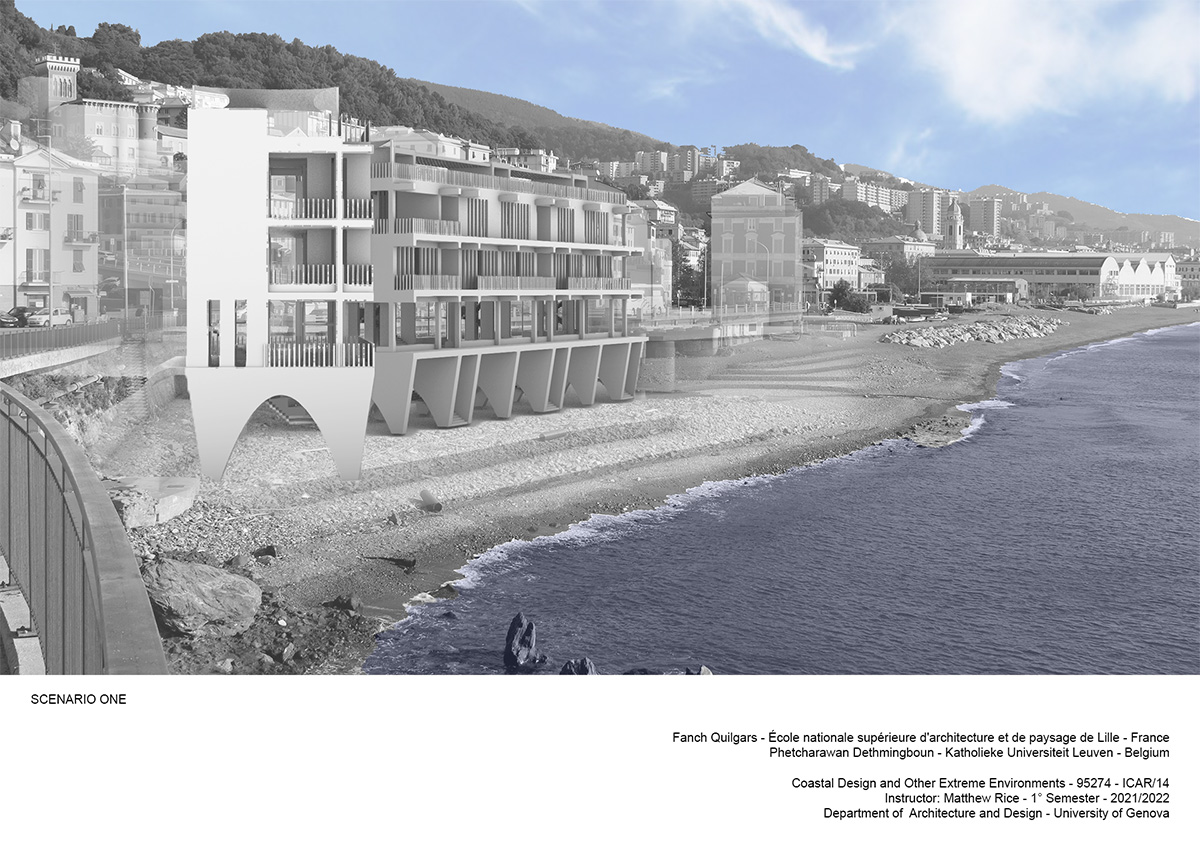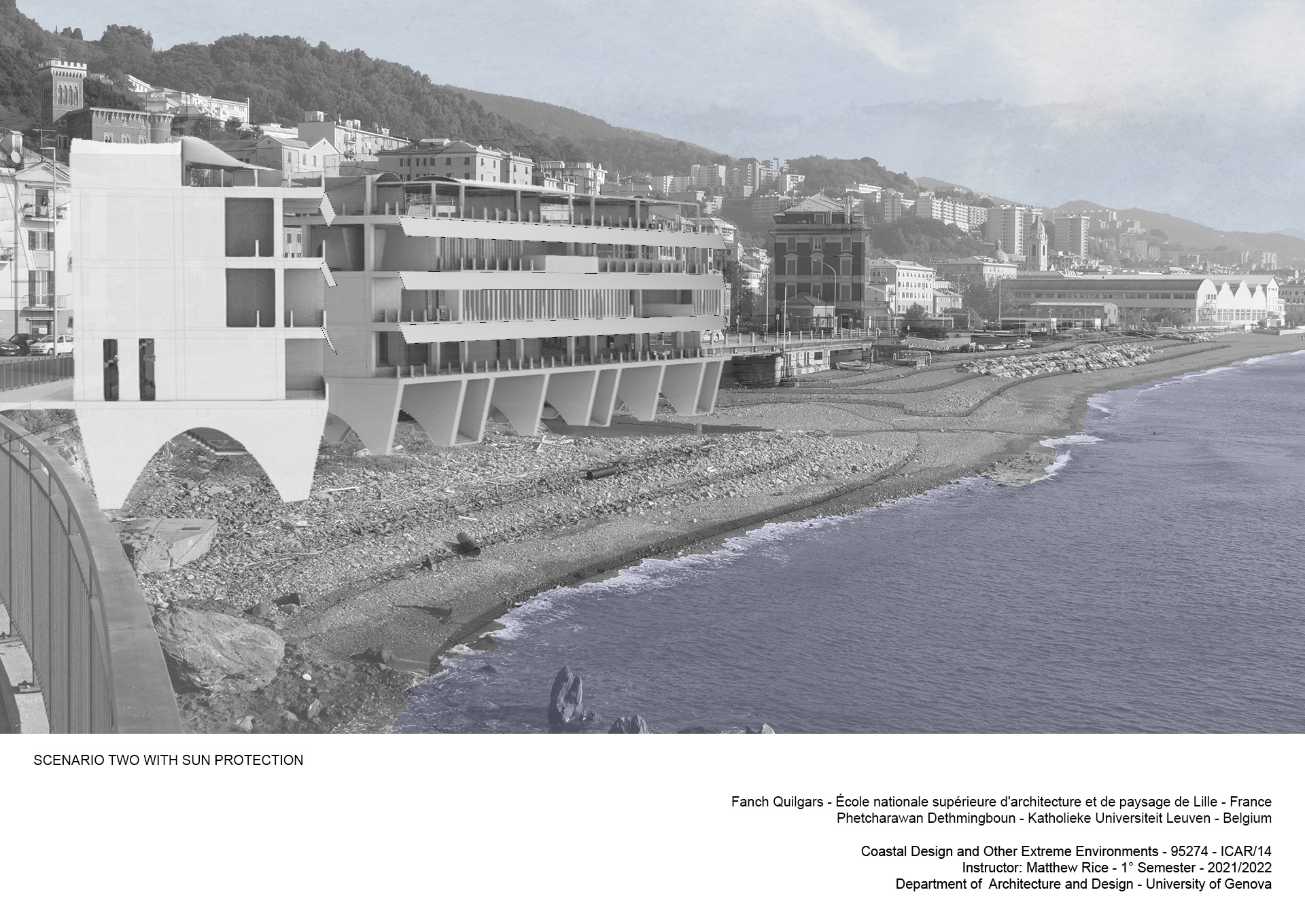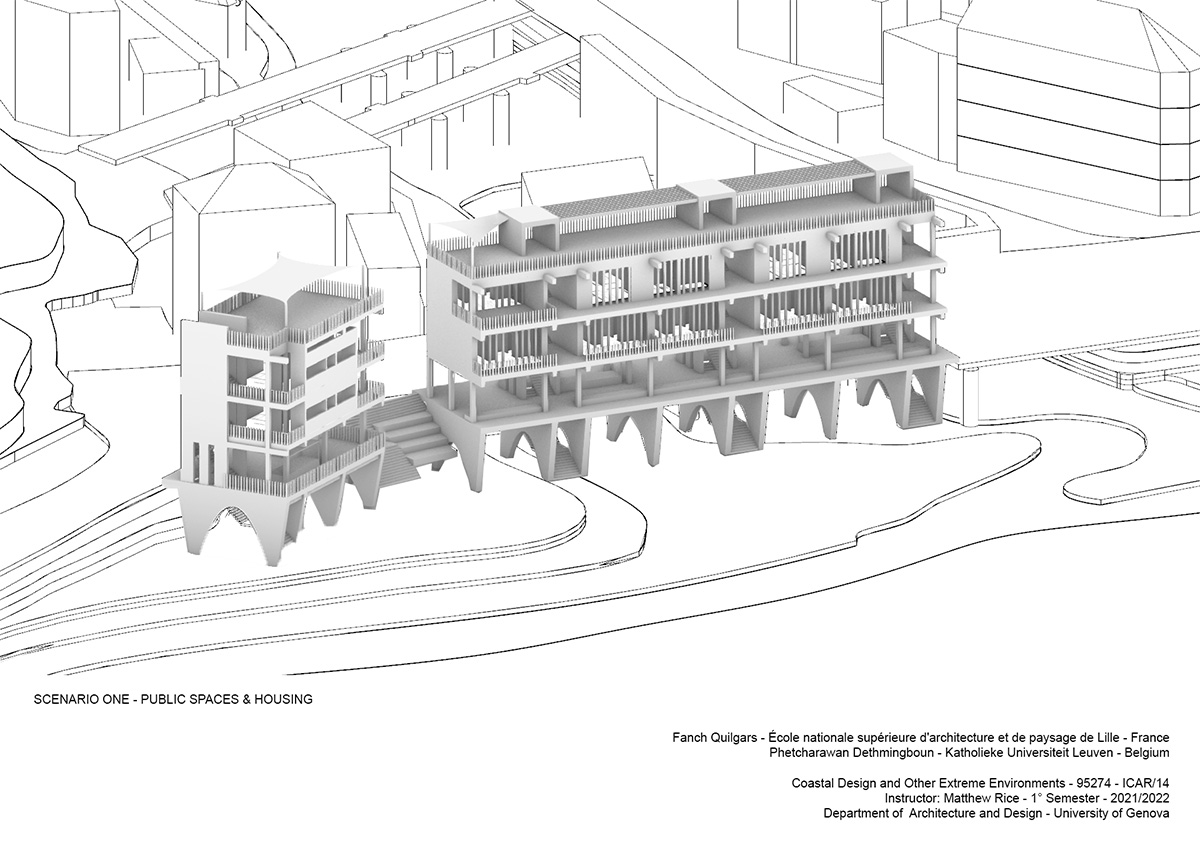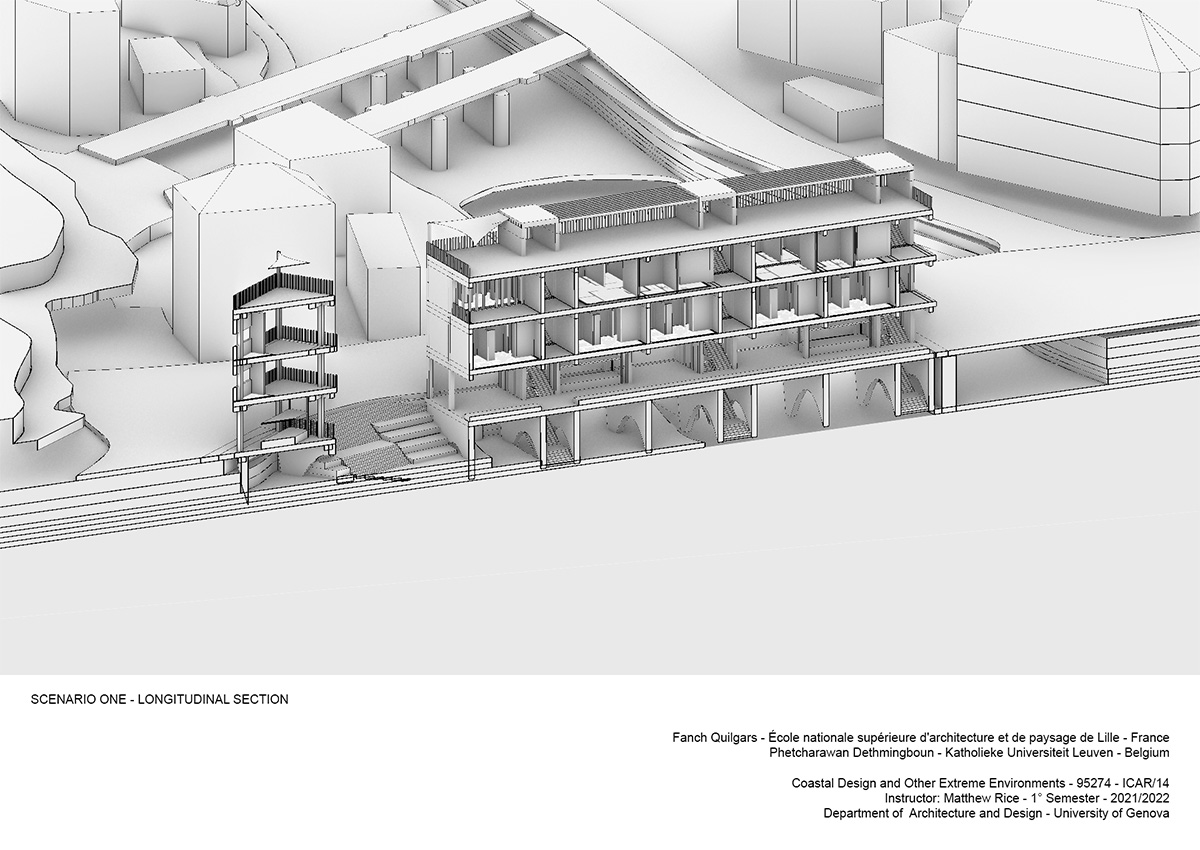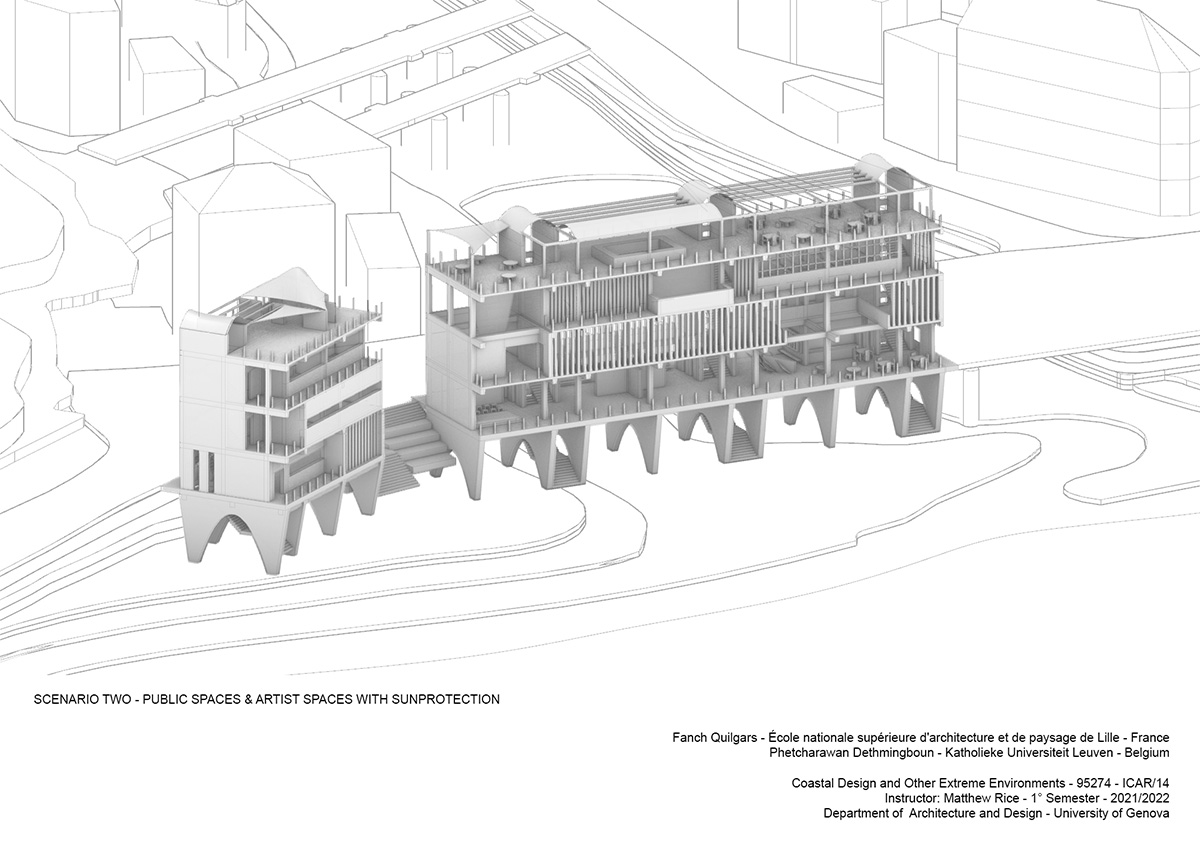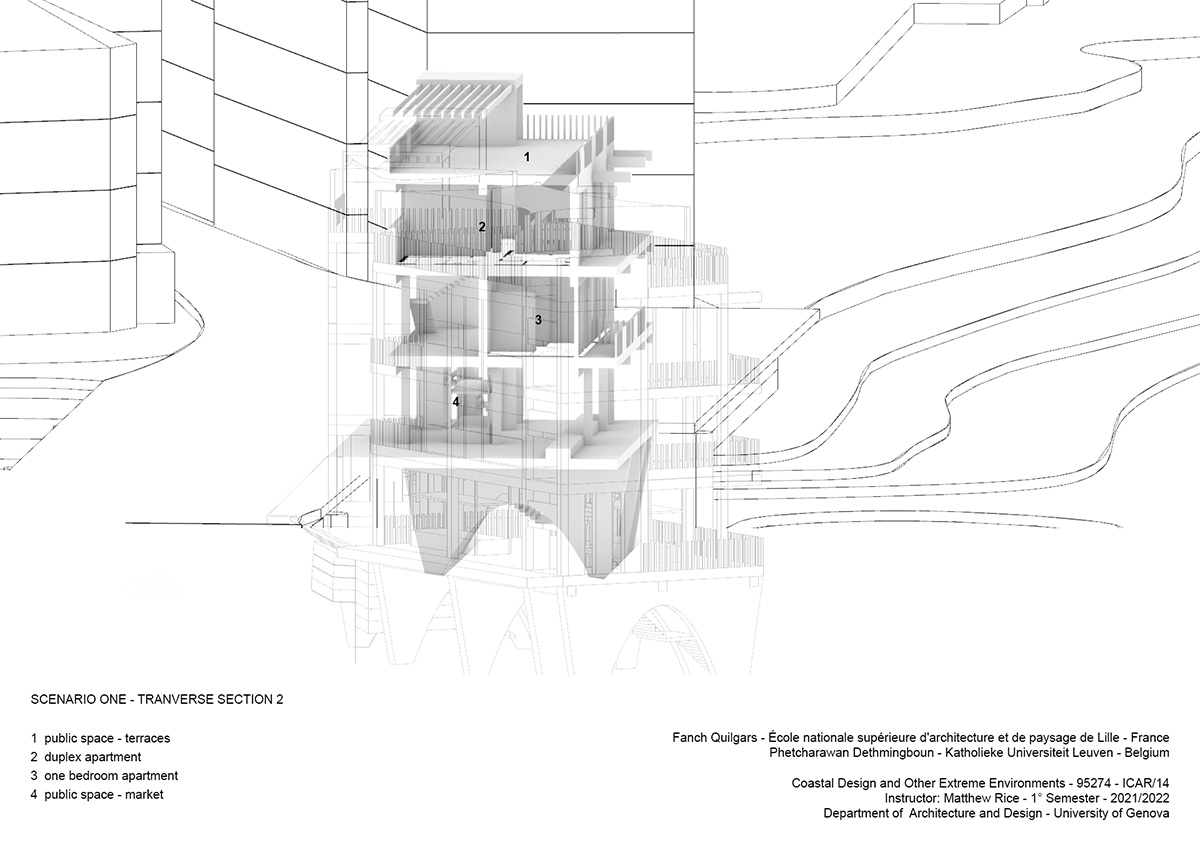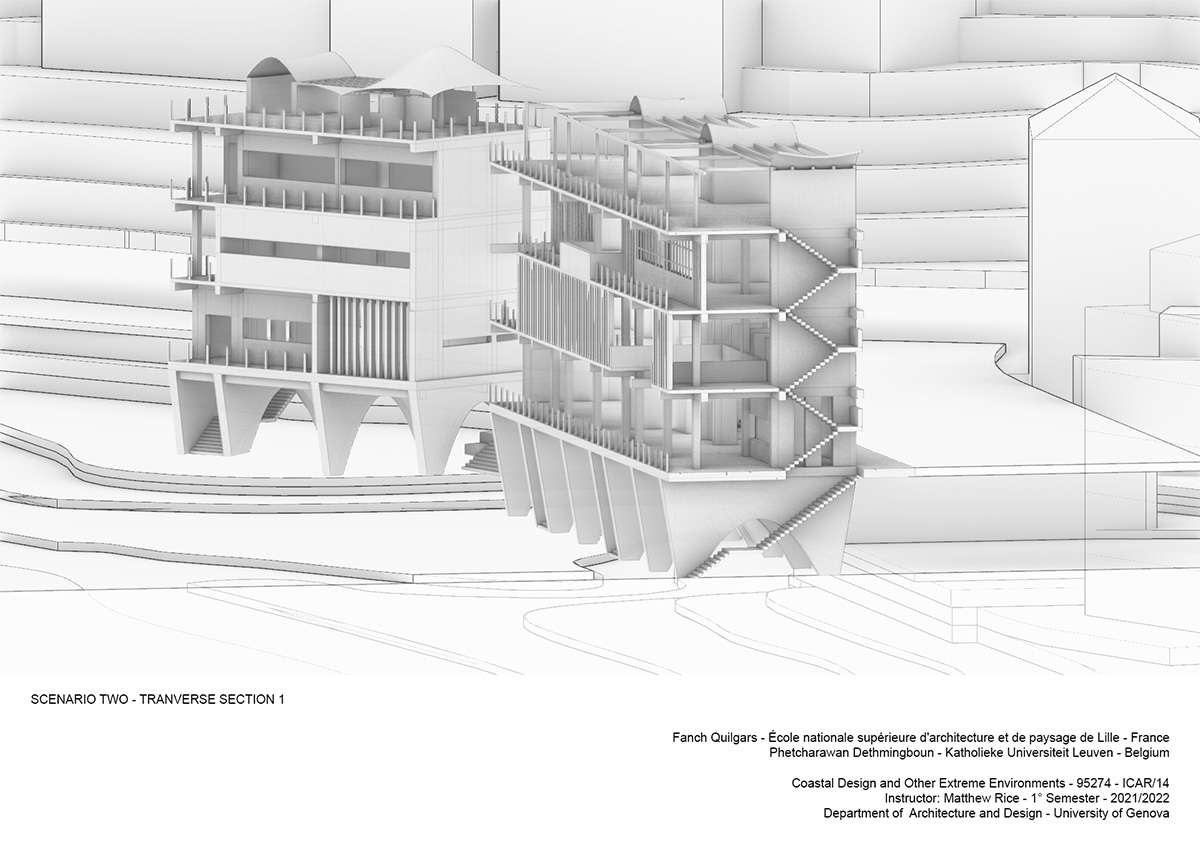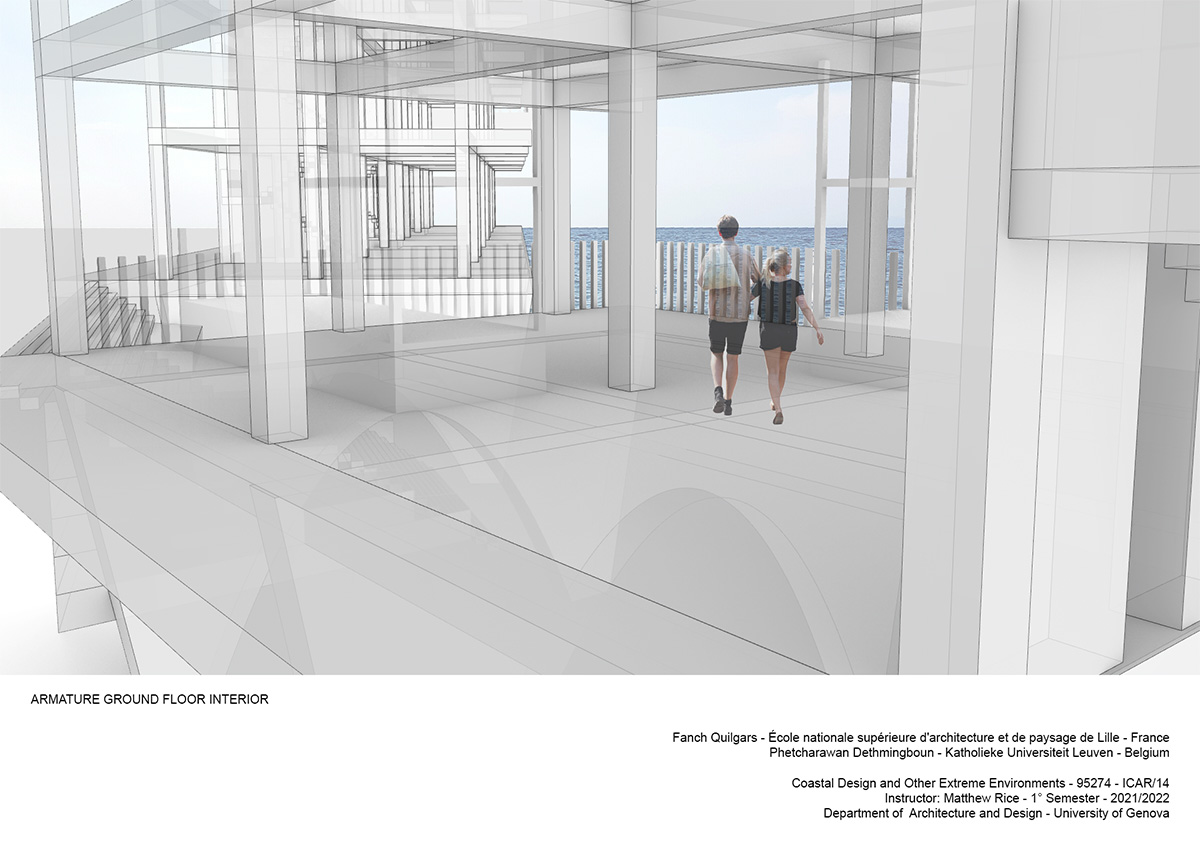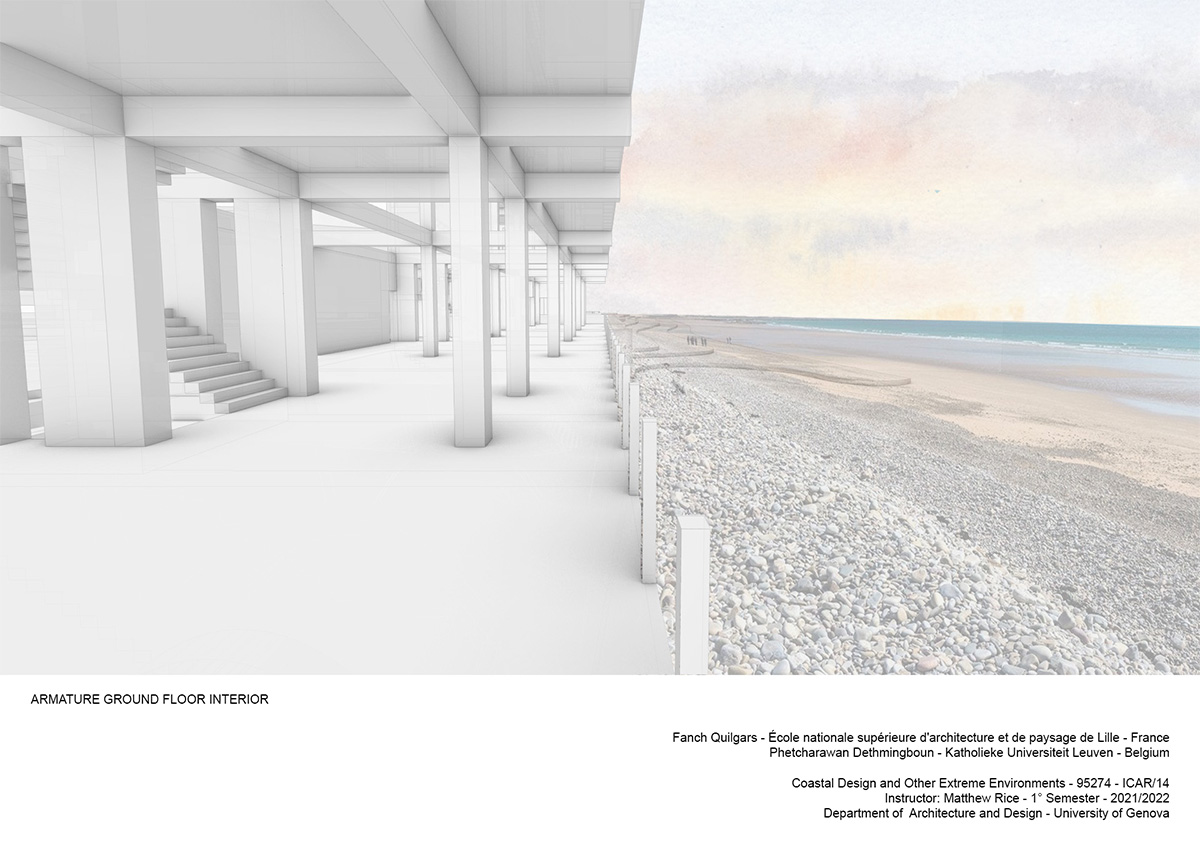Adaptable Architecture & Coastal Design Explorations for Changing Climatic Conditions and Living Patterns
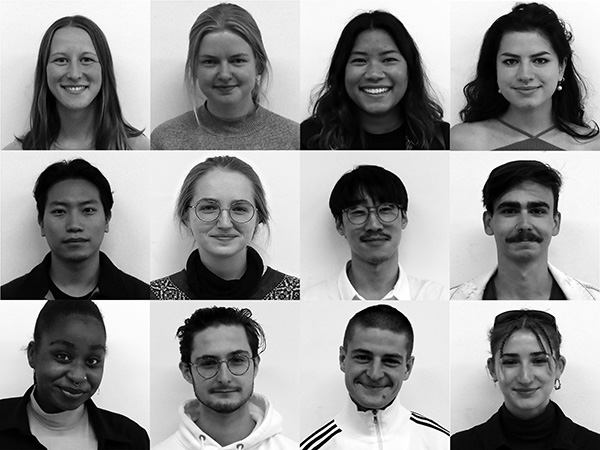


STUDIO PROJECT
The course Coastal Design and Other Extreme Environments - 95274 of the UniGe Department of Architecture + Design taught by FIU's Matthew Rice hosted twelve Erasmus students from Europe and South Korea. A coastal site was chosen on the periphery of Genova-Voltri to address public space and urban edge, a face to the sea which is experiencing increasingly high seas and winds, and flooding from heavy seasonal rains draining into the Cerusa channel.
The assignment was to develop an architectonic infra/structure to provide a permanent armature that could support various 'temporary' scenarios to accommodate changing patterns of urban life over time. A second component was to propose ways to mitigate the flooding in the Cerusa channel and to develop accessible public space in this underused area.
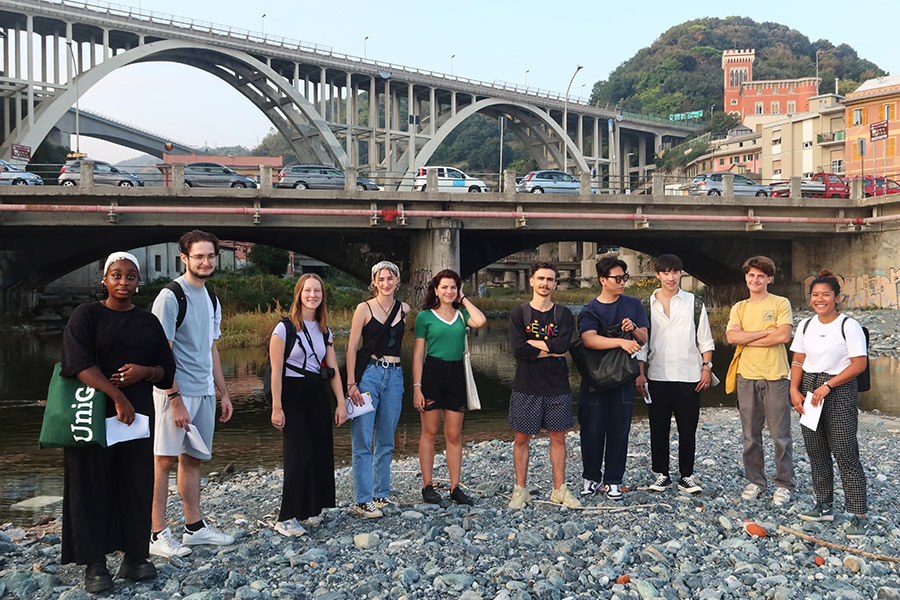
COLLABORATIVE ONLINE INTERNATIONAL LEARNING - COIL
Within the UniGe Coastal Design studio a COIL project was organized. To complement the knowledge of the UniGe Erasmus students and to address the conditions of the project and site, a group of Phd students of the FIU Department of Earth and Environment acted as consultants on matters of environmental response and flood mitigation. Two Erasmus students teamed with one FIU student and met online once a week for four weeks to discuss environmental aspects and the ongoing design work. There was also the opportunity for exchange at a personal level and sharing cultural perspectives.
Special thanks to Dr. Jayantha Obeysekera, Director of the Sea Level Solutions Center, and Dr. Mike Sukop, Professor, Department of Earth and Environment for their collaboration, and to Dr. Tiffany Troxler, Associate Director of Science, Sea Level Solutions Center for her presentation on environmental responses to climate change in the coastal conditions of Miami and South Florida.
REFLECTIONS ON COIL INTERACTION

Kaat Boon - KU Leuven - Belgium
Simina Haiduc - University of Architecture and Urbanism 'Ion Mincu' - Romania
Melinda Paduani - FIU Department of Earth & Environment - PhD student / COIL collaborator
Kaat & Simina
Melinda Paduani had a great influence on our thought process regarding the flood mitigation strategy. During just one hour per week that we spent talking about our project in Voltri, we learned many essential aspects about climate change and how people in Florida act in order to preserve the habitat and stop flooding. The advice Melinda gave us regarding our proposal taught us how to use eco-friendly and non-invasive techniques that not only help against flooding, but also enrich the local public space.
When it comes to the inter-cultural interaction, we usually took about ten minutes at the end of each session to talk about how our week went, to exchange photos and also discuss about our traditions and ways of living in each of our home countries. This was very interesting because we found a lot of differences and even though in the beginning it might have been a bit awkward. The conversations became very fluid and natural. Overall we loved meeting Melinda, we follow each other on social networks, so we can still see updates from each other's life :) And who knows maybe we will meet her in real life in the future?
Melinda
Simina and Kaat were extremely diligent and responsive in incorporating all of our respective expertise and all of our team meetings were interesting and organic brainstorming sessions. They were always very engaged and excited about the project, which in turn kept me engaged as well. We would frequently look up new examples and draw on the screen collaboratively to sketch out our ideas, building upon what the previous person proposed.
In terms of the interpersonal interaction, it was a pleasure working with both students. I really enjoyed hearing their perspectives on the ecology of their home countries and Italy. On top of learning some architectural things, I also got insight into the daily lifestyle of their respective cultures and how it differed/was similar to living in Italy. We also shared what we did in the previous week, including fun adventures, and our favorite foods that represented our cultures. Each meeting was always full of great conversation.

Naoumy Mmadi & Maxence Poirer - EVA&T Paris-Est - France
Miguel Valencia - FIU Department of Earth & Environment - PhD student / COIL collaborator
Naoumy & Maxence
Both of us enjoyed this short experience with this nice student. In terms of expertise, he was aware to give us the best explanation and advice about flood mitigation. Moreover, he showed us different public strategies to create a solution in relationship with landscape design.
Miguel is someone that clearly wants to give us freedom in our ideas. We worked together and were not influenced by him, it was just discussion. The methodology was pleasant because we tried to know each other and improve our skills in terms of the environment. We shared our cultures and discovered the diversity of Colombia. Finally, he invited us to visit Miami.

Donghyuk Kang & Hanul Lee - Hangyang University - South Korea
Martina Rogers - FIU Department of Earth & Environment - PhD student / COIL project collaborator
Donghyuk & Hanul
It was amazing experience that we can discuss the same issue with people from a different field, and also could understand clearly that architects cannot work alone.

Ella Buesse & Kristin Kegel - Gottfried Wilhelm Leibniz University of Hannover - Germany
Francisco Pena Guerra - FIU Department of Earth & Environment - PhD student / COIL project collaborator
Ella & Kristin
During our weekly meetings with Francisco Pena Guerra, he shared his ideas on how to deal with floodings in the Cerusa channel with us. Most importantly, he suggested to widen the riverbed through trenching in order to increase the water capacity of the channel. In addition to that, planting locally occurring vegetation on the sides of the river would help reduce run-off in case of flooding, as well as reduce the water velocity. By taking an example from other projects, he introduced us to the idea of a flood park that could not only help reduce flooding, but also serve as a new public space that benefits local residents and visitors.
Francisco has been a very friendly and laid-back collaboration partner for us. In between family celebrations and him being in the process of defending his PhD thesis, he took time to discuss our project with us every week as well as tell us about his projects. For Kristin and me, it was a rewarding experience to get in touch with him and see this project from his perspective.
Francisco
Thank you for allowing me to be part of this great international experience. Ella and Kristin were great. They were dedicated to their project, did their homework and prepared for our calls.

Bogdan-Alexandru Loviste - University of Architecture and Urbanism 'Ion Mincu'- Romania
Elien Vanhamel - KU Leuven - Belgium
Monica Cardona - FIU Department of Earth & Environment - PhD student / COIL collaborator
Elien
Monica gave us a lot of documents to read, but they really opened the possibilities to keep certain strategies in mind if I ever come in contact with flooding areas while working as an architect. We talked about mangroves, rain gardens, weirs and I never heard about these terms before so my knowledge grew a lot thanks to Monica's input.
It was very pleasant to talk to her, she was very kind and although she is on the other side of the world and living a totally different life, we really made a connection through working on the project together. She also told me I could always contact her if we needed advice about extreme weather etc and that, in case I will ever be nearby, I can contact her to drink a coffee together. Making this new contact felt very good, although I will maybe never meet her in real life, we'll see.
Bogdan
Although I can’t say we discussed cultural or personal things as other groups did, and since we strictly discussed work, floods and strategies, I can say that it gave me a new perspective in combating these kinds of situations. I learned a lot and I found interesting the things she does as a job. For me this experience was very valuable, just like the opportunity to be here....
Monica
The final structure design incorporated some of the elements addressed during the interchange as flood mitigation proposals, as they were able to include some structural alternatives along with more bio-engineering and natural solutions elements as part of the overall concept of new architectural, structural, and urban planning concepts while engaging in the definition of community reliance on the effects of climate change.
Both students were diligent while covering and reviewing the suggested materials. They were able to help with all the related concepts. They both complemented each other's work with the structure's urban design set and the potential solutions to address flooding risk in the community.
Both students have a questioning attitude and inquire about scientific hydraulic and hydrology concepts and more specific aspects related to their own line of work, such as the type of materials and examples of mitigation technicalities in construction currently utilized in the USA and which can be incorporated in other regions.

Phetcharawan Dethmingboun - Katholieke Universiteit Leuven - Belgium
Fanch Quilgans - École nationale supérieure d'architecture et de paysage de Lille - France
Diana Moanga - FIU Department of Earth & Environment - Postdoctoral Researcher / COIL collaborator
Fanch & Phetcha
Diana helped us with questions we had about flooding in general and she advised us on what would be the best way to protect our structure. We didn’t go into detail about the different solutions but we had a more conceptual approach with her and it was really interesting. She was very interested in our project and wanted weekly updates, so it was good to see that she was active in our group. She gave us reference projects to study while she was looking at the theoretical part.
Regarding the social point, we think it was really interesting and rewarding to discuss environmental problems and flooding.... It was the first time we worked on an architectural project with someone from a different country and studying a different subject. It is curious to know that we just met because of this studio of coastal design, but it is also underlined the fact that people from different fields can work together on a project for a common aim.
Diana
I really enjoyed being part of the FIU – University of Genoa collaboration, and it was a pleasure working with Phetcha and Fanch. They were both very enthusiastic, energetic, and very knowledgeable. I was genuinely impressed by their design and their distinct knowledge of the architectural principles, and their knowledge of the Voltri site study area….
During our weekly meetings we discussed and researched ways to slow the speed of the water flow, and we talked about ways to adapt the design to changing tides, storm surges, and rising sea levels. Fanch had some innovative ideas on installing concrete barriers on the mountains to slow the rain runoff and mitigate some of the flooding that the area has been experiencing. Thinking about ways to reduce flood risk while also slowing the river flow, I initially suggested nature-based solutions along with green, green-gray or hybrid infrastructure....
Reflecting on the experience, I can truly say that I learned a lot from the intercultural interaction, and that I was happy to be involved in the project collaboration. Since I am originally from Romania, it was nice talking to other students from Europe (France and Belgium)…. All in all, I thoroughly enjoyed interacting with the University of Genoa students, learning new concepts, and researching new topics. They were always happy and in a good mood, always with a smile on their face, and radiating positive energy. This is probably the part that I cherished the most.... I am very thankful to have been included in the FIU - Genoa collaboration.
THE PROJECTS
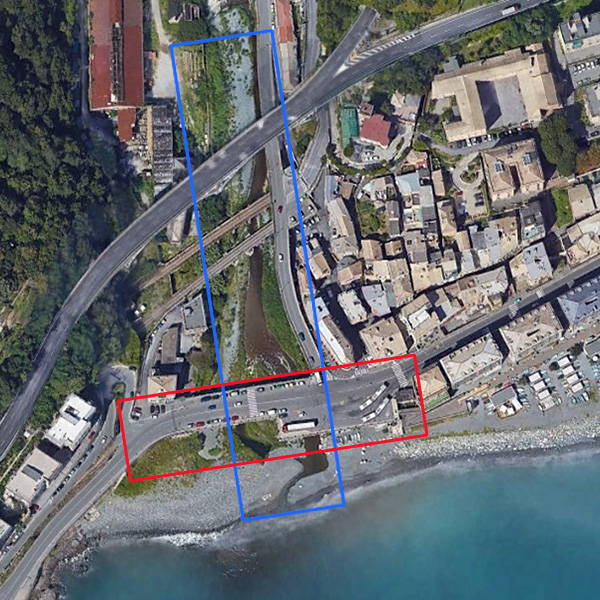
SITE & PROJECT
The architectural proposal (red rectangle) calls for a durable architectonic structure for flexible public use that is adaptable over time for changing uses as well as reducing the need for new construction. Each project proposes different scenarios (present and future) of 'fitting-out' with alternative facades/skins, interior partitions or inserted floors, as well as strategies of protection from sun and high seas and winds.
The Cerusa channel (blue rectangle) is the area of seasonal flooding that is to receive an intervention to reduce or control flooding at peak times, and offer public space during the dry season.
ARCHITECTURE OF ADAPTABILITY
The studio promotes adaptability in architecture to embrace change, alteration, and modification. This is to address environmental and climate change and also social and cultural changes in patterns of life. This is an alternative to 'program'-driven, mono-functional buildings with a short-term lifespan which are difficult to change and are quickly obsolete, requiring extensive modification or demolition. We propose architectonic structures that are designed to accommodate changing scenarios of use and ‘fitting-out’. This is a step toward environmental responsibility and also a lesson in the (relatively) ‘permanent’ and ‘changing’ aspects of life and building.
FLOOD MITIGATION STRATEGIES (reducing water velocity)
- Increasing the width of the channel
- Reshaping the channel into a sinuous or curving line
- Adding obstructions or deflectors
- Using weirs (or similar elements) to retain water
- Adding a conduit to the sea to draw off excess water level and reduce water volume or load on principal channel mouth
Another aspect is to reduce water runoff from the hills with additional planting or terracing’, but this was outside the study area and not specifically addressed in the student proposals.
